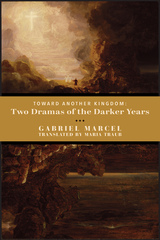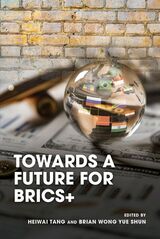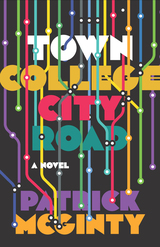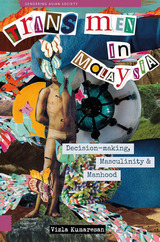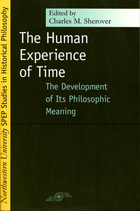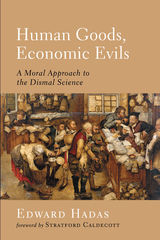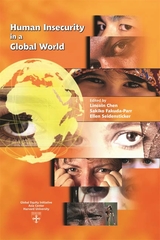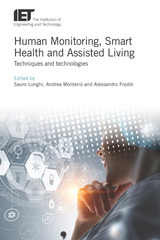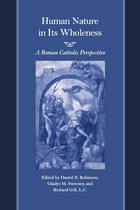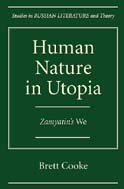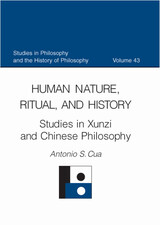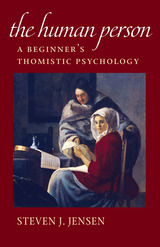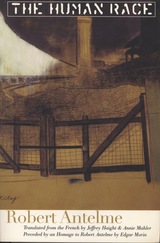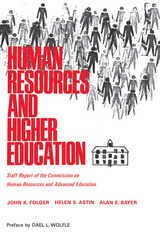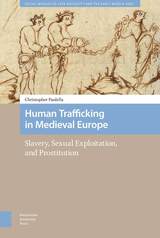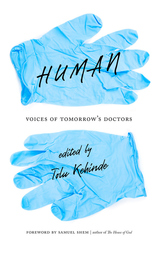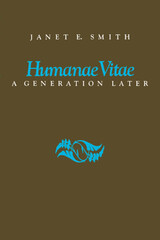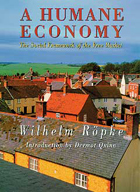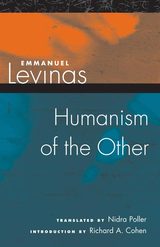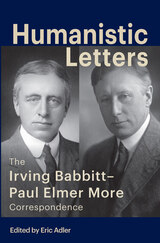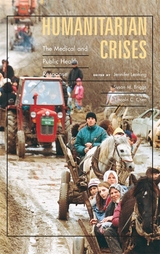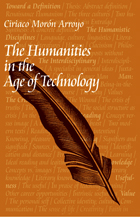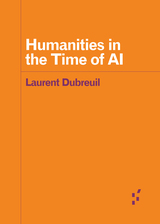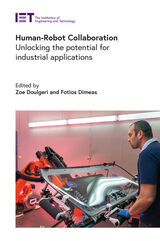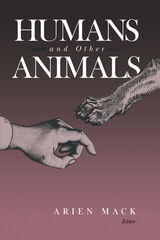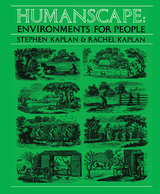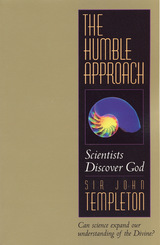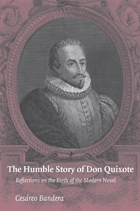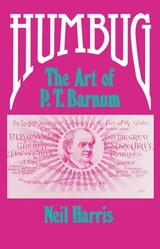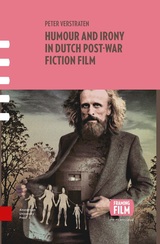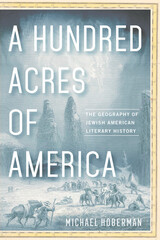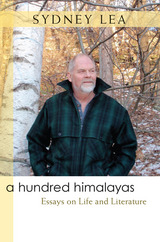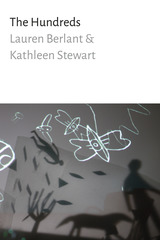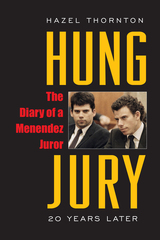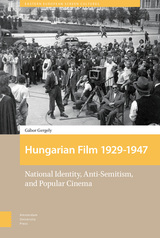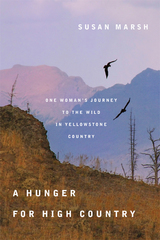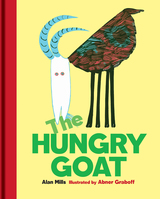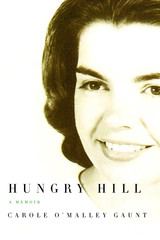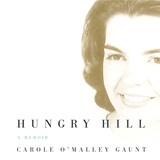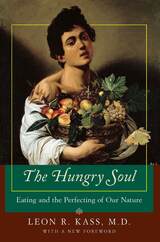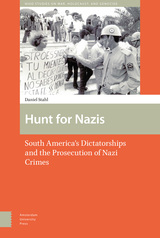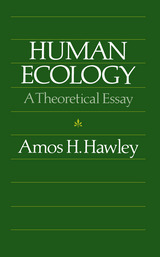 Human Ecology: A Theoretical Essay
Amos H. Hawley
University of Chicago Press, 1986 Human Ecology: A Theoretical Essay, by Amos Hawley, presents for the first time a unified theory of human ecology by a scholar whose name is virtually synonymous with the discipline.
Focused on the interaction between society and environment, human ecology is an attempt to deal holistically with the phenomenon of human organization. Beginning in the first quarter of the century, sociologists such as Park, Burgess, and McKenzie developed the study of human ecology to account for the dynamics of change in American cities. Over time, theorists have reached beyond the boundaries of sociology, drawing on the findings of economics, political science, anthropology, and bioecology, to understand the relationship of human beings to their environment. Hawley has successfully integrated the scattered theses of this wide-ranging discipline into a schematic whole.
The early human ecologists seized on the analogy of plant communities as a way of understanding urban communities. Hawley here maintains that the most important contribution to human ecology of the lexicons of plant and animal ecologies is the perspective of collective life as an adaptive process consisting in an interaction of environment, population, and organization. From the adaptive profess, he argues, emerges the ecosystem, a concept that serves as a common denominator for bioecology and human ecology.
Hawley has codified the theory of human ecology by a set of deductive hypotheses that establish its claims to coherence and comprehensiveness. His model charts a synthesis of ecological concepts ranging from adaptation and equilibrium through growth in temporal and spatial dimensions to convergence and openness. The essay underscores the critical importance of transportation and communication technology to the shaping of the human ecological system.
Human Ecology brings concision and elegance to this holistic perspective and will serve as a point of reference and orientation for anyone interested in the powers and scope of the ecological approach.
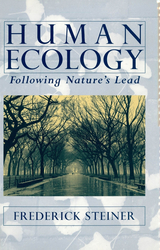 Human Ecology: Following Nature's Lead
Frederick Steiner; Foreword by Richard T.T. Forman
Island Press, 2002 Human ecology is an emerging discipline that studies the interrelationships between humans and their environment, drawing on insights from biology, sociology, anthropology, geography, engineering, architecture, landscape architecture, planning, and conservation. A vast, multidisciplinary literature underscores this approach, and in Human Ecology, noted landscape planner Frederick Steiner synthesizes the work of diverse, sometimes divergent, scholars to illustrate how human interactions can be understood as ecological relationships, using hierarchy as an organizing device. Steiner builds on the work of leading thinkers including Christopher Alexander, William Cronon, Clifford Geertz, James Lovelock, Eugene Odum, Paul Shepard, Anne Whiston Spirn, E. O. Wilson, Gerald Young, and many others to present a historical and analytical examination of how humans interact with each other as well as with other organisms and their surroundings. The first two chapters summarize the development of this "new ecology" and the theory of human ecology. The remainder of the book provides an accessible introduction to the major elements of human ecological theory including language, culture, and technology; structure, function, and change; edges and boundaries; interaction, integration, and institution; diversity; and adaptation. The chapters are organized hierarchically from the smallest scale to the largest with each chapter addressing a specific level as an ecosystem. The final chapter probes some of the ethical implications of this new field. Human Ecology brings together for the first time scholarship from the social and natural sciences as well as the environmental design arts to offer an overview of the field of human ecology and to show how the field may help us to envision our futures. While the approach is largely theoretical, it has broad policy and practical implications, and represents an important new work for anyone concerned with interactions between humans and the environment.
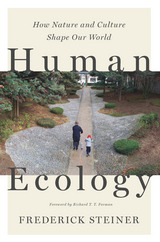 Human Ecology: How Nature and Culture Shape Our World
Frederick Steiner; Foreword by Richard T.T. Forman
Island Press, 2002 Humans have always been influenced by natural landscapes, and always will be—even as we create ever-larger cities and our developments fundamentally change the nature of the earth around us. In Human Ecology, noted city planner and landscape architect Frederick Steiner encourages us to consider how human cultures have been shaped by natural forces, and how we might use this understanding to contribute to a future where both nature and people thrive.
Human ecology is the study of the interrelationships between humans and their environment, drawing on diverse fields from biology and geography to sociology, engineering, and architecture. Steiner admirably synthesizes these perspectives through the lens of landscape architecture, a discipline that requires its practitioners to consciously connect humans and their environments. After laying out eight principles for understanding human ecology, the book’s chapters build from the smallest scale of connection—our homes—and expand to community scales, regions, nations, and, ultimately, examine global relationships between people and nature.
In this age of climate change, a new approach to planning and design is required to envision a livable future. Human Ecology provides architects, landscape architects, urban designers, and planners—and students in those fields— with timeless principles for new, creative thinking about how their work can shape a vibrant, resilient future for ourselves and our planet.
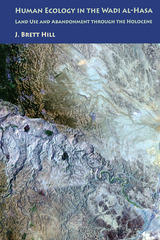 Human Ecology in the Wadi al-Hasa: Land Use and Abandonment through the Holocene
J. Brett Hill
University of Arizona Press, 2006 Amid mounting concern over modern environmental degradation, archaeologists around the world are demonstrating the long history of such processes and the way they have shaped current landscapes. A growing body of evidence shows how humans have modified their environment for millennia, and contemporary problems cannot be understood without an adequate sense of this ecological past and the role of humans in it. The Wadi al-Hasa, a large canyon draining the Transjordan Plateau into the Dead Sea, has been the location of repeated cycles of settlement and land use for thousands of years.
This book focuses on changing land-use patterns and their relationship to socio-political organization. Using a combination of archaeological and environmental data, Brett Hill examines the human ecology of agriculture and pastoralism from the beginnings of domestication through the rise and collapse of complex societies. Models of land use often consider political complexity as an important factor affecting mismanagement. Together with GIS erosion modeling and settlement pattern analysis, Hill evaluates the archaeological, historical, and environmental record spanning the Holocene to show how land use was affected by the rise of centralized authority. Yet populations in the Hasa maintained the ability to resist authority and return to a nomadic life when it became advantageous. This process emphasizes the power of local groups to pursue alternative strategies when their interests diverged from those of elites, creating a dynamic that reshapes the landscape each generation.
Hill’s analysis contributes significantly to our understanding of the history of human ecology in the southern Levant, wherein current debates are complicated by research at different scales and by a lack of consensus on the importance of localized phenomena. It not only complements existing research but also seeks to refine models of processes in human ecology to demonstrate the effect of political organization on land mismanagement.
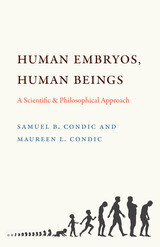 Human Embryos, Human Beings: A Scientific and Philosophical Approach
Samuel B. Condic
Catholic University of America Press, 2018 The overall purpose of Human Embryos, Human Beings is to establish the ontological status of the human embryo, in light of the most recent biological evidence. The thesis of the book is that sound philosophical reasoning and the available scientific evidence support the claim that a human being is present from the moment of fertilization onward (the “immediate hominization” view) and does not support the contrary claim that a human being appears only after a time following fertilization (the “delayed hominization” view). Included in the scope of this argument is an examination of several long-standing philosophical arguments claiming that immediate hominization is false; a detailed examination of several arguments claiming that though immediate hominization is possible, both evidence and argument best support the delayed hominization view or some alternate view; and an examination of several cases where natural defect or scientific manipulation make determining the ontological status of the embryo more difficult. The book also includes a presentation of hylomorphism, as this is the philosophical viewpoint employed by the authors to analyze the question. Human Embryos, Human Beings is based on the premise that philosophical and scientific approaches are not in conflict, with the most comprehensive understanding of human embryos being achieved by application of a rigorous hylomorphic philosophy to the best available scientific data. Often, one finds either a thorough and well-reasoned philosophical account or a detailed scientific account. This book makes a welcome addition to the field by integrating both of these needed elements into a single text.
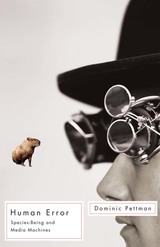 Human Error: Species-Being and Media Machines
Dominic Pettman
University of Minnesota Press, 2010 What exactly is the human element separating humans from animals and machines? The common answers that immediately come to mind—like art, empathy, or technology—fall apart under close inspection. Dominic Pettman argues that it is a mistake to define such rigid distinctions in the first place, and the most decisive “human error” may be the ingrained impulse to understand ourselves primarily in contrast to our other worldly companions.
In Human Error, Pettman describes the three sides of the cybernetic triangle—human, animal, and machine—as a rubric for understanding key figures, texts, and sites where our species-being is either reinforced or challenged by our relationship to our own narcissistic technologies. Consequently, species-being has become a matter of specious-being, in which the idea of humanity is not only a case of mistaken identity but indeed the mistake of identity.
Human Error boldly insists on the necessity of relinquishing our anthropomorphism but also on the extreme difficulty of doing so, given how deeply this attitude is bound with all our other most cherished beliefs about forms of life.
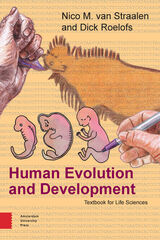 Human Evolution and Development
Nico M. van Straalen Dick Roelofs
Amsterdam University Press, 2019 Our understanding of human evolution is proceeding at an unprecedented rate over the last years due to spectacular fossil finds, reconstructions based on genome comparison, ancient DNA sequencing and new insights into developmental genetics. This book takes an integrative approach in which the development of the human embryo, the evolutionary history of our body, the structure of human populations, their dispersal over the world and their cultures are examined by integrating paleoanthropology, developmental biology, comparative zoology, population genetics and phylogenetic reconstruction.
The authors discuss questions like:
- What do we know about ancient humans?
- What happens in the development of an embryo?
- How did we manage to walk upright and why did we lose our hair?
- What is the relationship between language, migration and evolution?
- How does our body respond to the challenges of modern society?
In addition to being a core text for the study of the life sciences, Human Evolution and Development is an easy-to-read overview for the interested layperson.
 Human Existence and Transcendence
Jean Wahl
University of Notre Dame Press, 2016 William C. Hackett’s English translation of Jean Wahl’s Existence humaine et transcendence (1944) brings back to life an all-but-forgotten book that provocatively explores the philosophical concept of transcendence. Based on what Emmanuel Levinas called “Wahl’s famous lecture” from 1937, Existence humaine et transcendence captured a watershed moment of European philosophy. Included in the book are Wahl's remarkable original lecture, the debate that ensued, with significant contributions by Gabriel Marcel and Nicolai Berdyaev, as well as letters submitted on the occasion by Heidegger, Levinas, Jaspers, and other famous figures from that era. Concerned above all with the ineradicable felt value of human experience by which any philosophical thesis is measured, Wahl makes a daring clarification of the concept of transcendence and explores its repercussions through a masterly appeal to many (often surprising) places within the entire history of Western thought. Apart from its intrinsic philosophical significance as a discussion of the concepts of being, the absolute, and transcendence, Wahl's work is valuable insofar as it became a focal point for a great many other European intellectuals. Hackett has provided an annotated introduction to orient readers to this influential work of twentieth-century French philosophy and to one of its key figures.
"Augmented by William C. Hackett's comprehensive introduction to Jean Wahl and his summary of Wahl's seminal Human Existence and Transcendence, we now have Wahl's most important writings in English. The book presents the well-known ideas of transascendence and transdescendence and, in so doing, highlights the relevance of Wahl's 'philosophy of transcendence' today. Remarkable for its anticipations of later French thought, Wahl's work provides a key to much of what remains hidden in the tradition of twentieth-century French thought." —Leonard Richard Lawlor, Edwin Erle Sparks Professor of Philosophy, Penn State University
Human Experience of Time: The Development of Its Philosophic Meaning
Charles Sherover
Northwestern University Press, 2001 First published in 1975 and still without equal, The Human Experience of Time provides a thorough review of the concept of time in the Western philosophic tradition. Encompassing a wide range of writings, from the Book of Genesis and the classical thinkers to the work of such twentieth-century philosophers as Collingwood and McKeon, all with introductory essays by the editor, this classic anthology offers a synoptic view of the changing philosophic notions of time.
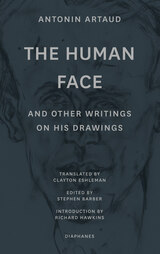 “The Human Face” and Other Writings on His Drawings
Antonin Artaud
Diaphanes, 2021 The first comprehensive collection in English of Antonin Artaud’s writings on his artworks.
The many major exhibitions of Antonin Artaud’s drawings and drawn notebook pages in recent years—at New York’s Museum of Modern Art, Vienna’s Museum Moderner Kunst, and Paris’s Centre Georges Pompidou—have entirely transformed our perception of his work, reorienting it toward the artworks of his final years. This volume collects all three of Artaud’s major writings on his artworks. “The Human Face” (1947) was written as the catalog text for Artaud’s only gallery exhibition of his drawings during his lifetime, focusing on his approach to making portraits of his friends at the decrepit pavilion in the Paris suburbs where he spent the final year of his life. “Ten years that language is gone” (1947) examines the drawings Artaud made in his notebooks—his main creative medium at the end of his life—and their capacity to electrify his creativity when language failed him. “50 Drawings to assassinate magic” (1948), the residue of an abandoned book of Artaud’s drawings, approaches the act of drawing as part of the weaponry deployed by Artaud at the very end of his life to combat malevolent assaults and attempted acts of assassination. Together, these three extraordinary texts—pitched between writing and image—project Artaud’s ferocious engagement with the act of drawing.
Human Factors for Engineers
Carl Sandom
The Institution of Engineering and Technology, 2004 This book introduces the reader to the subject of Human Factors and provides practical and pragmatic advice to assist engineers in designing interactive systems that are safer, more secure and easier to use - thereby reducing accidents due to human error, increasing system integrity and enabling more efficient process operations. The book discusses human factors integration methodology and reviews the issues that underpin consideration of key topics such as human error, automation and human reliability assessment. The book also examines design considerations, including control room and interface design, and acceptance and verification considerations.
 Human Fertility
Henri Leridon
University of Chicago Press, 1977 In this innovative and comprehensive work, expanded by one-third for the English-language edition, Henri Leridon integrates biology and demography to investigate human fertility, both natural and controlled. Traditionally, demographers have been concerned with birthrates in different populations under varying conditions, while biologists have limited themselves to the study of the reproductive process. Leridon has formulated the first coherent overview of the functioning of the human reproductive system in relation to the external conditions that affect fertility.
The book begins with a readable, authoritative review of human fertility in its natural state. Leridon summarizes and evaluates current knowledge, drawing together rare statistical data on physiological variables as well as demographic treatments of these data. After discussing the classical framework used by demographers, Leridon undertakes a "microdemographic" analysis in which he focuses on the individual and explicates the biological processes through which social, psychological, and economic factors affect fertility. He isolates its components—fecundability, intrauterine mortality, the physiological nonsusceptible period, and sterility—then reviews the composite effect of variation in any one component.
Leridon considers situations of controlled fertility: contraception, abortion, and sterilization. The author also presents valuable new data from his own investigations of varying risks of intrauterine mortality. Finally, he shows how the previous approaches can be complemented by the use of mathematical models.
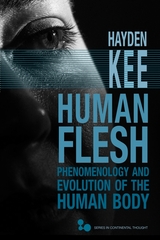 Human Flesh: Phenomenology and Evolution of the Social Body
Hayden Kee
Ohio University Press Much recent research on human evolution emphasizes that social behavior and cognition are at the heart of everything that is distinctively human. This body of research generally understands sociality in terms of social reasoning and the brain that supports it. Human Flesh shifts the focus. What if human sociality is not primarily or exclusively located in the brain but rather is distributed throughout the body? What if the foundation of the human way of life lies in intercorporeity: the ways in which our affective, sensorimotor social bodies—our eyes, hands, voices, ears, and desires—open our bodies and minds up to one another? Human Flesh develops a framework for exploring these questions based on Merleau-Ponty’s unfinished work on human evolution, combining it with contemporary research in phenomenology, embodied cognitive science, evolutionary anthropology, and primatology. It applies that framework to explore how the different senses and sensory organs take on their distinctively human variations to facilitate the intercorporeal, social human form of life. Along the way, the book interprets familiar facts about the human body in a new light and develops novel hypotheses concerning human evolution. In contrast to the widely discussed social brain hypothesis, its guiding premise is the social body hypothesis: the proposition that the human body has evolved in response to the challenges posed by the distinctively human social form of life. Based on these concrete investigations into the human body, Human Flesh proposes a new way of thinking about familiar topics in the evolution of cognition literature, such as the emergence of higher orders of social cognition and the development of human symbolic and linguistic capacities. Ultimately, the book arrives at a new determination of human nature and the human form of life: To be human is to be Homo invisibilis, an animal obsessed with, adapted for, and dependent upon the invisible minds of other humans and the symbolic-cultural worlds opened up by their unique social bodies.
 Human Gene Therapy
Eve Nichols
Harvard University Press, 1988 This is a landmark introduction to the facts and hopes of gene therapy: an exciting, albeit controversial, technique that could bring about a new age in medical treatment. Modern medicine has had relatively little to offer children with disorders such as thalassemia and severe combined immune deficiency. Many of these young patients still face repeated hospitalizations and, often, an early death. In gene therapy, a child with life-threatening genetic disease caused by a defect in a single gene will he treated with the gene’s normal counterpart. Successful development of somatic cell gene therapy is potentially the most effective new therapeutic approach to helping these children lead normal lives.
With unusual clarity of style, Eve K. Nichols (author of the acclaimed Mobilizing Against AIDS) explores the potential for gene therapy and identifies those who are candidates for it. She reviews methods for diagnosing genetic diseases and evaluates current forms of therapy. Having provided a biomedical background for understanding somatic cell gene therapy, Nichols takes a thoughtful look at complex and sensitive issues surrounding ethical, economic, and policy aspects of manipulating human genes. A straightforward analysis of the current limitations and future potential of gene therapy concludes her broadly accessible account.
This book is is derived from the annual session of the prestigious Institute of Medicine. Distinguished participants in this meeting, such as Leon Rosenberg (Dean of the Yale Medical School), Philip Leder (Harvard Medical School), David Martin (Vice President, Genentech, Inc.), James Wyngaarden (Director of the National Institutes of Health), and LeRoy Walters (Director of the Center for Bioethics, Georgetown University), have contributed expert perspectives that will establish this book as a standard of excellence for future studies. A preface by Frank Press, President of the National Academy of Sciences, provides an insightful overview of this promising new therapy.
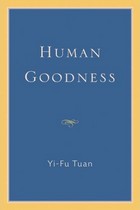 Human Goodness
Tuan, Yi-Fu
University of Wisconsin Press, 2008 In his many best-selling books, Yi-Fu Tuan seizes big, metaphysical issues and considers them in uniquely accessible ways. Human Goodness is evidence of this talent and is both as simple, and as epic, as it sounds. Genuinely good people and their actions, Tuan contends, are far from boring, naive, and trite; they are complex, varied, and enormously exciting. In a refreshing antidote to skeptical times, he writes of ordinary human courtesies, as simple as busing your dishes after eating, that make society functional and livable. And he writes of extraordinary courage and inventiveness under the weight of adversity and evil. He considers the impact of communal goodness over time, and his sketches of six very different individuals—Confucius, Socrates, Wolfgang Amadeus Mozart, John Keats, Dr. Albert Schweitzer, and Simone Weil—confirm that there are human lives that can encourage and lead us to our better selves. Best Books for General Audiences, selected by the American Association of School Librarians, and Best Books for Special Interests, selected by the Public Library Association
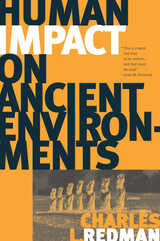 Human Impact on Ancient Environments
Charles L. Redman
University of Arizona Press, 1999 Threats to biodiversity, food shortages, urban sprawl . . . lessons for environmental problems that confront us today may well be found in the past. The archaeological record contains hundreds of situations in which societies developed long-term sustainable relationships with their environments—and thousands in which the relationships were destructive. Charles Redman demonstrates that much can be learned from an improved understanding of peoples who, through seemingly rational decisions, degraded their environments and threatened their own survival. By discussing archaeological case studies from around the world—from the deforestation of the Mayan lowlands to soil erosion in ancient Greece to the almost total depletion of resources on Easter Island—Redman reveals the long-range coevolution of culture and environment and clearly shows the impact that ancient peoples had on their world. These case studies focus on four themes: habitat transformation and animal extinctions, agricultural practices, urban growth, and the forces that accompany complex society. They show that humankind's commitment to agriculture has had cultural consequences that have conditioned our perception of the environment and reveal that societies before European contact did not necessarily live the utopian existences that have been popularly supposed. Whereas most books on this topic tend to treat human societies as mere reactors to environmental stimuli, Redman's volume shows them to be active participants in complex and evolving ecological relationships. Human Impact on Ancient Environments demonstrates how archaeological research can provide unique insights into the nature of human stewardship of the Earth and can permanently alter the way we think about humans and the environment.
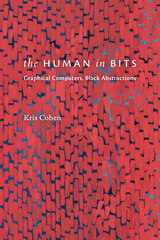 The Human in Bits: Graphical Computers, Black Abstractions
Kris Cohen
Duke University Press, 2025 In The Human in Bits, Kris Cohen examines black abstractionist painting to demonstrate how race and computation are intimately entangled with the personal computer’s graphic user interface. He shows how the personal computer and the graphical field of its screen meant to transform the human by transforming what environments humans were to labor in. It also provided the means for whiteness to tie itself to notions of colorblind meritocracy. Cohen focuses on the post-1960s experiments of black abstractionists Alma Thomas, Jack Whitten, Charles Gaines, and Julie Mehretu, who developed a nonrepresentational approach to blackness that was oriented more toward constraint than human expression. From Gaines’s use of grids to Mehretu’s layering of paint, these artists—in their knowledge that black life had always been conflated with numbers and bits of information—flirted with repetition, systems, and formulas to test other ways of being human. By demonstrating how these artists bypassed the white fear that the human would become interchangeable with data, Cohen reframes modernism and modernist art to account for racialization in computational cultures.
Human Insecurity in a Global World
Lincoln C. Chen
Harvard University Press, 2003 The decade of the 1990s witnessed enormous changes in the international environment. The Cold War conclusively ended. Biotechnology and communications technology made rapid advances. Barriers to international trade and investment declined. Taken together, these developments created many opportunities for peace and prosperity.
At the same time, with the end of superpower domination, ethnically based intranational conflicts brought on widespread suffering. And while globalization expanded opportunity, growth, and incomes, it increased inequality of incomes and decreased human security. Moreover, as countries have become more closely linked, insecurity in one country has affected security in other countries.
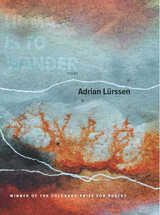 Human Is to Wander
Adrian Lürssen
University Press of Colorado, 2022 If we are always at war, is all poetry then war poetry? Adrian Lürssen’s Human Is to Wander is a book of dislocation, migration, and witness at a time of war—but whose war, fought where, and at what costs to whom? Born and raised in apartheid-era South Africa, Lürssen migrated to the U.S. as a teen in order to avoid military service at a time when the country’s authoritarian regime engaged in a protracted, largely unknown war in Angola. Years later, as a father of young children in his adopted country, echoes of everything his family thought they had left behind has returned: endless bloody conflicts on the horizon; an alarming rise of authoritarianism and nationalistic fervor; pervasive racism, inequality, and daily violence in a country whose mythic promise was once held as freedom, equality, opportunity.
In Human Is to Wander, Lürssen explores these echoes of his personal history within a landscape that is familiar and unfamiliar all at once. Neither the brutally oppressive South Africa of his childhood nor the precarious United States of today, Lürssen’s landscape emerges in the broken rhyme between “troop” and “troupe” where “our captions / are picture less” and “the plan to explain is absolute, but only an entrance.” His is an inner landscape as song no longer sung in a mother tongue, in which the human cost of war, climate crisis, and forced migration is "all part of the explanation.” Lürssen uses collage, constrained cut-up, Oulipean procedures, abecedarian, and other generative play to allow poems to emerge that respond to the turmoil and dislocation of this violent century, attempting to witness if not understand his—and our—place in it.
 Human Language and Our Reptilian Brain: The Subcortical Bases of Speech, Syntax, and Thought
Philip Lieberman
Harvard University Press, 2002 This book is an entry into the fierce current debate among psycholinguists, neuroscientists, and evolutionary theorists about the nature and origins of human language. A prominent neuroscientist here takes up the Darwinian case, using data seldom considered by psycholinguists and neurolinguists to argue that human language--though more sophisticated than all other forms of animal communication--is not a qualitatively different ability from all forms of animal communication, does not require a quantum evolutionary leap to explain it, and is not unified in a single "language instinct."
Using clinical evidence from speech-impaired patients, functional neuroimaging, and evolutionary biology to make his case, Philip Lieberman contends that human language is not a single separate module but a functional neurological system made up of many separate abilities. Language remains as it began, Lieberman argues: a device for coping with the world. But in a blow to human narcissism, he makes the case that this most remarkable human ability is a by-product of our remote reptilian ancestors' abilities to dodge hazards, seize opportunities, and live to see another day.
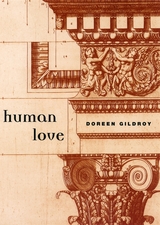 Human Love
Doreen Gildroy
University of Chicago Press, 2005 Prolusion
This is my kitchen.
I looked around.
You think I would have noticed before
that it was safe.
(I started to feel.)
What I wanted first
was color.
I intended terra cotta,
but the paint turned
twice as vibrant:
true orange.
(And then I became used to
boldness.)
Doreen Gildroy's second book of poems is a marvel of lyric exactitude. On the surface a book about a man and a woman trying to conceive a child, Human Love is more deeply an attempt to focus on the process of human creativity in general and, ultimately, the desire to remake the world and self so that both will be more hospitable to new life.
Here, the physical processes of modern fertility treatments become a means through which the self experiences the world with grace and love; the wished-for child also begets a new relationship between man and woman. Though dark at times, Human Love never surrenders hope, and Gildroy never lets the muted music of her verse succumb to despair. A meditation on the body as a source of joy, anxiety, and regeneration, this collection extends the capacity of the lyric to articulate human feeling while considering the complications of love, both human and divine, and the distinctions between them.
Human Machine Collaboration and Interaction for Smart Manufacturing: Automation, robotics, sensing, artificial intelligence, 5G, IoTs and Blockchain
Wai Yie Leong
The Institution of Engineering and Technology, 2022 Advanced technologies such as robotics, 5G mobile communications, IoT, cloud computing and wireless sensor networks have had a huge impact and influence on manufacturing, with an increased collaboration between humans and smart systems. As the manufacturing process becomes more automated using real-time data, communication systems, Artificial Intelligence (AI) techniques and robotics feed data back into the manufacturing process. This enables the design of products that are more customized and personal, and leads to a more competitive, efficient and value-added production process by reacting more quickly to technical or human errors to avoid product and system damage while increasing workplace safety, and reducing waste, pollution, and associated costs.
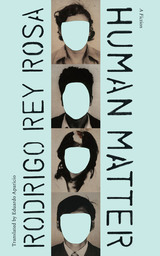 Human Matter: A Fiction
By Rodrigo Rey Rosa; translated by Eduardo Aparicio
University of Texas Press, 2019 More than a decade ago, novelist Rodrigo Rey Rosa made his first visit to the Historical Archive of the Guatemala National Police, where millions of previously hidden records were being cataloged, scanned, and eventually published online. Bringing to light detailed evidence of crimes against humanity, the Archive Recovery Project inspired Rey Rosa to craft a meta-novel that weaves the language of arrest records and surveillance reports with the contemporary journal entries of a novelist (named Rodrigo) who is attempting to synthesize the stories of political activists, indigenous people, and other women and men who became ensnared in a deadly web of state-sponsored terrorism. When Rodrigo's access to the archive is suspended, he proceeds to the General Archives of Central America and the Library of Congress, also collaborating with the son of the Identification Bureau's former head in a relentless pursuit of understanding. Reminiscent of Roberto Bolaño's finely honed masterworks, Human Matter is both a tour de force of fiction and a sobering meditation on the realities of collective memory, raising timely questions about how our history is recorded and retold. Originally published in Spanish in 2009, its success demanded a subsequent publication in June of 2017.
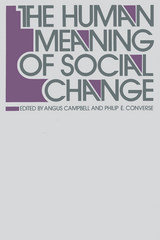 The Human Meaning of Social Change
Angus and Converse, Philip E. Campbell
Russell Sage Foundation, 1972 This book is a companion piece to Sheldon and Moore's Indicators of Social Change. Whereas Indicators of Social Change was concerned with various kinds of "hard" data, typically sociostructural, this book is devoted chiefly to so-called "softer" data of a more social-psychological sort: the attitudes, expectations, aspirations, and values of the American population. The book deals with the meaning of change from two points of view. First, it is interested in the human meaning which people attribute to the complex social environment in which they find themselves; their understanding of group relations, the political process, and the consumer economy in which they participate. Secondly, it discusses the impact that the various alternatives offered by the environment have on the nature of their lives and the fulfillment of those lives. The twelve essays which make up the volume deal successively with the major domains of life. Each author sets forth an inclusive statement of the most significant dimensions of psychological change in a specific area of life, to review the state of present information, and to project the measurements needed to improve understanding of these changes in the future.
 The Human Measure: Social Thought in the Western Legal Tradition
Donald Kelley
Harvard University Press, 1990 Not since the works of Lovejoy and Burt has a scholar attempted such a grand-scale inquiry into the idea of law as the vehicle of culture and social and moral thought. Donald Kelley's major premise is that law and the theory and practice of jurisprudence—civil science—represent the most concrete efforts to find a human measure, a systematic practical philosophy broader than political theory, that will allow us to understand, and perhaps control, the human social condition.
This masterful inquiry into the Western legal tradition, its formation, reformation, and transformation over two thousand years, traces the social and cultural thought of jurists and legal philosophers from Greek roots and Roman foundations to the nineteenth and twentieth centuries. Kelley examines the revival of civil science in the Middle Ages, its extension in terms of the natural cultures of modern Europe, its conflicts with European customs, and its philosophical reformulation as modern natural law. He illuminates the role of civil science in the debates over legal codes, its investigation and rehabilitation by the nineteenth-century historical school, and finally its rivalry with and relationship to the modern sciences of society and culture.
Kelley successfully broadens the perspective of political theory to encompass social and cultural dimensions and, in doing so, opens up a new intellectual continent for scholars and students of history, philosophy, and law. This is a work of unparalleled scholarship by one of the most original historians writing today.
Human Monitoring, Smart Health and Assisted Living: Techniques and technologies
Sauro Longhi
The Institution of Engineering and Technology, 2017 Interest in Information and Communication Technologies for human monitoring, smart health and assisted living is growing due to the significant impact that these technologies are expected to have on improving the quality of life of ageing populations around the world. This book brings together chapters written by a range of researchers working in these topics, providing an overview of the areas and covering current research, developments and applications for a readership of researchers and research-led engineering practitioners. It discusses the promises and the possible advantages of these technologies, and also indicates the challenges for the future.
 Human Nature and History: A Study of the Development of Liberal Political Thought
Robert Denoon Cumming
University of Chicago Press, 1969 What is the subject-matter of political theory and how does it relate to other subject-matters, such as that of moral theory? What is the relation between political theory and political practice—between the kind of solution that a theory offers to the political problems and the kind of solution that is sought in practice through the operation of political institutions? What is the relation between scientific political theory and practical political arguments?
Human Nature and History, a monumental work in two volumes, is an attempt to analyze these relations. It is a work in meta-theory or the theory of political theory.
At the most general level, Cumming is concerned with the question of what is involved in the enterprise of political theory or political philosophy and how different conceptions of that enterprise have developed historically. More specifically, he is concerned with the format imposed on the historical development of political thought by Anglo-American liberalism, especially as represented by John Stuart Mill.
Since Cumming traces the development of political theory by reference to the relation between its subject-matter and other subject-matters, his study should be of interest to historians of thought and culture, as well as to political theorists and philosophers.
 Human Nature and the Freedom of Public Religious Expression
Stephen G. Post
University of Notre Dame Press, 2003 Drawing on current research in science and religion, distinguished bioethicist Stephen G. Post provocatively argues that human beings are, by nature, inclined toward a presence in the universe that is higher than their own. In consequence, the institutions of everyday life, such as schools, the workplace, and the public square, are not justified in censoring the spiritual and religious expression that freely arises from the wellspring of the human spirit.
Post believes that the privatization of religious expression, coupled with the imposition of a secular monism, is a departure from true liberal democracy in which citizens are free to assert themselves in ways that manifest their full nature. Utilizing research in the neurosciences, psychiatry, the social sciences, and evolutionary psychology, he provides scientific information supporting the idea, familiar to theories of natural law, that religious expression and freedom are essential human goods. In developing this perspective, Post also engages in a critical conversation with secular existentialism.
Human Nature and the Freedom of Public Religious Expression offers an alternative to the views of political philosophers such as Richard Rorty, and educators such as John Dewey, who fail to acknowledge the unique contribution that religious language, when thoughtfully implemented, makes to the tone and content of public debate and education. Post's perspective privileges no particular religion, but rather asks that adherents to all faiths, including secularism, be allowed freely to express their core values in a civil, respectful, and public manner. Post calls for a recovery of the full meaning of liberal democracy in all domains of public life, so that we might again discover the value of freedom of expression.
STEPHEN G. POST is professor and associate director for educational programs in the department of bioethics at Case Western Reserve University School of Medicine. He is a senior research scholar at the Becket Institute, St. Hugh's College, Oxford University. Dr. Post has published widely in the area of science and religion. He is editor-in-chief of the third edition of the five-volume Encyclopedia of Bioethics, and was recently named President of the Institute for Research on Unlimited Love--Altruism, Compassion, Service.
----------
"This book is a valuable addition to the growing literature proposing promising alternatives to what has been called the naked public square."--First Things
"This is a well reasoned and clearly presented thesis that merits serious consideration by thoughtful readers. Recommended for academic and public libraries."--Library Journal
"St. Augustine once wrote that our hearts will remain ‘restless till they find their rest in God.' Stephen Post vindicates Augustine's insight by mapping acutely our natural inclinations and intuitions of the divine. He also elaborates Augustine's insight by arguing that our souls will become listless if they are forbidden to speak and our democracies will become feckless if they are forbidden to hear the public voices of religion. This is an elegant, erudite, and engaging meditation that brings the best of law, religion, and science into a rare and powerful combination." --John Witte, Jr., Emory University
"It is long past time, Stephen Post persuasively argues, to stop tying ourselves into legal, philosophical, and psychological knots in trying to deny the obvious. The obvious is that people are, in maddeningly diverse ways, religious, and that the way people are is a public reality to be welcomed in order to make our common life more authentically human. This book both provokes and convinces." --Richard John Neuhaus, editor-in-chief, --First Things
"Professor Post's thought transcends sectarian boundaries by reason of his stress on the givens of human nature. His rigorous demonstration that by nature humanity should enjoy and exercise freedom of religious expression uncovers the foundations, in natural theology, for liberty -- an important and urgent proposition. His book sets forth a strenuous argument on behalf of fundamental principles and demands a close reading." --Jacob Neusner, Bard College
"Stephen Post has done the culture a great favor. He has made religious liberty a question, not of who God is, but of who we are. And that is a question in which people from many different traditions can meaningfully engage. Agree with him or disagree with him about the finer points, you'll have to admit the debate over religion in public life will never be the same." --Kevin J. "Seamus" Hasson, President of The Becket Fund for Religious Liberty
"...a commonsense critique …."--Research News and Opportunities in Science and Theology
"Although Post's conclusion is controversial… his premise is nonetheless compelling...."--ForeWord Magazine
"…sharply reasoned and passionate…. This is a boldly creative presentation, with a useful index and rigorous contemporary sourceing, underscoring its obvious relevance to current debates about the place of religious sentiment in the public square. …this eclectic, reflective book will prove valuable to readers and researchers in religion, psychology, political science, and the law."--Choice
 Human Nature Debate: Social Theory, Social Policy and the Caring Professions
Harry Cowen
Pluto Press, 1994 The idea of human nature is centuries old. Yet epithets like 'human greed', 'natural inequalities' and 'you can’t change the world' still underpin discussion in everyday life as well as in the academic arena.
Human Nature Debate challenges the fixity of such notions and argues that the manifestations of the human nature idea are socially and politically - rather than philosophically - grounded. The book’s scope is wide, spanning the social science disciplines and, unlike other texts in the field, incorporates everyday social and political examples into the academic.
Cowen demonstrates how theories of human nature must be related to their intellectual, historical and social roots by analysing biological, psychological and social models, assessing the impacts of Freudianism, behaviourism, existentialism and Marxism upon social theory, policy and caring professions, and evaluating the political significance of racist and sexist accounts. The book covers the issues of women and human nature and feminist critiques and acquaints the reader with a variety of social thinkers.
Human Nature in Utopia: Zamyatin's We
Brett Cooke
Northwestern University Press, 2002 """Engaging, provocative in the best sense, Cooke's is an excellent book."" --George Gutsche, University of Arizona
""The virtuoso merging of sociobiological ideas and standard critical techniques is an important vindication for the whole idea of a sociobiological literary criticism. This is a highly accomplished piece of literary scholarship. It will long stand as a landmark."" --Joseph Carroll, University of Missouri "
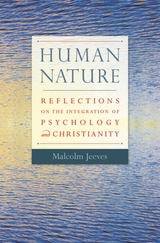 Human Nature: Reflections on the Integration of Psychology and Christianity
Malcolm Jeeves
Templeton Press, 2006 College and university professors have been demanding that this book, out of print for several years, be made available again, as it is unique in its field. This new edition, which includes a new preface and guidance to current literature, offers a balanced study of the implications of scientific developments in psychology and neuroscience for traditional Christian beliefs. Malcolm Jeeves, former editor-in-chief of Neuropsychologia, a leading international scientific journal in behavioral and cognitive neuroscience, explores the intersection of science and faith in defining what it means to be human. He reports on recent scientific research on consciousness and the link between mind, brain, and behavior. He examines issues such as determinism by indicating the possible relevance of chaos theory to enduring concerns about freedom and responsibility. He looks at similarities and differences between human nature and animal nature. He reexamines traditional dualist views of soul and body in the light of contemporary research on mind and brain and argues for a wholistic model. This leads to addressing questions such as: does spiritual awareness depend on the intactness of our brains or does spirituality stand apart from our biological substrate? Jeeves' insightful analysis of the ways recent findings in psychology relate to certain Christian beliefs about people expands the global science religion dialogue.
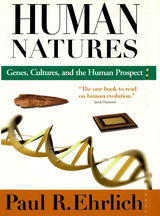 Human Natures: Genes, Cultures, and the Human Prospect
Paul R. Ehrlich
Island Press, 2000 The Bell Curve, The Moral Animal, The Selfish Gene -- these and a host of other books and articles have made a seemingly overwhelming case that our genes determine our behavior. Now, in a new book that is sure to stir controversy, one of the world's leading evolutionary biologists shows why most of those claims of genetic destiny cannot be true, and explains how the arguments often stem from a fundamental misunderstanding of evolution itself. "You can't change human nature," the saying goes. But you can, Stanford biologist Paul Ehrlich shows us in Human Natures, and in fact, evolution is the story of those changing natures. He makes a compelling case that "human nature" is not a single, unitary entity, but is as diverse as humanity itself, and that changes in culture and other environmental variations play as much of a role in human evolution as genetic changes. We simply don't have enough genes to specify behavior at the level that is often asserted. Never has knowledge of our evolutionary past been more important to our future. Developing intelligent strategies for antibiotic use, pest control, biodiversity protection -- and even for establishing more equitable social arrangements -- all depend on understanding evolution and how it works. A hallmark of Human Natures is the author's ability to convey lucidly that understanding in the course of presenting an engrossing history of our species. Using personal anecdote, vivid example, and stimulating narrative, Ehrlich guides us through the thicket of controversies over what science can and cannot say about the influence of our evolutionary past on everything from race to religion, from sexual orientation to economic development. A major work of synthesis and scholarship, Human Natures gives us the fruit of a lifetime's thought and research on evolution and environment by a modern master of scientific understanding. Ehrlich's innovative vision lights the way to a fresh view of human nature and evolution, bringing insight and clarity to urgent questions of where we are as a species, and where we may be headed.
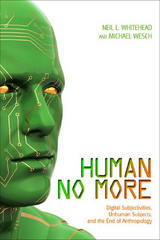 Human No More: Digital Subjectivities, Unhuman Subjects, and the End of Anthropology
Neil L. Whitehead
University Press of Colorado, 2012 Turning an anthropological eye toward cyberspace, Human No More explores how conditions of the online world shape identity, place, culture, and death within virtual communities.
Online worlds have recently thrown into question the traditional anthropological conception of place-based ethnography. They break definitions, blur distinctions, and force us to rethink the notion of the "subject." Human No More asks how digital cultures can be integrated and how the ethnography of both the "unhuman" and the "digital" could lead to possible reconfiguring the notion of the "human."
This provocative and groundbreaking work challenges fundamental assumptions about the entire field of anthropology. Cross-disciplinary research from well-respected contributors makes this volume vital to the understanding of contemporary human interaction. It will be of interest not only to anthropologists but also to students and scholars of media, communication, popular culture, identity, and technology.
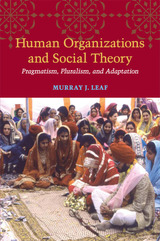 Human Organizations and Social Theory: Pragmatism, Pluralism, and Adaptation
Murray J. Leaf
University of Illinois Press, 2008 In the 1930s, George Herbert Mead and other leading social scientists established the modern empirical analysis of social interaction and communication, enabling theories of cognitive development, language acquisition, interaction, government, law and legal processes, and the social construction of the self. However, they could not provide a comparably empirical analysis of human organization. The theory in this book fills in the missing analysis of organizations and specifies more precisely the pragmatic analysis of communication with an adaptation of information theory to ordinary unmediated communications. The study also provides the theoretical basis for understanding the success of pragmatically grounded public policies, from the New Deal through the postwar reconstruction of Europe and Japan to the ongoing development of the European Union, in contrast to the persistent failure of positivistic and Marxist policies and programs.
The Human Person
Steven J. Jensen
Catholic University of America Press, 2018 The Human Person presents a brief introduction to the human mind, the soul, immortality, and free will. While delving into the thought of Thomas Aquinas, it addresses contemporary topics, such as skepticism, mechanism, animal language research, and determinism. Steven J. Jensen probes the primal questions of human nature. Are human beings free or determined? Is the capacity to reason distinctive to human beings or do animals also have some share of reason? Have animals really been taught to use language?
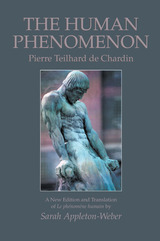 The Human Phenomenon: A New Edition and Translation of Le phenomene humain by Sarah Appleton-Weber
Translated by Sarah Appleton-Weber
Sussex Academic Press, 2022 Pierre Teilhard de Chardin (1881-1955) was a priest , paleontologist and geologist whose highly original publication, LE PHENOMENE HUMAIN, attracted world-wide attention when it was first published. He wrote of the beginnings of our planet, the emergence of life, the birth of thought and the development of socialization in order to give humankind the inner vision necessary to thrive in an expanding universe. The original translation into English contained many fundamental mistakes clouding our understanding of Teilhard de Chardin's vision. Sarah Appleton-Weber has based her new translation, which is endorsed by the Teilhard de Chardin Foundation (Paris), on her careful comparison of the four versions of the French text. Poet and scholar Appleton-Weber, who has closely studied Teilhard's essays, letters, and other writing, gives a consistent and coherent voice to this translation of Teilhard's book.
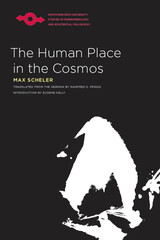 The Human Place in the Cosmos
Max Scheler; Translated from the German by Manfred S. Frings, Introduction by Eugene Kely
Northwestern University Press, 2009 Upon Scheler’s death in 1928, Martin Heidegger remarked that he was the most important force in philosophy at the time. Jose Ortega y Gasset called Scheler "the first man of the philosophical paradise." The Human Place in the Cosmos, the last of his works Scheler completed, is a pivotal piece in the development of his writing as a whole, marking a peculiar shift in his approach and thought. He had been asked to provide an initial sketch of his much larger works on philosophical anthropology and metaphysics—works he was not able to complete because of his early demise. Frings' new translation of this key work allows us to read and understand Scheler's thought within current philosophical debates and interests. The book addresses two main questions: What is the human being? And what is the place of the human being in the universe? Scheler responds to these questions within contexts of said two projected much larger works but not without reference to scientific research. He covers various levels of being: inorganic reality, organic reality (including plant life and psychological life), all the way up to practical intelligence and the spiritual dimension of human beings, and touching upon the holy. Negotiating two intertwined levels of being, life-energy ("impulsion") and "spirit," this work marks not only a critical moment in the development of his own philosophy but also a significant contribution to the current discussions of continental and analytic philosophers on the nature of the person.
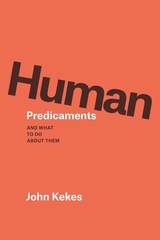 Human Predicaments: And What to Do about Them
John Kekes
University of Chicago Press, 2016 In his latest book, esteemed philosopher John Kekes draws on anthropology, history, and literature in order to help us cope with the common predicaments that plague us as we try to take control of our lives. In each chapter he offers fascinating new ways of thinking about a particular problem that is fundamental to how we live, such as facing difficult choices, uncontrollable contingencies, complex evaluations, the failures of justice, the miasma of boredom, and the inescapable hypocrisies of social life.
Kekes considers how we might deal with these predicaments by comparing how others in different times and cultures have approached them. He examines what is good, bad, instructive, and dangerous in the sexually charged politics of the Shilluk, the Hindu caste system, Balinese role-morality, the religious passion of Cortes and Simone Weil, the fate of Colonel Hiromichi Yahara during and after the battle for Okinawa, the ritual human sacrifices of the Aztecs, and the tragedies to which innocence may lead. In doing so, he shakes us out of our deep-seated ways of thinking, enlarging our understanding of the possibilities available to us as we struggle with the problems that stand in the way of how we want to live. The result is a highly interesting journey through time and space that illuminates and helps us cope with some of the most basic predicaments we all face as human beings.
 Human Programming: Brainwashing, Automatons, and American Unfreedom
Scott Selisker
University of Minnesota Press, 2016 Do our ways of talking about contemporary terrorism have a history in the science, technology, and culture of the Cold War? Human Programming explores this history in a groundbreaking work that draws connections across decades and throughout American culture, high and low. Scott Selisker argues that literary, cinematic, and scientific representations of the programmed mind have long shaped conversations in U.S. political culture about freedom and unfreedom, and about democracy and its enemies. Selisker demonstrates how American conceptions of freedom and of humanity have changed in tandem with developments in science and technology, including media technology, cybernetics, behaviorist psychology, and sociology. Since World War II, propagandists, scientists, and creative artists have adapted visions of human programmability as they sought to imagine the psychological manipulation and institutional controls that could produce the inscrutable subjects of totalitarian states, cults, and terrorist cells. At the same time, writers across the political spectrum reimagined ideals of American freedom, democracy, and diversity by way of contrast with these posthuman specters of mental unfreedom. Images of such “human automatons” circulated in popular films, trials, travelogues, and the news media, giving form to the nebulous enemies of the postwar and contemporary United States: totalitarianism, communism, total institutions, cult extremism, and fundamentalist terrorism. Ranging from discussions of The Manchurian Candidate and cyberpunk science fiction to the cases of Patty Hearst and the “American Taliban” John Walker Lindh, Human Programming opens new ways of understanding the intertwined roles of literature, film, science, and technology in American culture.
The Human Race
Robert Antelme
Northwestern University Press, 1998 Arrested by the Gestapo and deported to Dachau, Robert Antelme recovered his freedom a year later when François Mitterand, visiting the camp in an official capacity, recognized the dying Antelme and had him spirited to Paris. Antelme's story of his experiences in Germany--his only book--indelibly marked an entire generation, "a work written without hatred, a work of boundless compassion such as that is to be found only in the great Russians."
 Human Relations in Interracial Housing: A Study of the Contact Hypothesis
Daniel M. Wilner, Rosabelle Price Walkley, and Stuart W. Cook
University of Minnesota Press, 1955
Human Relations in Interracial Housing was first published in 1955. Minnesota Archive Editions uses digital technology to make long-unavailable books once again accessible, and are published unaltered from the original University of Minnesota Press editions.
No phase of this country's domestic or foreign relations holds greater potential power for harmony or conflict than our racial attitudes. Yet there is probably no area of social relations in which we have had fewer facts and more assumptions on which to base our thinking and our efforts at constructive action. This sociopsychological study adds considerably to our knowledge of actual racial attitudes in the United States and some of the factors that affect them.
The study examines the racial attitudes of people living in public, interracial housing projects in four cities: Philadelphia, Pittsburgh, Hartford, and Springfield, Massachusetts. Based on interviews with more than 1000 white and Negro residents, it sought information that would help answer such questions as these: What is the effect of Negro-white residential proximity on race relations? Does living nearby reduce or intensify any already existing prejudices? What is the nature of the contacts that develop among members of the two races?
The findings show in great detail the effects of residential proximity and suggest the underlying reasons for the role that such proximity plays. They reveal, further, the effects of the contact experience itself and the perception of the social climate in the community regarding such contact.
The research forms an important sequel to the investigation reported in the book, Interracial Housing, by Deutsch and Collins, confirming some of the basic findings in the earlier study as well as providing new insights.
Psychologists, sociologists, social workers, housing officials, and community leaders will find solid evidence here on a subject that has been sparsely documented up to now.
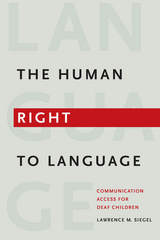 The Human Right to Language: Communication Access for Deaf Children
Lawrence Siegel
Gallaudet University Press, 2008 In 1982, the United States Supreme Court ruled that Amy Rowley, a deaf six-year-old, was not entitled to have a sign language interpreter in her public school classroom. Lawrence Siegel wholeheartedly disagrees with this decision in his new book The Human Right to Language: Communication Access for Deaf Children. Instead, he contends that the United States Constitution should protect every deaf and hard of hearing child’s right to communication and language as part of an individual’s right to liberty. Siegel argues that when a deaf or hard of hearing child sits alone in a crowded classroom and is unable to access the rich and varied communication around her, the child is denied any chance of success in life. In The Human Right to Language, Siegel proposes that the First and Fourteenth Amendments of the Constitution be enforced so that Amy Rowley and her peers can possess that which virtually every other American child takes for granted – the right to receive and express thought in school. He asserts that the common notion of a right to “speech” is too infrequently interpreted in the narrowest sense as the right to “speak” rather than the broader right to receive and transmit information in all ways. Siegel reveals that there are no judicial decisions or laws that recognize this missing right, and offers here a legal and constitutional strategy for change. His well-reasoned hypothesis and many examples of deaf children with inadequate communication access in school combine to make a compelling case for changing the status quo.
 Human Rights after Hitler: The Lost History of Prosecuting Axis War Crimes
Dan Plesch
Georgetown University Press, 2017 Human Rights after Hitler reveals thousands of forgotten US and Allied war crimes prosecutions against Hitler and other Axis war criminals based on a popular movement for justice that stretched from Poland to the Pacific. These cases provide a great foundation for twenty-first-century human rights and accompany the achievements of the Nuremberg trials and postwar conventions. They include indictments of perpetrators of the Holocaust made while the death camps were still operating, which confounds the conventional wisdom that there was no official Allied response to the Holocaust at the time. This history also brings long overdue credit to the United Nations War Crimes Commission (UNWCC), which operated during and after World War II. From the 1940s until a recent lobbying effort by Plesch and colleagues, the UNWCC’s files were kept out of public view in the UN archives under pressure from the US government. The book answers why the commission and its files were closed and reveals that the lost precedents set by these cases have enormous practical utility for prosecuting war crimes today. They cover US and Allied prosecutions of torture, including “water treatment,” wartime sexual assault, and crimes by foot soldiers who were “just following orders.” Plesch’s book will fascinate anyone with an interest in the history of the Second World War as well as provide ground-breaking revelations for historians and human rights practitioners alike.
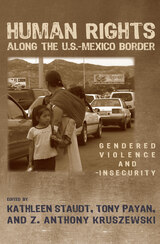 Human Rights along the U.S.–Mexico Border: Gendered Violence and Insecurity
Edited by Kathleen Staudt, Tony Payan, and Z. Anthony Kruszewski
University of Arizona Press, 2009 Much political oratory has been devoted to safeguarding America’s boundary with Mexico, but policies that militarize the border and criminalize immigrants have overshadowed the region’s widespread violence against women, the increase in crossing deaths, and the lingering poverty that spurs people to set out on dangerous northward treks. This book addresses those concerns by focusing on gender-based violence, security, and human rights from the perspective of women who live with both violence and poverty.
From the Pacific to the Gulf of Mexico, scholars from both sides of the 2,000-mile border reflect expertise in disciplines ranging from international relations to criminal justice, conveying a more complex picture of the region than that presented in other studies.
Initial chapters offer an overview of routine sexual assaults on women migrants, the harassment of Central American immigrants at the hands of authorities and residents, corruption and counterfeiting along the border, and near-death experiences of border crossers. Subsequent chapters then connect analysis with solutions in the form of institutional change, social movement activism, policy reform, and the spread of international norms that respect human rights as well as good governance.
These chapters show how all facets of the border situation—globalization, NAFTA, economic inequality, organized crime, political corruption, rampant patriarchy—promote gendered violence and other expressions of hyper-masculinity. They also show that U.S. immigration policy exacerbates the problems of border violence—in marked contrast to the border policies of European countries.
By focusing on women’s everyday experiences in order to understand human security issues, these contributions offer broad-based alternative approaches and solutions that address everyday violence and inattention to public safety, inequalities, poverty, and human rights. And by presenting a social and democratic international feminist framework to address these issues, they offer the opportunity to transform today’s security debate in constructive ways.
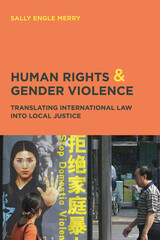 Human Rights and Gender Violence: Translating International Law into Local Justice
Sally Engle Merry
University of Chicago Press, 2005 Human rights law and the legal protection of women from violence are still fairly new concepts. As a result, substantial discrepancies exist between what is decided in the halls of the United Nations and what women experience on a daily basis in their communities. Human Rights and Gender Violence is an ambitious study that investigates the tensions between global law and local justice.
As an observer of UN diplomatic negotiations as well as the workings of grassroots feminist organizations in several countries, Sally Engle Merry offers an insider's perspective on how human rights law holds authorities accountable for the protection of citizens even while reinforcing and expanding state power. Providing legal and anthropological perspectives, Merry contends that human rights law must be framed in local terms to be accepted and effective in altering existing social hierarchies. Gender violence in particular, she argues, is rooted in deep cultural and religious beliefs, so change is often vehemently resisted by the communities perpetrating the acts of aggression.
A much-needed exploration of how local cultures appropriate and enact international human rights law, this book will be of enormous value to students of gender studies and anthropology alike.
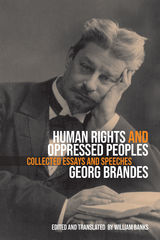 Human Rights and Oppressed Peoples: Collected Essays and Speeches
Georg Brandes
University of Wisconsin Press, 2020 Georg Brandes was known as the "Father of the Modern Breakthrough" for his influence on Scandinavian writers in the late nineteenth century. A prominent writer, thinker, and speaker, he often examined intellectual topics beyond the literary criticism he was best known for. In this collection, William Banks has translated a number of Brandes's pieces that engage in the concerns of oppressed peoples. By collecting, annotating, and contextualizing these works, Banks reintroduces Brandes as a major progenitor of thinking about the rights of national minorities and the colonized.
Human Rights and Oppressed Peoples includes thirty-five essays and published speeches from the early twenty-first century on subjects as diverse as the Boxer Rebellion, displaced peoples from World War I, Finland's Jewish population, and imperialism. This collection will interest interdisciplinary scholars of human rights as well as those who study Scandinavian intellectual and literary history.
Human Rights and Social Movements
Neil Stammers, Robert Jupe, and Jane Andrew
Pluto Press, 2009 This book champions social movements as one of the most influential agents that shape our conceptions of human rights.
Stammers argues that human rights cannot be properly understood outside of the context of social movement struggles. He explains how much of the literature on human rights has systematically obscured this link, consequently distorting our understandings of human rights.
Stammers identifies the contours of a new framework through which human rights can be understood. He suggests that what he calls the 'paradox of institutionalisation' can only be addressed through a recognition of the importance of human rights arising out of grassroots activism, and through processes of institutional democratisation.
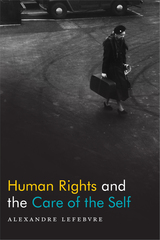 Human Rights and the Care of the Self
Alexandre Lefebvre
Duke University Press, 2018 When we think of human rights we assume that they are meant to protect people from serious social, legal, and political abuses and to advance global justice. In Human Rights and the Care of the Self Alexandre Lefebvre turns this assumption on its head, showing how the value of human rights also lies in enabling ethical practices of self-transformation. Drawing on Foucault's notion of "care of the self," Lefebvre turns to some of the most celebrated authors and activists in the history of human rights–such as Mary Wollstonecraft, Henri Bergson, Eleanor Roosevelt, and Charles Malik–to discover a vision of human rights as a tool for individuals to work on, improve, and transform themselves for their own sake. This new perspective allows us to appreciate a crucial dimension of human rights, one that can help us to care for ourselves in light of pressing social and psychological problems, such as loneliness, fear, hatred, patriarchy, meaninglessness, boredom, and indignity.
 Human Rights and Transnational Solidarity in Cold War Latin America
Edited by Jessica Stites Mor
University of Wisconsin Press, 2013 With the end of the global Cold War, the struggle for human rights has emerged as one of the most controversial forces of change in Latin America. Many observers seek the foundations of that movement in notions of rights and models of democratic institutions that originated in the global North. Challenging that view, this volume argues that Latin American community organizers, intellectuals, novelists, priests, students, artists, urban pobladores, refugees, migrants, and common people have contributed significantly to new visions of political community and participatory democracy. These local actors built an alternative transnational solidarity from below with significant participation of the socially excluded and activists in the global South.
Edited by Jessica Stites Mor, this book offers fine-grained case studies that show how Latin America’s re-emerging Left transformed the struggles against dictatorship and repression of the Cold War into the language of anti-colonialism, socioeconomic rights, and identity.
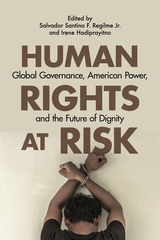 Human Rights at Risk: Global Governance, American Power, and the Future of Dignity
Salvador Santino F. Regilme Jr. and Irene Hadiprayitno
Rutgers University Press, 2022 Human Rights at Risk brings together social scientists, legal scholars, and humanities scholars to analyze the policy challenges of human rights protection in the twenty-first century. The volume is organized based on three overarching themes that highlight the challenges and risks in international human rights: international institutions and global governance of human rights; thematic blind spots in human rights protection; and the human rights challenges of the United States as a global and domestic actor amidst the contemporary global shifts to authoritarianism and illiberal populism. One of the very few books that offer new perspectives that envision the future of transnational human rights norms and human dignity from a multidisciplinary perspective, Human Rights at Risk comprehensively examines the causes and consequences of the challenges faced by international human rights. Scholars, students, and policy practitioners who are interested in the challenges and reform prospects of the international human rights regime, United States foreign policy, and international institutions will find this multidisciplinary volume an invaluable guide to the state of global politics in the twenty-first century.
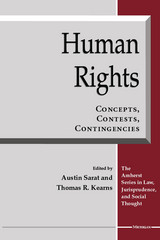 Human Rights: Concepts, Contests, Contingencies
Austin Sarat and Thomas R. Kearns, Editors
University of Michigan Press, 2002 Today the language of human rights, if not human rights themselves, is nearly universal. Human Rights brings together essays that attend to both the allure and criticism of human rights. They examine contestation and contingency in today's human rights politics and help us rethink some of the basic concepts of human rights. Questions addressed in Human Rights include: Can national self-determination be reconciled with human rights? Can human rights be advanced without thwarting efforts to develop indigenous legal traditions? How are the forces of modernization associated with globalization transforming our understanding of human dignity and personal autonomy? What does it mean to talk about culture and cultural choice? Is the protection of culture and cultural choice an important value in human rights discourse? How do human rights figure in local political contests and how are those contests, in turn, shaped by the spread of capitalism and market values? What contingencies shape the implementation of human rights in societies without a strong tradition of adherence to the rule of law? What are the conditions under which human rights claims are advanced and under which nations respond to their appeal?
Austin Sarat is William Nelson Cromwell Professor of Jurisprudence and Political Science, Amherst College. Thomas R. Kearns is William H. Hastie Professor of Philosophy and Professor of Law, Jurisprudence, and Social Thought, Amherst College.
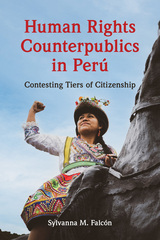 Human Rights Counterpublics in Perú
Sylvanna M. Falcón
University of Illinois Press, 2024 In 2003, Perú’s Comisión de la Verdad y Reconciliación (CVR) issued its groundbreaking final report on the human rights abuses perpetuated by two revolutionary groups and the country’s armed forces and police from 1980 to 2000. Sylvanna M. Falcón examines how local communities in Lima have formed oppositional spaces, movements, and communities to challenge a status quo that erases Perú’s history of internal violence. These counterpublics focus on human rights-oriented memory that acknowledges the legacies of racism and misogyny underlying the violence. Falcón’s decolonial feminist analysis challenges the rise of authoritarianism in democratic societies while exploring the limits of liberalism to counteract it. As she shows, projects shaped by counterpublic memory best equip Perúvians to enact real, liberatory, and transformative justice for human rights violations both past and present. Engaging and intimate, Human Rights Counterpublics in Perú illuminates the power of human rights and memory work.
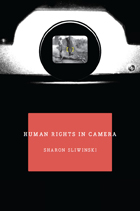 Human Rights In Camera
Sharon Sliwinski
University of Chicago Press, 2011 From the fundamental rights proclaimed in the American and French declarations of independence to the 1948 Universal Declaration of Human Rights and Hannah Arendt’s furious critiques, the definition of what it means to be human has been hotly debated. But the history of human rights—and their abuses—is also a richly illustrated one. Following this picture trail, Human Rights In Camera takes an innovative approach by examining the visual images that have accompanied human rights struggles and the passionate responses people have had to them. Sharon Sliwinski considers a series of historical events, including the 1755 Lisbon earthquake and the Holocaust, to illustrate that universal human rights have come to be imagined through aesthetic experience. The circulation of images of distant events, she argues, forms a virtual community between spectators and generates a sense of shared humanity. Joining a growing body of scholarship about the cultural forces at work in the construction of human rights, Human Rights In Camera is a novel take on this potent political ideal.
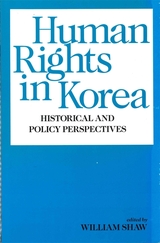 Human Rights in Korea: Historical and Policy Perspectives
William Shaw
Harvard University Press, 1991 These chapters by eight Korea specialists present a new approach to human rights issues in Korea. Instead of using an external and purely contemporary standard, the authors work from within Korean history, treating the successive phases of Korea’s modern century to examine the uneasy fate of human rights and some of the ideas of human rights as they have developed in the Korean context. Beginning with the Independence Club of the late nineteenth century and continuing through to the constitutional and judicial structures underlying the Sixth Republic Government of Roh Tae Woo in South Korea, these papers illuminate the sometimes complex interactions between modern Korean human-rights issues and the legacies of Korean culture and colonial occupation.
The contributors provide a corrective to two common errors: one, an overemphasis on the tension between residual Confucian culture and human-rights concepts; two, the opposite error, a defensive nationalism that gives rise to ill-founded efforts to identify democratic antecedents in the Korean past. Instead, these authors allow each episode in the emergence of Korean human rights thought and action to stand in the context of its own time and of Korea’s modern history. The final sections deal with the usefulness and appropriateness of U.S. policies toward human rights in South Korea and comparatively with the overall issues raised in the volume.
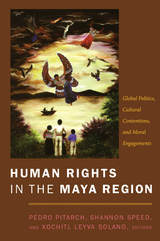 Human Rights in the Maya Region: Global Politics, Cultural Contentions, and Moral Engagements
Pedro Pitarch, Shannon Speed, and Xochitl Leyva Solano, eds.
Duke University Press, 2008 In recent years Latin American indigenous groups have regularly deployed the discourse of human rights to legitimate their positions and pursue their goals. Perhaps nowhere is this more evident than in the Maya region of Chiapas and Guatemala, where in the last two decades indigenous social movements have been engaged in ongoing negotiations with the state, and the presence of multinational actors has brought human rights to increased prominence. In this volume, scholars and activists examine the role of human rights in the ways that states relate to their populations, analyze conceptualizations and appropriations of human rights by Mayans in specific localities, and explore the relationship between the individualist and “universal” tenets of Western-derived concepts of human rights and various Mayan cultural understandings and political subjectivities. The collection includes a reflection on the effects of truth-finding and documenting particular human rights abuses, a look at how Catholic social teaching validates the human rights claims advanced by indigenous members of a diocese in Chiapas, and several analyses of the limitations of human rights frameworks. A Mayan intellectual seeks to bring Mayan culture into dialogue with western feminist notions of women’s rights, while another contributor critiques the translation of the United Nations Declaration of Human Rights into Tzeltal, an indigenous language in Chiapas. Taken together, the essays reveal a broad array of rights-related practices and interpretations among the Mayan population, demonstrating that global-local-state interactions are complex and diverse even within a geographically limited area. So too are the goals of indigenous groups, which vary from social reconstruction and healing following years of violence to the creation of an indigenous autonomy that challenges the tenets of neoliberalism. Contributors: Robert M. Carmack, Stener Ekern, Christine Kovic, Xochitl Leyva Solano, Julián López García, Irma Otzoy, Pedro Pitarch, Álvaro Reyes, Victoria Sanford, Rachel Sieder, Shannon Speed, Rodolfo Stavenhagen, David Stoll, Richard Ashby Wilson
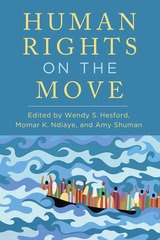 Human Rights on the Move
Edited by Wendy S. Hesford, Momar K. Ndiaye, and Amy Shuman
Ohio State University Press, 2024 Engaging critical human rights studies from an interdisciplinary arts and humanities perspective, Human Rights on the Move addresses a range of human rights violations in contemporary society, including the carceral systems that prevent movement, the gendered and racial restrictions placed on movement, the lack of access that assures movement only for those who have the ability to move, and the histories of movements such as settler colonialism. The approaches to human rights in this wide-ranging collection are also “on the move,” emphasizing a nimble, cross-disciplinary approach that considers the intersection of politics, culture, and the arts. Contributing artists, activists, and scholars expose the fundamental paradox of human rights (namely that nation-states are violators and guarantors of rights) while also showing how people facing violence and persecution move with the hope of more livable and equitable futures. The assembled scholarly essays, interviews, and creative pieces demonstrate the importance of a more relational and contextual understanding of human rights—one that can destabilize current definitions and open space for new formulations.
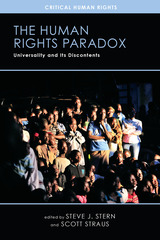 The Human Rights Paradox: Universality and Its Discontents
Edited by Steve J. Stern and Scott Straus
University of Wisconsin Press, 2014 Human rights are paradoxical. Advocates across the world invoke the idea that such rights belong to all people, no matter who or where they are. But since humans can only realize their rights in particular places, human rights are both always and never universal.
The Human Rights Paradox is the first book to fully embrace this contradiction and reframe human rights as history, contemporary social advocacy, and future prospect. In case studies that span Africa, Latin America, South and Southeast Asia, and the United States, contributors carefully illuminate how social actors create the imperative of human rights through relationships whose entanglements of the global and the local are so profound that one cannot exist apart from the other. These chapters provocatively analyze emerging twenty-first-century horizons of human rights—on one hand, the simultaneous promise and peril of global rights activism through social media, and on the other, the force of intergenerational rights linked to environmental concerns that are both local and global. Taken together, they demonstrate how local struggles and realities transform classic human rights concepts, including “victim,” “truth,” and “justice.”
Edited by Steve J. Stern and Scott Straus, The Human Rights Paradox enables us to consider the consequences—for history, social analysis, politics, and advocacy—of understanding that human rights belong both to “humanity” as abstraction as well as to specific people rooted in particular locales.
 Human Rights, Sexual Orientation and Gender Identity in The Commonwealth
Edited by Corinne Lennox and Matthew Waites
University of London Press, 2013 Human rights in relation to sexual orientation and gender identity are at last reaching the heart of global debates. Yet 78 states worldwide continue to criminalise same-sex sexual behaviour, and due to the legal legacies of the British Empire, 42 of these – more than half – are in the Commonwealth of Nations. In recent years many states have seen the emergence of new sexual nationalisms, leading to increased enforcement of colonial sodomy laws against men, new criminalisations of sex between women and discrimination against transgender people. Human Rights, Sexual Orientation and Gender Identity in The Commonwealth: Struggles for Decriminalisation and Change challenges these developments as the first book to focus on experiences of lesbian, gay, bisexual, transgender and intersex (LGBTI) and all non-heterosexual people in the Commonwealth. The volume offers the most internationally extensive analysis to date of the global struggle for decriminalisation of same-sex sexual behaviour and relationships. The book includes: The first quantitative analysis of legal change related to sexual orientation and gender identity across all the Commonwealth’s 54 Member States, and an overview of existing transnational politics and activism. 13 peer-reviewed chapters by academics and activists presenting analyses of struggles for decriminalisation and change in 16 national contexts covering all regions of the Commonwealth: United Kingdom, Canada, Australia, Singapore, Malaysia, India, Pakistan, Sri Lanka, Bangladesh, South Africa, Botswana, Malawi, Uganda, Jamaica, Trinidad and Tobago, and the Bahamas. A unique comparative analysis across the Commonwealth, based on the 16 national analyses, focusing on learning lessons from states in the global South where decriminalisation of same-sex sexual behaviour has been achieved, including the Bahamas, South Africa and India. Some recent transnational activism has sought to use the Commonwealth as a medium to achieve decriminalisation. This volume distinctively opens up questions of how such developments should be interpreted in the contexts of colonialism and post-colonialism, and critical perspectives on cultural racism, Southern theory and homonationalism. It thus offers analytical frameworks for developing struggles and strategies for decriminalisation and human rights in the context of a multi-dimensional understanding of inequalities and power. About the editors: Dr Corinne Lennox is Lecturer in Human Rights at the Institute of Commonwealth Studies, School of Advanced Study, University of London, United Kingdom. Dr Matthew Waites is Senior Lecturer in Sociology in the School of Social and Political Sciences at University of Glasgow, United Kingdom.
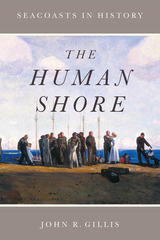 The Human Shore: Seacoasts in History
John R. Gillis
University of Chicago Press, 2012 Since before recorded history, people have congregated near water. But as growing populations around the globe continue to flow toward the coasts on an unprecedented scale and climate change raises water levels, our relationship to the sea has begun to take on new and potentially catastrophic dimensions. The latest generation of coastal dwellers lives largely in ignorance of the history of those who came before them, the natural environment, and the need to live sustainably on the world’s shores. Humanity has forgotten how to live with the oceans. In The Human Shore, a magisterial account of 100,000 years of seaside civilization, John R. Gillis recovers the coastal experience from its origins among the people who dwelled along the African shore to the bustle and glitz of today’s megacities and beach resorts. He takes readers from discussion of the possible coastal location of the Garden of Eden to the ancient communities that have existed along beaches, bays, and bayous since the beginning of human society to the crucial role played by coasts during the age of discovery and empire. An account of the mass movement of whole populations to the coasts in the last half-century brings the story of coastal life into the present. Along the way, Gillis addresses humankind’s changing relationship to the sea from an environmental perspective, laying out the history of the making and remaking of coastal landscapes—the creation of ports, the draining of wetlands, the introduction and extinction of marine animals, and the invention of the beach—while giving us a global understanding of our relationship to the water. Learned and deeply personal, The Human Shore is more than a history: it is the story of a space that has been central to the attitudes, plans, and existence of those who live and dream at land’s end.
 The Human Skeleton
Pat Shipman, Alan Walker, and David Bichell
Harvard University Press, 1985 This is the most comprehensive approach ever made to the human skeleton as a biological entity. It provides a holistic view, from the molecular and cellular level up to functional gross anatomy. The book synthesizes the latest research in a wide range of fields, including forensics, anthropology, cell biology, orthopedics, biomechanics, functional anatomy, and paleontology. Throughout the book the skeleton's functional and dynamic aspects are emphasized.
The first part of the book focuses on bone as living tissue: its composition, formation, growth and remodeling capabilities, and mechanical properties. The second part examines individual bones in the human body, combining strictly anatomical information with discussion of the major functions of each body section. For example, the chapter describing the axial skeleton is paired with one on the mechanics of breathing. The final part of the book surveys the archaeological and forensic applications of skeletal biology, including the estimation of age, sex, race, and stature; the effects of fracture and pathology on bone; and the modes of reconstructing skeletal remains. Elegant, detailed illustrations of the individual bones from several views and of the regions of the skeleton enhance the text.
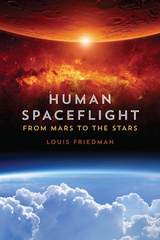 Human Spaceflight: From Mars to the Stars
Louis Friedman
University of Arizona Press, 2015 Mars, the red planet named for the god of war, a mysterious dust-ridden place, is most like Earth in its climate and seasons. Of all the possible destinations in space to travel, Mars is the most likely for humans to reach. According to esteemed scientist Louis Friedman, it may be the only destination outside the moon to ever see human footprints.
Far from diminishing our future in space, Human Spaceflight lays out a provocative future for human space travel. The noted aerospace engineer and scientist says that human space exploration will continue well into the future, but space travel by humans will stop at Mars. Instead, nanotechnology, space sails, robotics, biomolecular engineering, and artificial intelligence will provide the vehicles of the future for an exciting evolution not just of space travel but of humankind.
Friedman has worked with agencies around the globe on space exploration projects to extend human presence beyond Mars and beyond the solar system. He writes that once we accept Mars as the only viable destination for humans, our space program on planet Earth can become more exciting and more relevant. Mars, he writes, will take hundreds, even thousands, of years to settle. During that time, humans and all our supporting technologies will evolve, allowing our minds to be present throughout the universe while our bodies stay home on Earth and Mars.
 Human Structure
Matt Cartmill, William L. Hylander, and ,James Shafland
Harvard University Press, 1987 Human Structure is an innovative introduction to human gross anatomy with a twofold approach to view the basics of anatomy from a broad scientific perspective and to explain the facts of form and function in terms and concepts that minimize the usual confusion and anxiety of beginning anatomy studies. Functional, comparative, and developmental anatomy are ingeniously woven into a single explanatory perspective, presenting human anatomy as an intelligible whole rather than as a heap of disconnected facts to be memorized. As a result, Human Structure is suitable not only for first-year medical students but also for undergraduates in premedical or biological science courses, for students in paramedical or college-level nursing programs, and indeed for anyone seeking a refresher course in human anatomy.
The book begins with the generalized segmental organization characteristic of vertebrates and then examines the most obviously segmented parts of the human body: the bones, muscles, vessels, and nerves of the trunk between the neck and the pelvis. The book progresses through regions where the simple organizational plan has undergone more and more radical modifications and ends with the ancient and extreme specializations found in the head. At each step, the authors widen our intellectual understanding of how these modifications have been imposed, onto-genetically or phylogenetically, upon simpler precursors.
The prose is personal and literate, peppered with inventive elucidations of concepts and accompanied by a wealth of illustrations designed for conceptual clarity and ease of visualization. The level of presentation has been finely tuned, over several years of class testing, to enhance its pedagogical effectiveness in human anatomy courses.
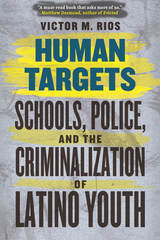 Human Targets: Schools, Police, and the Criminalization of Latino Youth
Victor M. Rios
University of Chicago Press, 2017 At fifteen, Victor Rios found himself a human target—flat on his ass amid a hail of shotgun fire, desperate for money and a place on the street. Faced with the choice of escalating a drug turf war or eking out a living elsewhere, he turned to a teacher, who mentored him and helped him find a job at an auto shop. That job would alter the course of his whole life—putting him on the road to college and eventually a PhD. Now, Rios is a rising star, hailed for his work studying the lives of African American and Latino youth.
In Human Targets, Rios takes us to the streets of California, where we encounter young men who find themselves in much the same situation as fifteen-year-old Victor. We follow young gang members into schools, homes, community organizations, and detention facilities, watch them interact with police, grow up to become fathers, get jobs, get rap sheets—and in some cases get killed. What is it that sets apart young people like Rios who succeed and survive from the ones who don’t? Rios makes a powerful case that the traditional good kid/bad kid, street kid/decent kid dichotomy is much too simplistic, arguing instead that authorities and institutions help create these identities—and that they can play an instrumental role in providing young people with the resources for shifting between roles. In Rios’s account, to be a poor Latino youth is to be a human target—victimized and considered an enemy by others, viewed as a threat to law enforcement and schools, and burdened by stigma, disrepute, and punishment. That has to change.
This is not another sensationalistic account of gang bangers. Instead, the book is a powerful look at how authority figures succeed—and fail—at seeing the multi-faceted identities of at-risk youths, youths who succeed—and fail—at demonstrating to the system that they are ready to change their lives. In our post-Ferguson era, Human Targets is essential reading.
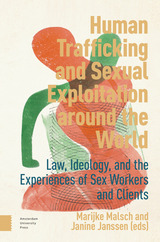 Human Trafficking and Sexual Exploitation around the World: Law, Ideology, and the Experiences of Sex Workers and Clients
Marijke Malsch
Amsterdam University Press, 2025 Sex work is often called the oldest profession in the world. It manifests itself in a plethora of forms. A move to private locations is now taking place: contacts are established via the Internet and meetings take place at appointed places. This makes it more difficult to monitor forced work, and exploitation therefore risks remaining undetected.
This book presents empirical findings regarding exploitation in various countries, considering sex workers, traffickers and clients, and the fight against human trafficking. Countries differ vastly in their legislative approaches, ranging from highly repressive to very liberal. This volume asks whether the ongoing process of making and changing laws is sufficiently effective in fighting human trafficking. Other interventions could obtain better outcomes, such as promoting more independence among women and helping trafficked individuals to get out. Less ideology and more attention to the facts of exploitation and sex work might help to achieve these aims.
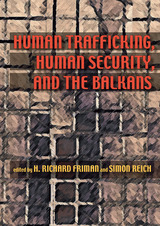 Human Trafficking, Human Security, and the Balkans
H. Richard Friman
University of Pittsburgh Press, 2007 In the aftermath of four Yugoslav wars, ongoing efforts at reconstruction in South Eastern Europe have devoted relatively limited attention to dimensions of human security that enhance protections for the region's most vulnerable populations in their daily lives. It is in this context that South Eastern Europe, and especially the Western Balkan region, has emerged as a nexus point in human trafficking.
Human Trafficking, Human Security, and the Balkans brings together leading scholars, NGO representatives, and government officials to analyze and offer solutions to this challenge. The contributors explore the economic dynamics of human trafficking in an era of globalization, which has greatly facilitated not only the flow of goods and services but also the trade in human beings. They also examine the effectiveness of international and transnational policies and practice, the impact of peacekeeping forces, and the emergence of national and regional action plans in the Western Balkans and, more broadly, in South Eastern Europe. Finally, they consider the nature and ramifications of the gap between human security rhetoric and institutional policy steps against human trafficking.
Human Trafficking in Medieval Europe: Slavery, Sexual Exploitation, and Prostitution
Christopher Paolella
Amsterdam University Press, 2020 Human trafficking has become a global concern over the last twenty years, but its violence has terrorized and traumatized its victims and survivors for millennia. This study examines the deep history of human trafficking from Late Antiquity to the Early Modern Period. It traces the evolution of trafficking patterns: the growth and decline of trafficking routes, the everchanging relationships between traffickers and authorities, and it examines the underlying causes that lead to vulnerability and thus to exploitation. As the reader will discover, the conditions that lead to human trafficking in the modern world, such as poverty, attitudes of entitlement, corruption, and violence, have a long and storied past. When we understand that past, we can better anticipate human trafficking’s future, and then we are better able to fight it.
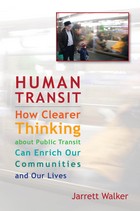 Human Transit: How Clearer Thinking about Public Transit Can Enrich Our Communities and Our Lives
Jarrett Walker
Island Press, 2011 Public transit is a powerful tool for addressing a huge range of urban problems, including traffic congestion and economic development as well as climate change. But while many people support transit in the abstract, it's often hard to channel that support into good transit investments. Part of the problem is that transit debates attract many kinds of experts, who often talk past each other. Ordinary people listen to a little of this and decide that transit is impossible to figure out.
Jarrett Walker believes that transit can be simple, if we focus first on the underlying geometry that all transit technologies share. In Human Transit, Walker supplies the basic tools, the critical questions, and the means to make smarter decisions about designing and implementing transit services.
Human Transit explains the fundamental geometry of transit that shapes successful systems; the process for fitting technology to a particular community; and the local choices that lead to transit-friendly development. Whether you are in the field or simply a concerned citizen, here is an accessible guide to achieving successful public transit that will enrich any community.
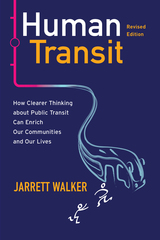 Human Transit, Revised Edition: How Clearer Thinking about Public Transit Can Enrich Our Communities and Our Lives
Jarrett Walker
Island Press, 2024 Transportation expert Jarrett Walker believes that transit can be simple, if we focus on the underlying geometry that all transit systems share. In Human Transit, Revised Edition, he provides the basic tools and critical questions needed to make smarter decisions about designing and implementing services, refreshed with updated information and examples.
The first edition of Human Transit, published in 2011, has become a classic for professionals, advocates, and interested citizens. No other book explains the basic principles of public transit in such lively and accessible prose, all based on a respect for your right to form your own opinion. Walker’s goal is not to make you share his values, but to give you the tools to clarify and advocate for yours.
Walker has updated and expanded the book to deepen its explanations. His ongoing work as a network planning consultant has provided a wealth of new examples, images, and tools. New topics include the problem with specialization; the role of flexible or “demand response” services; how to know when to redesign your network; and responding to tech-industry claims that transit will soon be obsolete. Finally, he has also added a major new section exploring the idea of access to opportunity as a core measure of transit’s success.
Whether you are a professional or a concerned citizen, the revised edition of this accessible guide can help you to achieve successful public transit that will enrich any community.
 The Human Value of Biology
Johan Hjort
Harvard University Press Strange as it may seem, this highly stimulating volume will be of as much interest to students of sociology and government as it will be to biologists. It is based upon Dr. Hjort’s notable work in the marine fisheries and in the whaling industry. His research, which has been concerned with population problems in the sea, has made him conscious of the special problems of living populations as distinguished from controlled phenomena in the laboratory. The first part of his book is devoted to a history of biological science and its relations to current philosophical systems. The author insists that biology should be interpreted by biologists and should free itself from domination by philosophies derived from physics and mathematics. The methods by which it developed as a science seem to him to fit its problems and materials better than those borrowed from the ideal sciences. He adds a strong demand for a wider study of population biology, the principles of which must be basic to any rational sociology, politics, and government. His criticism, from this point of view, of socialism and planned government in current politics, is particularly interesting.
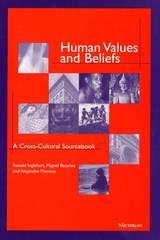 Human Values and Beliefs: A Cross-Cultural Sourcebook
Ronald Inglehart, Miguel Basanez, and Alejandro Moreno
University of Michigan Press, 1998 For over twenty-five years Ronald Inglehart and his colleagues have been collecting survey data on the beliefs and opinions of people all over the world on a variety of topics. This work led Inglehart to expound his noted theory about the development of post-materialist values in developed countries and explore its effect on politics. This book, based on the most comprehensive of these surveys, the World Values Survey conducted in over forty countries from 1990-93, publishes for the first time all of the findings of this survey. The questions cover issues such as politics, economics, religion, family life, and gender roles, and reflect differences in response by age, gender, economic standing, and education.
This book provides a wealth of data that will appeal to social scientists, journalists, people in international business, and policy makers interested in understanding social, political, or cultural attitudes in different countries.
Ronald Inglehart is Professor of Political Science, University of Michigan, and coauthor of Value Change in Global Perspective, as well as many other books and articles. Miguel Basanez is Professor of Political Science, Institutio Tecnologico Autonomo de Mexico, and director of MORI de Mexico. Alejandro Moreno is Professor of Political Science, Institutio Tecnologico Autonomo de Mexico.
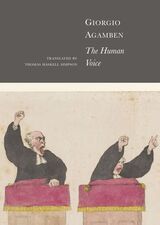 The Human Voice
Giorgio Agamben
Seagull Books, 2025 An inquiry into the origins of language and articulation, exploring how the transformation of the human voice shaped history, politics, and thought.
What does it mean to have a voice—and how does it shape what it means to be human? In The Human Voice, Giorgio Agamben embarks on a profound exploration of how the human voice transforms from mere sound into meaningful articulation, setting humans apart from the animal world. Tracing this transformation through ancient grammar and the history of writing, he unpacks the intricate relationship between voice and language, and the living being and the speaking subject.
Through a meticulous philosophical inquiry, Agamben reconstructs the mechanisms by which articulation turns expression into knowledge, revealing how the voice is the way we define humanity. This study reaches beyond linguistics, touching on politics and history, as it interrogates the enduring question of what—and who—is considered fully human.
Human: Voices of Tomorrow’s Doctors
Edited by Tolu Kehinde
Dartmouth College Press, 2019 Medical professionals are often viewed as a special breed of stoic figures whose tough grace allows them to stay strong as they confront human frailty and tragedy on a daily basis. Human is a new anthology that aims to dispel this unhelpful line of thought, revealing a more realistic picture of individuals shaped by forces—good and bad—just like the rest of us. Collecting writing from medical students around the world, Human aims to demystify medical education by showing the vulnerability in a group typically viewed as indestructible. It also seeks to remind medical trainees that, even though it may feel like their lives have been put on hold for the sake of their education, they are continually growing and evolving, and as worthy of love and a full life as anyone else—in short, that they are human.
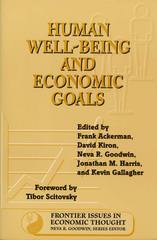 Human Well-Being and Economic Goals
Edited by Frank Ackerman, David Kiron, Neva R. Goodwin, Jonathan M. Harris, andKevin P. Gallagher; Foreword by Kenneth Arrow
Island Press, 1997 What are the ends of economic activity? According to neoclassical theory, efficient interaction of the profit-maximizing "ideal producer" and the utility-maximizing "ideal consumer" will eventually lead to some sort of social optimum. But is that social optimum the same as human well-being? Human Well-Being and Economic Goals addresses that issue, considering such questions as: - Does the maximization of individual welfare really lead to social welfare?
- How can we deal with questions of relative welfare and of equity?
- How do we define, or at least understand, individual and social welfare?
- And how can these things be measured, or even assessed?
Human Well-Being and Economic Goals brings together more than 75 concise summaries of the most significant literature in the field that consider issues of present and future individual and social welfare, national development, consumption, and equity. Like its predecessors in the Frontier Issues in Economic Thought series, it takes a multidisciplinary approach to economic concerns, examining their sociological, philosophical, and psychological aspects and implications as well as their economic underpinnings. Human Well-Being and Economic Goals provides a powerful introduction to the current and historical writings that examine the concept of human well-being in ways that can help us to set goals for economic activity and judge its success. It is a valuable summary and overview for students, economists, and social scientists concerned with these issues.
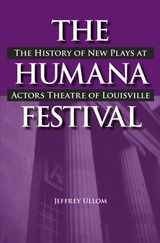 The Humana Festival: The History of New Plays at Actors Theatre of Louisville
Jeffrey Ullom
Southern Illinois University Press, 2008 Far from the glittering lights of Broadway, in a city known more for its horse racing than its artistic endeavors, an annual festival in Louisville, Kentucky, has transformed the landscape of the American theater. The Actors Theatre of Louisville—the Tony Award–winning state theater of Kentucky—in 1976 successfully created what became the nation's most respected new-play festival, the Humana Festival of New American Plays. The Humana Festival: The History of New Plays at Actors Theatre of Louisville examines the success of the festival and theater’s Pulitzer Prize–winning productions that for decades have reflected new-play trends in regional theaters and on Broadway—the result of the calculated decisions, dogged determination, and good luck of its producing director, Jon Jory. The volume details how Actors Theatre of Louisville was established, why the Humana Festival became successful in a short time, and how the event’s success has been maintained by the Louisville venue that has drawn theater critics from around the world for more than thirty years. Author Jeffrey Ullom charts the theater’s early struggles to survive, the battles between troupe leaders, and the desperate measures to secure financial support from the Louisville community. He examines how Jory established and expanded the festival to garner extraordinary local support, attract international attention, and entice preeminent American playwrights to premier their works in the Kentucky city. In The Humana Festival, Ullom provides a broad view of new-play development within artistic, administrative, and financial contexts. He analyzes the relationship between Broadway and regional theaters, outlining how the Humana Festival has changed the process of new-play development and even Broadway’s approach to discovering new work, and also highlights the struggles facing regional theaters across the country as they strive to balance artistic ingenuity and economic viability. Offering a rare look at the annual event, The Humana Festival provides the first insider’s view of the extraordinary efforts that produced the nation’s most successful new-play festival.
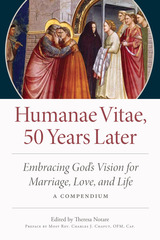 Humanae Vitae, 50 Years Later: Embracing God's Vision for Marriage, Love, and Life; A Compendium
Preface by Most. Rev. Charles J. Chaput, OFM, Cap.
Catholic University of America Press, 2019 In the life of the Catholic Church, the papal encyclical Humanae vitae represents a deepening of understanding regarding the nature of married love and the transmission of life. Despite fifty years (1968-2018) since it’s promulgation, many Catholics have yet to discover the treasure of these rich teachings. This volume therefore seeks to elucidate the encyclical’s reaffirmation of the divine plan. It does this in a unique way by providing essays from experts of various disciplines that include history, theology, science, medicine, law, and governmental policy.
The occasion of the fiftieth anniversary of Humanae vitae offers a teaching moment. In this compendium, experts representing a variety of disciplines including history, culture, theology, medicine, law, and psychology present their reflections upon God’s divine plan as described in Humanae vitae. The authors first presented this work in an abbreviated form at a symposium held at The Catholic University of America (April 4-6, 2018). Here, their presentations are substantively developed and hopefully will encourage further scholarly work. Ultimately, their purpose is to help the reader arrive at a more positive understanding of the teachings found in Humanae vitae. Although designed for the educated reader, the essays presume that when the teachings of Humanae vitae are embraced by men and women, they can contribute to the healing of the wounds of a world broken by sin but redeemed by Christ.
Humanae vitae, a generation later
Janet E Smith
Catholic University of America Press, 1991 Janet E. Smith presents a comprehensive review of this issue from a philosophical and theological perspective. Tracing the emergence of the debate from the mid-1960s and reviewing the documents from the Special Papl Commission established to advise Pope Paul VI, Smith also examines the Catholic Church's position on marriage, which provides context for its condemnation of contraception.
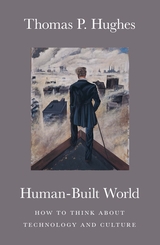 Human-Built World: How to Think about Technology and Culture
Thomas P. Hughes
University of Chicago Press, 2004 To most people, technology has been reduced to computers, consumer goods, and military weapons; we speak of "technological progress" in terms of RAM and CD-ROMs and the flatness of our television screens. In Human-Built World, thankfully, Thomas Hughes restores to technology the conceptual richness and depth it deserves by chronicling the ideas about technology expressed by influential Western thinkers who not only understood its multifaceted character but who also explored its creative potential.
Hughes draws on an enormous range of literature, art, and architecture to explore what technology has brought to society and culture, and to explain how we might begin to develop an "ecotechnology" that works with, not against, ecological systems. From the "Creator" model of development of the sixteenth century to the "big science" of the 1940s and 1950s to the architecture of Frank Gehry, Hughes nimbly charts the myriad ways that technology has been woven into the social and cultural fabric of different eras and the promises and problems it has offered. Thomas Jefferson, for instance, optimistically hoped that technology could be combined with nature to create an Edenic environment; Lewis Mumford, two centuries later, warned of the increasing mechanization of American life.
Such divergent views, Hughes shows, have existed side by side, demonstrating the fundamental idea that "in its variety, technology is full of contradictions, laden with human folly, saved by occasional benign deeds, and rich with unintended consequences." In Human-Built World, he offers the highly engaging history of these contradictions, follies, and consequences, a history that resurrects technology, rightfully, as more than gadgetry; it is in fact no less than an embodiment of human values.
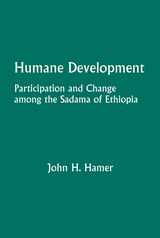 Humane Development: Participation and Change Among the Sadama of Ethiopia
John H. Hamer
University of Alabama Press, 1987 Seeks to show that the Sadama are a people quite adaptable to change on their own terms
Humane Development seeks to show that the Sadama are a people quite adaptable to change on their own terms. According to their narrative history and from what is know from documents in recent times, individuals have often taken risks that have sometimes favored and at other times gone against the enhancement of their lifestyle.
Certainly people can, as the experience of the Sadama shows, effectively participate in change at the local level. They bring a vast experience to the challenge of choosing, and also a knowledge of the relationship between their environment, tools, and organization that has enabled them to survive through the millennia. When people are permitted to draw upon their heritage in making choices, they approach the changing situation with confidence. Moreover, the opportunity to choose among alternatives, rather than being subjected to an externally made choice, maximizes the possibility for innovation.
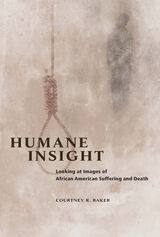 Humane Insight: Looking at Images of African American Suffering and Death
Courtney Baker
University of Illinois Press, 2017 In the history of black America, the image of the mortal, wounded, and dead black body has long been looked at by others from a safe distance. Courtney Baker questions the relationship between the spectator and victim and urges viewers to move beyond the safety of the "gaze" to cultivate a capacity for humane insight toward representations of human suffering. Utilizing the visual studies concept termed the "look," Baker interrogates how the notion of humanity was articulated and recognized in oft-referenced moments within the African American experience: the graphic brutality of the 1834 Lalaurie affair; the photographic exhibition of lynching, Without Sanctuary ; Emmett Till's murder and funeral; and the devastation caused by Hurricane Katrina. Contemplating these and other episodes, Baker traces how proponents of black freedom and dignity used the visual display of violence against the black body to galvanize action against racial injustice. An innovative cultural study that connects visual theory to African American history, Humane Insight asserts the importance of ethics in our analysis of race and visual culture, and reveals how representations of pain can become the currency of black liberation from injustice.
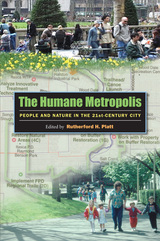 The Humane Metropolis: People and Nature in the 21st-Century City
Rutherford H. Platt
University of Massachusetts Press, 2006 Four-fifths of Americans now live in the nation's sprawling metropolitan areas, and half of the world's population is now classified as "urban." As cities become the dominant living evironment for humans, there is growing concern about how to make such places more habitable, more healthy and safe, more ecological, and more equitable—in short, more "humane."
This book explores the prospects for a more humane metropolis through a series of essays and case studies that consider why and how urban places can be made greener and more amenable. Its point of departure is the legacy of William H. Whyte (1917-1999), one of America's most admired urban thinkers. From his eyrie high above Manhattan in the offices of the Rockefeller Brothers Fund, Whyte laid the foundation for today's "smart growth" and "new urbanist" movements with books such as The Last Landscape (1968). His passion for improving the habitability of cities and suburbs is reflected in the diverse grassroots urban design and regreening strategies discussed in this volume.
Topics examined in this book include urban and regional greenspaces, urban ecological restoration, social equity, and green design. Some of the contributors are recognized academic experts, while others offer direct practical knowledge of particular problems and initiatives. The editor's introduction and epilogue set the individual chapters in a broader context and suggest how the strategies described, if widely replicated, may help create more humane urban environments.
In addition to Rutherford H. Platt, contributors to the volume include Carl Anthony, Thomas Balsley, Timothy Beatley, Eugenie L. Birch, Edward J. Blakely, Colin M. Cathcart, Steven E. Clemants, Christopher A. De Sousa, Steven N. Handel, Peter Harnik, Michael C. Houck, Jerold S. Kayden, Albert LaFarge, Andrew Light, Charles E. Little, Anne C. Lusk, Thalya Parilla, Deborah E. Popper, Frank J. Popper, Mary V. Rickel, Cynthia Rosenzweig, Robert L. Ryan, Laurin N. Sievert, Andrew G. Wiley-Schwartz, and Ann Louise Strong.
Included in the back of the book is a DVD of a 22-minute film created by Ted White, which serves as a companion to the text.
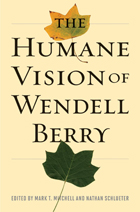 The Humane Vision of Wendell Berry
Mark T. Mitchell
Intercollegiate Studies Institute, 2011
A striking contribution to the
conversation that is conservatism
Wendell Berry—poet, novelist, essayist, critic, farmer—has won the admiration of Americans from all walks of life and from across the political spectrum. His writings treat an extraordinary range of subjects, including politics, economics, ecology, farming, work, marriage, religion, and education. But as this enlightening new book shows, such diverse writings are united by a humane vision that finds its inspiration in the great moral and literary tradition of the West.
In The Humane Vision of Wendell Berry, Mark T. Mitchell and Nathan Schlueter bring together a distinguished roster of writers to critically engage Berry’s ideas. The volume features original contributions from Rod Dreher, Anthony Esolen, Allan Carlson, Richard Gamble, Jason Peters, Anne Husted Burleigh, Patrick J. Deneen, Caleb Stegall, Luke Schlueter, Matt Bonzo, Michael Stevens, D. G. Hart, Mark Shiffman, and William Edmund Fahey, as well as a classic piece by Wallace Stegner.
Together, these authors situation Berry’s ideas within the larger context of conservative thought. His vision stands for reality in all its facets and against all reductive “isms”—for intellect against intellectualism, individuality against individualism, community against communitarianism, liberty against libertarianism. Wendell Berry calls his readers to live lives of gratitude, responsibility, friendship, and love—notions that, as this important new book makes clear, should be at the heart of a thoughtful and coherent conservatism.
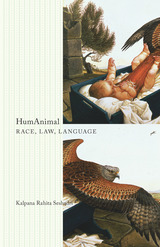 HumAnimal: Race, Law, Language
Kalpana Rahita Seshadri
University of Minnesota Press, 2012 HumAnimal explores the experience of dehumanization as the privation of speech. Taking up the figure of silence as the space between human and animal, it traces the potential for an alternate political and ethical way of life beyond law. Employing the resources offered by deconstruction as well as an ontological critique of biopower, Kalpana Rahita Seshadri suggests that humAnimal, as the site of impropriety opened by racism and manifested by silence, can be political and hazardous to power. Through the lens of such works as Coetzee’s Foe, Chesnutt’s “The Dumb Witness,” Dr. Itard’s “wild child,” and aerialist Philippe Petit’s Man on Wire, Seshadri lucidly brings Derrida’s concept of the trace and his theory of sovereignty into conversation with Agamben’s investigation of the analytics of power. The task is twofold: on the one hand, to question the logocentric presumption that determines the separation between human and animal, and on the other to examine the conflation of this separation as an instrument of power in the practice of racism. Thus HumAnimal details the differences and intersections between Derrida and Agamben in their respective approaches to power, claiming that to think simultaneously within the registers of deconstruction (which conceives of power as a symptom of the metaphysics of presence) and biopolitics (which conceives of power as the operation of difference) entails a specification of the political and ethical consequences that attends the two perspectives. When considered as the potential of language to refuse the law of signification and semantics, silence can neutralize the exercise of power through language, and Seshadri’s inquiry discloses a counterpower that does not so much oppose or destroy the politics of the subject but rather neutralizes it and renders it ineffective.
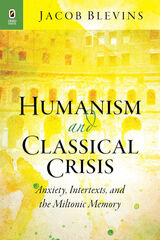 Humanism and Classical Crisis: Anxiety, Intertexts, and the Miltonic Memory
Jacob Blevins
Ohio State University Press, 2014 While earlier critics have demonstrated significant insight into the relationship between the classical world and the early modern period, Humanism and Classical Crisis: Anxiety, Intertexts, and the Miltonic Memory, by Jacob Blevins, offers a new psychoanalytic approach to understanding classical reception, specifically during the early modern period. Blevins asserts that influence and imitation are primarily driven by anxious desires to identify the poetic self with the past while simultaneously affirming the autonomy and individuality of the self within its own cultural, ideological, and poetic moment. Since the poet cannot hold positions simultaneously in both past and present, anxiety irrupts as the poet fails to understand the fissures in his sense of identity and how that identity is articulated in poetic expression.
Blevins grounds his approach in the theories of Jacques Lacan, whose work challenges the very notions of what identity is and, as a result, exposes the complexities of identity formation. Areas and authors covered include imitations and translations of classical works of the sixteenth and seventeenth centuries in England and France by Andrew Marvell, Edmund Spencer, Pierre Ronsard, Joachim Du Bellay, Ben Jonson, Sir Thomas Wyatt, and John Milton.
This book not only provides a new perspective on early modern poetic imitation, but also offers a foundational methodology for examining the classical presence within the modern self.
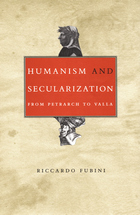 Humanism and Secularization: From Petrarch to Valla
Riccardo Fubini
Duke University Press, 2003 The Renaissance movement known as humanism eventually spread from Italy through all of western Europe, transforming early modern culture in ways that are still being felt and debated. Central to these debates—and to this book—is the question of whether (and how) the humanist movement contributed to the secularization of Western cultural traditions at the end of the Middle Ages. A preeminent scholar of Italian humanism, Riccardo Fubini approaches this question in a new way—by redefining the problem of secularization more carefully to show how humanists can at once be secularizers and religious thinkers. The result is a provocative vision of the humanist movement.
Humanism and Secularization offers a nuanced account of humanists contesting medieval ideas about authority not in order to reject Christianity or even orthodoxy, but to claim for themselves the right to define what it meant to be a Christian. Fubini analyzes key texts by major humanists—isuch as Petrarch, Poggio, and Valla—from the first century of the movement. As he subtly works out these authors’ views on religion and the Church from both biographical and textual information, Fubini reveals in detail the new historical consciousness that animated the humanists in their reading of classical and patristic texts. His book as a whole shows convincingly just how radical the humanism of the first half of the fifteenth century was and how sharply it challenged well-entrenched ideas and institutions. Appearing here in English for the first time, his work provides a model set of readings of humanist texts and a critical perspective on Italian humanism that will alter and enrich discussion and understanding of the nature of the humanist movement.
Humanism and the Latin Classics
Aldus Manutius
Harvard University Press, 2017 Aldus Manutius (c. 1451–1515) was the most important and innovative scholarly publisher of the Renaissance. His Aldine Press was responsible for more first editions of classical literature, philosophy, and science than any other publisher before or since. A companion volume to I Tatti’s The Greek Classics (2016), Humanism and the Latin Classics presents all of Aldus’s prefaces to his editions of works by ancient Latin and modern humanist writers, translated for the first time into English, along with other illustrative writings by Aldus and his collaborators. They provide unique insight into the world of scholarly publishing in Renaissance Venice.
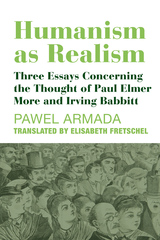 Humanism as Realism: Three Essays Concerning the Thought of Paul Elmer More and Irving Babbitt
Lisa Fretschel
St. Augustine's Press, 2023 Originally published in Polish in 2019 by The Lethe Foundation, this book demonstrates the relevance and important of Paul Elmer More (1864–1937) and Irving Babbitt (1865–1933). Their collective legacy is one of responsible and truly thoughtful living. Their treatment of Humanists and their diagnosis of modernity is an important theme in this work, and the indication of the political consequences of humanism.
"This is a protreptic book. Its main goal is to encourage people to undertake independent studies or more generally, simply to think independently. If we want to think for ourselves, and not like preprogrammed humanoids, we can’t do so in a vacuum. We have to lean on something. In the Author’s view, the more than century-old writings of Paul Elmer More and Irving Babbitt are perfectly suited to the role of such a support for us, living in the here and now. They make it possible for us to dig ourselves out from underneath the heaps of opinions, “principles” or “theories” that allegedly can’t be rejected, that we’re obliged to follow, but that have a paralyzing and dumbing-down effect on us, making our lives from the
outset seems like the dream of a childish old man."
––Taken from the Preface by Pawel Armada
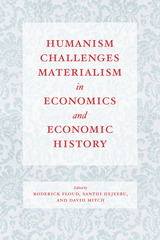 Humanism Challenges Materialism in Economics and Economic History
Edited by Roderick Floud, Santhi Hejeebu, and David Mitch
University of Chicago Press, 2016 Most of the existing research on economic history relies either solely or ultimately on calculations of material interest to explain the major events of the modern world. However, care must be taken not to rely too heavily on materialism, with its associated confidence in perfectly rational actors that simply do not exist. What is needed for a more cogent understanding of the long history of capitalist growth is a more realistic, human-centered approach that can take account of the role of nonmaterial values and beliefs, an approach convincingly articulated by Deirdre McCloskey in her landmark trilogy of books on the moral and ethical basis of modern economic life.
With Humanism Challenges Materialism in Economics and Economic History, Roderick Floud, Santhi Hejeebu, and David Mitch have brought together a distinguished group of scholars in economics, economic history, political science, philosophy, gender studies, and communications who synthesize and build on McCloskey’s work. The essays in this volume illustrate the ways in which the humanistic approach to economics that McCloskey pioneered can open up new vistas for the study of economic history and cultivate rich synergies with a wide range of disciplines. The contributors show how values and beliefs become embedded in the language of economics and shape economic outcomes. Chapters on methodology are accompanied by case studies discussing particular episodes in economic history.
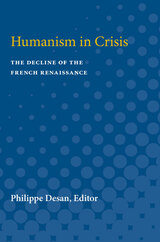 Humanism in Crisis: The Decline of the French Renaissance
Philippe Desan, Editor
University of Michigan Press, 1991 The uniqueness and importance of Humanism in Crisis arises from the way in which a significant historical event—the end of the French Renaissance—is examined from several different perspectives in order to provide a thorough investigation of its causes and consequences. Although historians, philosophers, sociologists, and literary critics view the French Renaissance differently, they all seem to agree on the notion that something happened between 1580 and 1630—between Montaigne and Descartes—that transformed every aspect of society and that undermined the foundation of humanism in France, dividing the French Renaissance from the "Grand siècle" that followed it. The causes of this decline, however, are as obscure as a precise determination of when the French Renaissance "died." In Humanism in Crisis, fourteen internationally known scholars examine such topics as education, philosophy, scientific method, historical relativism, cosmography, literary genres, everyday life, medicine, and mythology and detect a series of crises that acted to bring about the decline of humanism and the end of the French Renaissance. The diversity of approaches allows a comprehensive vision of society to be presented. Moreover, several essays provide answers to questions asked in others, thus creating a sense of unity by relating individual contributions to each other.
 Humanist Comedies
Edited and translated by Gary R. Grund
Harvard University Press, 2005 The five comedies included in this volume, three of which have never been translated into English, present a characteristic sampling of comic form as it was interpreted by some of the most important Latin humanists of the Quattrocento. Pier Paolo Vergerio's Paulus (ca. 1390), Philodoxeos fabula (1424) by Leon Battista Alberti, Philogenia et Epiphebus (ca. 1440) by Ugolino Pisani, Chrysis (1444) by Aeneas Silvius Piccolomini (later Pope Pius II), and Tommaso Medio's Epirota (1483) span nearly the entire period and are a valuable gauge of its changing literary tastes, tastes nourished by the ancient comic drama of Plautus and Terence. While the earliest of the humanist comedies seem almost medieval in their moralism, the didacticism of the pulpit is cleverly seasoned with the unabashed realism of the brothel to produce a mixture that looks forward to the more modern, sophisticated comedies written in the vernacular during the Cinquecento.
 Humanist Educational Treatises
Edited and translated by Craig W. Kallendorf
Harvard University Press, 2002 The cycle of disciplines now known as the humanities emerged in their modern form during the Italian Renaissance as the result of an educational movement begun by humanist teachers, writers, and scholars of the early Quattrocento. The movement argued for the usefulness of classical literature as an instrument for training young men and women, not only in the arts of language and eloquence, but also in civic virtue and practical wisdom. This volume contains four of the most important theoretical statements that emerged from the early humanists’ efforts to reform medieval education.
The four texts are Pier Paolo Vergerio, “The Character and Studies Befitting a Free-Born Youth”; Leonardo Bruni, “The Study of Literature”; Aeneas Silvius Piccolomini (Pope Pius II), “The Education of Boys”; and Battista Guarino, “A Program of Teaching and Learning.” The Vergerio and Guarino texts appear in English for the first time.
 Humanist Educational Treatises
Translated by Craig W. Kallendorf
Harvard University Press, 2008 The disciplines now known as the humanities emerged in their modern form during the Italian Renaissance as the result of an educational movement begun by humanist teachers, writers, and scholars in the early fourteenth century. These educators argued for the usefulness of classical literature as an instrument for training young men and women, not only in the arts of language and eloquence, but also in civic virtue and practical wisdom.
This volume provides new translations, commissioned for the I Tatti Renaissance Library, of four of the most important theoretical statements that emerged from the early humanists’ efforts to reform medieval education: Pier Paolo Vergerio, “The Character and Studies Befitting a Free-Born Youth”; Leonardo Bruni, “The Study of Literature”; Aeneas Silvius Piccolomini (Pope Pius II), “The Education of Boys”; and Battista Guarino, “A Program of Teaching and Learning.”
The original text of these four documents with Craig W. Kallendorf’s translation is also available in a facing-page edition.
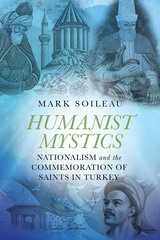 Humanist Mystics: Nationalism and the Commemoration of Saints in Turkey
Mark Soileau
University of Utah Press, 2018 When the Ottoman Empire met its demise in the early twentieth century, the new Republic of Turkey closed down the Sufi orders, rationalizing that they were antimodern. Yet the nascent nation, faced with defining its cultural heritage, soon began to promote the legacies of three Sufi saints: Mevlana Celaleddin Rumi, Hacı Bektaş Veli, and Yunus Emre. Their Turkish ethnicity, along with universalist themes found in their poetry and legends—of love, peace, fellowship, and tolerance—became the focus of their commemoration. With this reinterpretation of their characters—part of a broader secularist project—these saints came to be considered the great Turkish humanists. Their veneration came to play an important role in the nationalist formulation of Turkish culture, but the universalism of their humanism has exposed fissures in society over the place of religion in the nation.
Humanist Mystics is the first book to examine Islam and secularism within Turkish nationalist ideology through the lens of commemorated saints. Soileau surveys Anatolian and Turkish religious and political history as the context for his closer attention to the lives and influence of these three Sufi saints. By comparing premodern hagiographic and scholarly representations with twentieth-century monographs, literary works, artistic media, and commemorative ceremonies, he shows how the saints have been transformed into humanist mystics and how this change has led to debates about their character and relevance.
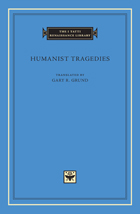 Humanist Tragedies
Gary R. Grund
Harvard University Press, 2011 Humanist Tragedies, like its companion volume Humanist Comedies (ITRL 19), contains a representative sampling of Latin drama written during the Tre- and Quattrocento. The five tragedies included in this volume—Albertino Mussato’s Ecerinis (1314), Antonio Loschi’s Achilleis (ca. 1387), Gregorio Corraro’s Progne (ca. 1429), Leonardo Dati’s Hyempsal (ca. 1442), and Marcellino Verardi’s Fernandus servatus (1493)—were nourished by a potent amalgam of classical, medieval, and pre-humanist sources.
Just as Latin humanist comedy depended heavily upon Plautus and Terence, humanist tragedy drew its inspiration primarily from the nine plays of Seneca. Dramatists also used ancient legends or contemporary history as source material, dramatizing them as Seneca might have done. Some even attempted to outdo Seneca, exaggerating the bloody sensationalism, the bombastic rhetoric, and the insistence on retributive justice for which he was famous.
Unlike comedy, which drew its narratives from ordinary life and from love, sex, money, and manners, tragedy was not concerned with human foibles but with distant tragic heroes. The impossible choices faced by larger-than-life men and women whose heroic destinies hung in the balance gave tragedy a considerably shorter shelf-life than comedies. While comedy stayed relevant, tragedy became problematic, evolving into the hybrid genre of tragicomedy by the end of the Quattrocento. Humanist tragedy testifies to the momentous changes in literary and cultural conventions that occurred during the Renaissance.
Humanistic Letters: The Irving Babbitt-Paul Elmer More Correspondence
Eric Adler
University of Missouri Press, 2023 Irving Babbitt (1865–1933) and Paul Elmer More (1864–1937) were the leading lights of the New Humanism, a consequential movement of literary and social criticism in America. Through their writings on literary, educational, cultural, religious, and political topics, they influenced countless important thinkers, such as T.S. Eliot, C.S. Lewis, Russell Kirk, Benedetto Croce, Werner Jaeger, and George Will. Their work became the source of heated public debates in the 1920s and early 1930s. The belligerent criticisms of Babbitt and More—composed by such famous intellectuals as Ernest Hemmingway and H.L. Mencken—have ensured that the New Humanism has seldom been properly appreciated. Humanistic Letters helps remedy this problem, by providing for the first time the extant correspondence of Babbitt and More, which gets to the heart of their intellectual project.
The Humanistic Value of Archaeology
Rhys Carpenter
Harvard University Press This informative and stimulating book will introduce the reader to the alluring new science of archaeology, which is responsible for as much widening of human horizons as are any of the physical sciences. Rhys Carpenter chiefly surveys the contribution of archaeology to the study of classical architecture, of Greek literature, of sculpture, and of painting. As an archaeologist of experience and repute, he is unusually competent to express an opinion on the manifold problems which he raises in the book.
 The Humanist-Scholastic Debate in the Renaissance and the Reformation
Erika Rummel
Harvard University Press, 1995 In the last half of the fifteenth century, the classic Platonic debate over the respective merits of rhetoric and philosophy was replayed in the debate between humanists and scholastics over philology and dialectic. The intense dispute between representatives of the two camps fueled many of the most important intellectual developments of the Renaissance and Reformation. Erika Rummel delves into the extensive primary sources of the times, bringing the issues and their continuing legacy to light and making a valuable contribution to our understanding of the intellectual climate of early modern Europe.
Rummel demonstrates how the passionately fought issue of the period changed focus as humanists such as Lorenzo Valla and Desiderius Erasmus applied philological skills to Scripture. The controversy over form versus content entered a new phase, pitting humanists trained as philologists against scholastic theologians trained as dialecticians. Rummel shows us the framework for the debate still intact as the medium/message dichotomy, and traces its development into quarrels over qualification and entitlement in the academy, as theologians and humanists disputed the intellectual and territorial boundaries of their respective disciplines. Finally, in the first half of the sixteenth century we see the controversy entering the sphere of doctrinal dispute. The question of authority became centered not only on professional competence but also on the more explosive issues of faith and Christian teaching.
This in-depth study will reclaim the attention of those who believe these debates were merely personal and episodic; Rummel's innovative research provides ample evidence that the polemics of the age arose from a fundamental conflict over methodology and the freedom to pursue research.
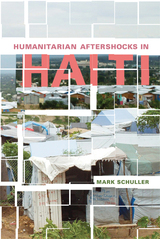 Humanitarian Aftershocks in Haiti
Schuller, Mark
Rutgers University Press, 2016 Winner of the 2016 Anthropology in Media Award from the American Anthropological Association
The 2010 earthquake in Haiti was one of the deadliest disasters in modern history, sparking an international aid response—with pledges and donations of $16 billion—that was exceedingly generous. But now, five years later, that generous aid has clearly failed. In Humanitarian Aftershocks in Haiti, anthropologist Mark Schuller captures the voices of those involved in the earthquake aid response, and they paint a sharp, unflattering view of the humanitarian enterprise.
Schuller led an independent study of eight displaced-persons camps in Haiti, compiling more than 150 interviews ranging from Haitian front-line workers and camp directors to foreign humanitarians and many displaced Haitian people. The result is an insightful account of why the multi-billion-dollar aid response not only did little to help but also did much harm, triggering a range of unintended consequences, rupturing Haitian social and cultural institutions, and actually increasing violence, especially against women. The book shows how Haitian people were removed from any real decision-making, replaced by a top-down, NGO-dominated system of humanitarian aid, led by an army of often young, inexperienced foreign workers. Ignorant of Haitian culture, these aid workers unwittingly enacted policies that triggered a range of negative results. Haitian interviewees also note that the NGOs “planted the flag,” and often tended to “just do something,” always with an eye to the “photo op” (in no small part due to the competition over funding). Worse yet, they blindly supported the eviction of displaced people from the camps, forcing earthquake victims to relocate in vast shantytowns that were hotbeds of violence.
Humanitarian Aftershocks in Haiti concludes with suggestions to help improve humanitarian aid in the future, perhaps most notably, that aid workers listen to—and respect the culture of—the victims of catastrophe.
Humanitarian Crises: The Medical and Public Health Response
Jennifer Leaning M.D.
Harvard University Press, 1999 Since the late 1980s the international relief community has seen its resources and personnel stressed beyond capacity by humanitarian crises--large-scale, man-made catastrophes such as the conflicts in Somalia, Bosnia, Rwanda, Chechnya, Zaire, and elsewhere. Waged within collapsing states, political and ethnic strife targets civilians, causes mass population dislocation and widespread human rights abuses, and impedes the efforts of relief organizations to respond effectively. Covering topics ranging from emergency public health measures to the psychological trauma of relief workers, this volume presents both a seasoned assessment of current practice and proposals for improving operational efforts in the future. The discussion also raises important questions relating to the definition and direction of the overall humanitarian mission.
 Humanitarian Protection for Prisoners of War and Refugees in the Long Aftermath of the First World War
Francesca Piana
Leiden University Press, 2025 At the end of WWI, millions of military and civilians were displaced across Europe, the south of the Caucasus, and the Eastern Mediterranean. While the majority made their way home, genocide, revolution, and post-war instabilities complicated the repatriation of prisoners of war from Russia and the Central Powers and pushed Russian and Armenian refugees into exile. In response, an array of international organizations intervened: three of them, the International Committee of the Red Cross, the League of Nations, and the International Labor Organization, implemented humanitarian, political, and legal measures to protect prisoners of war and refugees. This book tells a story of failures and innovations, where humanitarians interacted with the persons assisted in refugee camps, agricultural colonies, trains, and harbors, which were often situated “at the doors of Europe” in order to preserve peace at its heart. Diplomatic negotiations and mundane practices of care concurred in the emergence of a plural, discordant, and partial governance of refugee protection.
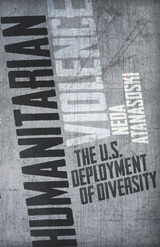 Humanitarian Violence: The U.S. Deployment of Diversity
Neda Atanasoski
University of Minnesota Press, 2013 When is a war not a war? When it is undertaken in the name of democracy, against the forces of racism, sexism, and religious and political persecution? This is the new world of warfare that Neda Atanasoski observes in Humanitarian Violence, different in name from the old imperialism but not so different in kind. In particular, she considers U.S. militarism—humanitarian militarism—during the Vietnam War, the Soviet-Afghan War, and the 1990s wars of secession in the former Yugoslavia. What this book brings to light—through novels, travel narratives, photojournalism, films, news media, and political rhetoric—is in fact a system of postsocialist imperialism based on humanitarian ethics. In the fiction of the United States as a multicultural haven, which morally underwrites the nation’s equally brutal waging of war and making of peace, parts of the world are subject to the violence of U.S. power because they are portrayed to be homogeneous and racially, religiously, and sexually intolerant—and thus permanently in need of reform. The entangled notions of humanity and atrocity that follow from such mediations of war and crisis have refigured conceptions of racial and religious freedom in the post–Cold War era. The resulting cultural narratives, Atanasoski suggests, tend to racialize ideological differences—whereas previous forms of imperialism racialized bodies. In place of the European racial imperialism, U.S. settler colonialism, and pre–civil rights racial constructions that associated racial difference with a devaluing of nonwhite bodies, Humanitarian Violence identifies an emerging discourse of race that focuses on ideological and cultural differences and makes postsocialist and Islamic nations the potential targets of U.S. disciplining violence.
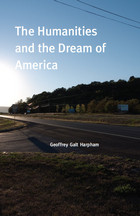 The Humanities and the Dream of America
Geoffrey Galt Harpham
University of Chicago Press, 2011 In this bracing and original book, Geoffrey Galt Harpham argues that today’s humanities are an invention of the American academy in the years following World War II, when they were first conceived as an expression of American culture and an instrument of American national interests. The humanities portray a “dream of America” in two senses: they represent an aspiration of Americans since the first days of the Republic for a state so secure and prosperous that people could enjoy and appreciate culture for its own sake; and they embody in academic terms an idealized conception of the American national character. Although they are struggling to retain their status in America, the concept of the humanities has spread to other parts of the world and remains one of America's most distinctive and valuable contributions to higher education. The Humanities and the Dream of America explores a number of linked problems that have emerged in recent years: the role, at once inspiring and disturbing, played by philology in the formation of the humanities; the reasons for the humanities’ perpetual state of “crisis”; the shaping role of philanthropy in the humanities; and the new possibilities for literary study offered by the subject of pleasure. Framed by essays that draw on Harpham’s pedagogical experiences abroad and as a lecturer at the U.S. Air Force Academy, as well as his vantage as director of the National Humanities Center, this book provides an essential perspective on the history, ideology, and future of this important topic.
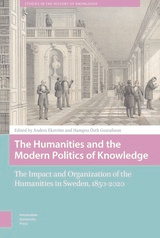 The Humanities and the Modern Politics of Knowledge: The Impact and Organization of the Humanities in Sweden, 1850-2020
Anders Ekström
Amsterdam University Press, 2022 This book addresses the shifting status of the humanities through a national case study spanning two centuries. The societal function of the humanities is considered from the flexible perspective of knowledge politics in order to historicize notions of impact and intellectual organization that tend to be taken for granted. The focus on modern Sweden enables an extended but still empirically coherent historical analysis, inviting critical comparisons with the growing literature on the history of the humanities from around the world. In the Swedish case, the humanities were instrumental to the construction of modern societal institutions, political movements, and professional education in the second half of the 19th century, while in the 20th century, the sense of future-making shifted towards science and medicine, and later technology and economy. The very rationale of the humanities was thus put under pressure as their social contract required novel negotiations. Their state and connections to society were nevertheless of a complex and ambiguous character, as is demonstrated by this volume whose contributions explore the many faces and places of the modern humanities.
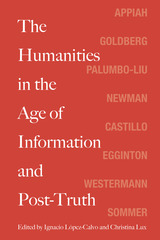 The Humanities in the Age of Information and Post-Truth
Edited by Ignacio López-Calvo and Christina Lux
Northwestern University Press, 2019 The essays in The Humanities in the Age of Information and Post-Truth represent a defense of the social function of the humanities in today's society. Edited by Ignacio López-Calvo and Christina Lux, the volume explains different ways in which the humanities and the arts, beyond their intrinsic and nonfunctional value, may be a valuable tool in our search for social justice, human empathy, freedom, and peace, all the while helping us answer many of the twenty-first century's big questions. Some essays explore the ways in which the humanities may help us imagine a different, more just world, and articulate politically effective mechanisms to achieve such goals. Others address the place of the humanities and the arts amid the ontological and epistemological uncertainties constantly produced in a fast-changing world.
While the reader may suspect that these types of lucubration are a desperate reaction to decreased public funding for the humanities worldwide, a decreased enrollment of students, or anxiety over the future of our profession, there is in this volume a coherent argument for the continued need, perhaps more now than ever, to invest in humanities education if we are to have informed and socially conscious citizens rather than just willing consumers and obedient workers. Furthermore, the essays prove that the humanities and the arts are, after all, not a luxury but an integral part of a complete scholarly education.
The Humanities in the Age of Technology
Ciriaco Morón Arroyo
Catholic University of America Press, 2002 Students of the humanities confront two fundamental questions: How valid and rigorous is the type of knowledge attained in these disciplines? And what good is it? In The Humanities in the Age of Technology, Ciriaco Morón Arroyo offers a systematic inquiry into these questions and outlines the ongoing crisis of the humanities.
Humanities in the Time of AI
Laurent Dubreuil
University of Minnesota Press, 2025 Why AI offers a chance for the humanities to strengthen their relevance and significance
If humanistic research consists of the generation of consensus positions, simple expression, summarized texts, or passable translations, then we have arrived at the place where AI is able to accomplish these different missions to a convincing degree. However, Laurent Dubreuil argues, such tasks do not, in any way, constitute the humanities. On the contrary, he posits, a maximalist take on scholarship would not focus on generation but on creation, as a subject and as an object. Dubreuil seizes the opportunity of what AI reveals about the meaning of humanistic inquiry to offer a path for the renewal of the humanities on transhistorical, transcultural, and transdisciplinary grounds.
 Humanity in Crisis: Ethical and Religious Response to Refugees
David Hollenbach, SJ
Georgetown University Press, 2023 The major humanitarian crises of recent years are well known: the Shoah, the killing fields of Cambodia, the Rwandan genocide, the massacre in Bosnia, and the tsunami in Southeast Asia, as well as the bloody conflicts in South Sudan, Syria, and Afghanistan. Millions have been killed and many millions more have been driven from their homes; the number of refugees and internally displaced persons has reached record levels. Could these crises have been prevented? Why do they continue to happen? This book seeks to understand how humanity itself is in crisis, and what we can do about it. Hollenbach draws on the values that have shaped major humanitarian initiatives over the past century and a half, such as the commitments of the International Committee of the Red Cross, Oxfam, Doctors Without Borders, as well as the values of diverse religious traditions, including Catholicism, to examine the scope of our responsibilities and practical solutions to these global crises. He also explores the economic and political causes of these tragedies, and uncovers key moral issues for both policy-makers and for practitioners working in humanitarian agencies and faith communities.
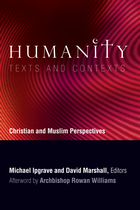 Humanity: Texts and Contexts: Christian and Muslim Perspectives
Michael Ipgrave and David Marshall, Editors. Afterword by Archbishop Rowan Williams
Georgetown University Press, 2015 Humanity: Texts and Contexts is a record of the 2007 Singapore “Building Bridges” seminar, an annual dialogue between Muslim and Christian scholars cosponsored by Georgetown University and the Archbishop of Canterbury. This volume explores three central questions: What does it mean to be human? What is the significance of the diversity that is evident among human beings? And what are the challenges that humans face living within the natural world? A distinguished group of scholars focuses on the theological responses to each of these questions, drawing on the wealth of material found in both Christian and Islamic scriptures. Part one lays out the three issues of human identity, difference, and guardianship. Part two explores scriptural texts side by side, pairing Christian and Islamic scholars who examine such themes as human dignity, human alienation, human destiny, humanity and gender, humanity and diversity, and humanity and the environment. In addition to contributions from an international cast of outstanding scholars, the book includes an afterword by Archbishop Rowan Williams.
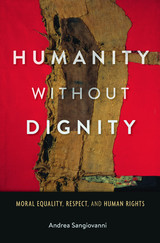 Humanity without Dignity: Moral Equality, Respect, and Human Rights
Andrea Sangiovanni
Harvard University Press, 2017 Name any valued human trait—intelligence, wit, charm, grace, strength—and you will find an inexhaustible variety and complexity in its expression among individuals. Yet we insist that such diversity does not provide grounds for differential treatment at the most basic level. Whatever merit, blame, praise, love, or hate we receive as beings with a particular past and a particular constitution, we are always and everywhere due equal respect merely as persons.
But why? Most who attempt to answer this question appeal to the idea that all human beings possess an intrinsic dignity and worth—grounded in our capacities, for example, to reason, reflect, or love—that raises us up in the order of nature. Andrea Sangiovanni rejects this predominant view and offers a radical alternative.
To understand our commitment to basic equality, Humanity without Dignity argues that we must begin with a consideration not of equality but of inequality. Rather than search for a chimerical value-bestowing capacity possessed to an equal extent by each one of us, we ought to ask: Why and when is it wrong to treat others as inferior? Sangiovanni comes to the conclusion that our commitment to moral equality is best explained by a rejection of cruelty rather than a celebration of rational capacity. He traces the impact of this fundamental shift for our understanding of human rights and the norms of anti-discrimination that underlie it.
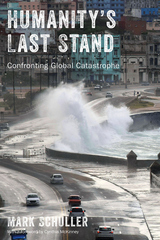 Humanity's Last Stand: Confronting Global Catastrophe
Mark Schuller
Rutgers University Press, 2021 Are we as a species headed towards extinction? As our economic system renders our planet increasingly inhospitable to human life, powerful individuals fight over limited resources, and racist reaction to migration strains the social fabric of many countries. How can we retain our humanity in the midst of these life-and-death struggles? Humanity’s Last Stand dares to ask these big questions, exploring the interconnections between climate change, global capitalism, xenophobia, and white supremacy. As it unearths how capitalism was born from plantation slavery and the slaughter of Indigenous people, it also invites us to imagine life after capitalism. The book teaches its readers how to cultivate an anthropological imagination, a mindset that remains attentive to local differences even as it identifies global patterns of inequality and racism. Surveying the struggles of disenfranchised peoples around the globe from frontline communities affected by climate change, to #BlackLivesMatter activists, to Indigenous water protectors, to migrant communities facing increasing hostility, anthropologist Mark Schuller argues that we must develop radical empathy in order to move beyond simply identifying as “allies” and start acting as “accomplices.” Bringing together the insights of anthropologists and activists from many cultures, this timely study shows us how to stand together and work toward a more inclusive vision of humanity before it’s too late. More information and instructor resources (https://humanityslaststand.org)
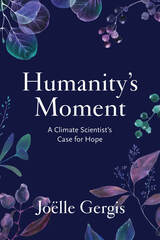 Humanity's Moment: A Climate Scientist's Case for Hope
Joëlle Gergis
Island Press, 2023 When climate scientist Joëlle Gergis set to work on the United Nations’ Intergovernmental Panel on Climate Change (IPCC) Sixth Assessment Report, the research she encountered kept her up at night. Through countless hours spent with the world’s top scientists to piece together the latest global assessment of climate change, she realized that the impacts were occurring faster than anyone had predicted.
In Humanity’s Moment, Joëlle takes us through the science in the IPCC report with unflinching honesty, explaining what it means for our future, while sharing her personal reflections on bearing witness to the heartbreak of the climate emergency unfolding in real time. But this is not a lament for a lost world. It is an inspiring reminder that human history is an endless tug-of-war for social justice. We are each a part of an eternal evolutionary force that can transform our world.
Joëlle shows us that the solutions we need to live sustainably already exist—we just need the social movement and political will to create a better world. Humanity’s Moment is a climate scientist’s guide to rekindling hope, and a call to action to restore our relationship with ourselves, each other, and our planet.
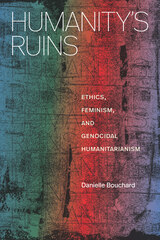 Humanity's Ruins: Ethics, Feminism, and Genocidal Humanitarianism
Danielle Bouchard
Duke University Press, 2025 In Humanity’s Ruins, Danielle Bouchard examines how genocidal aspirations animate contemporary Western humanitarian projects and discourses. Drawing on anticolonial and antiracist feminist critique, Bouchard argues that humanitarianism has functioned in the Cold War and post-Cold War eras to perpetuate longer-lived, fundamentally racist conceptualizations of humanity’s defining characteristics. She examines the aesthetics of humanitarian texts, which are filled with figures of the wounded, dead, and disappeared—the atomic bomb victim whose only remainder is a shadow imprinted on concrete, the grievously injured Muslim woman, the vanished members of Amazonian “uncontacted” tribes, the dying African—to elucidate how the appearance of these figures reaffirms a genocidal view of humanity that aligns with the continuation of Western imperial warfare. Humanitarian discourses conceive of humanity as a community which, by definition, is under existential threat from some humans who are explicitly or implicitly understood as needing to be eliminated. Bouchard invokes “humanity’s ruins” to expose the genocidal fantasy of a human world in which such threat has been eliminated in the interest of supposedly ensuring humanity’s survival.
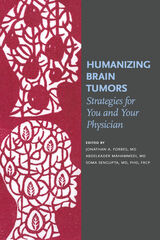 Humanizing Brain Tumors: Strategies for You and Your Physician
Edited by Jonathan A. Forbes, Abdelkader Mahammedi, and Soma Sengupta
University of Minnesota Press, 2022 Three practicing doctors present the stories of nine individuals diagnosed with brain tumors.
Humanizing Brain Tumors details the lived experiences of patients and their loved ones, from the presentation of symptoms to diagnosis and treatment. These nine test cases and the accompanying compendium offer insight and guidance to anyone living with, caring for, or treating those with brain tumors. Written with a humanistic, yet realistic touch, the authors have created a resource that reminds readers of the important partnership between doctors, patients, and caregivers.
This collection delves into our modern understanding of brain tumors, using clinical presentation to illustrate the patient experience and summarize methods of treatment. Imagery, including both MRI scans and medical illustrations, facilitates a vivid description of neuroanatomy. Providing a concise description of modern forms of treatment for patients affected with brain tumors, this book presents a patient-centric perspective.
Humanizing Brain Tumors will appeal to the hundreds of thousands of patients and their loved ones who are affected by brain tumors every year.
 Humanophone
Janet Holmes
University of Notre Dame Press, 2001 The poetry in Humanophone,the third volume from award-winning poet Janet Holmes, celebrates composers and creators such as Harry Partch, Raymond Scott, Leon Theremin, and George Ives, who had to invent new instruments to capture the music heard in their "mind's ear." Taking its title from a George Ives invention--an instrument made from a group of humans, each of whom sings a single note, arrayed like a xylophone--Humanophoneappears on its surface to be about music. But its real subject is the artist's creative dilemma--how to deliver a new idea, whether it be a song or a poem, through existing media.
Holmes works language into a variety of forms both familiar--syllabics, couplets, villanelles, sonnets--and engagingly new. With everything from kumquats to abandoned wedding pictures, Clara Bow to Bill Robinson, Keats's belle dame to Dante's Francesca, feng shui,to a recipe for octopus, Humanophonecelebrates how the body shapes art from the world it is given.
In Humanophone,Holmes not only chronicles events such as Harry Partch's transformation of glass chemical containers from the Berkeley Radiation Lab into the melodious and beautiful Cloud-Chamber Bowls, but also traces a playful path through the familiar, as a trombone's upwards glissando becomes "a backwards pratfall/in brass." Engaging a broad array of subjects, Holmes's poetry is as delightful as it is thoughtful, as simple as it is complex.
JANET HOLMES is the author of three volumes of poetry. Her second volume, The Green Tuxedo,was awarded the Ernest Sandeen Prize in Poetry and is also published by the University of Notre Dame Press. Holmes has won numerous awards for her poems, which have appeared in a wide range of publications, including two editions of The Best American Poetryand journals such as American Poetry Review, The Georgia Review,and Notre Dame Review.She teaches in the MFA program at Boise State University.
"I was immediately taken by the true originality of conception, the inventive audacity, the subtlety of phrasing and vocabulary of Janet Holmes's poems. Music in these pieces becomes a metaphor, a true metaphor that cannot be paraphrased but sends out its illuminating beams over the singularity of our lives, our life. The delicacy and subtlety of her work have grown with each reading." --W. S. Merwin
"Witty, learned, bedazzling, bold: the poems of Janet Holmes's new book veer before our eyes from clarity and good humor into aesthetic mystery and a darker irony. This poet is beautifully unpredictable as to subject and mode, the variety of her purposes winningly enlivening the forms they invent. For her, music is more than metaphor. It is the characteristic shape of her breath, a way of beholding. As Humanophonetestifies, the idea of a human-voice instrument is enacted, again and again, in the notation and perfect pitch of these poems." --James Applewhite
"Humanophoneis a meditation on sound: shaped by the body, received within the human ear, and woven from the brain into musical compositions. The musical subjects of Humanophoneare not only well-researched and explored in varied forms and tones, but braided into a brilliant design. With Humanophone, Janet Holmes enters and extends the dialogue on poetics for the twenty-first century."--Sandra Alcosser
"Holmes is a wonderful poet--one of the best of her generation now at work in America." --John Matthias
OTHER BOOKS BY JANET HOLMES: The Green Tuxedo 0-268-01036-6 paper
----------
"Holmes makes moving and amusing poems . . . a most memorable concert." -Booklist
"...Holmes borrows her project from history, mining lives to find a single tone to convey the creative experience, its daily trials, its processes, its awe. Holmes masters the broad metaphor, sampling stories ranging from a man beating an octopus against a counter, to the reinvention of sounds by Raymond Scott.... The result is a book unified by a central conceit: how to catch life, with its beautiful, funny, and regrettable sounds, and replicate the experience for readers and listeners. Perhaps what is most intriguing about this collection is the sheer eclectic nature of its subjects and the varied mind that connects them. Sirenic.... Holmes parallels the protagonist of her poems, leaving readers with the certainty that this compulsion is toward something brave." -ForeWord Magazine, November 2001
Human-Robot Collaboration: Unlocking the potential for industrial applications
Zoe Doulgeri
The Institution of Engineering and Technology, 2023 Human-robot collaboration (HRC) is a widely studied research topic that investigates how humans and robots can work together and achieve a common goal. Over the past few years, HRC has created exciting new applications for robots that can revolutionize manufacturing and introduce them to entirely different domains such as healthcare and agriculture. It is an interdisciplinary research area comprising robotics, artificial intelligence, design and cognitive sciences.
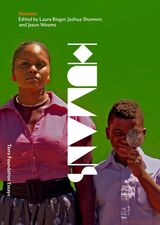 Humans
Edited by Laura Bieger, Joshua Shannon, and Jason Weems
Terra Foundation for American Art, 2021 Surveys the representations and constructions of the human being in American art.
Humans are organisms, but “the human being” is a term referring to a complicated, self-contradictory, and historically evolving set of concepts and practices. Humans explores competing versions, constructs, and ideas of the human being that have figured prominently in the arts of the United States. These essays consider a range of artworks from the colonial period to the present, examining how they have reflected, shaped, and modeled ideas of the human in American culture and politics. The book addresses to what extent artworks have conferred more humanity on some human beings than others, how art has shaped ideas about the relationships between humans and other beings and things, and in what ways different artistic constructions of the human being evolved, clashed, and intermingled over the course of American history. Humans both tells the history of a concept foundational to US civilization and proposes new means for its urgently needed rethinking.
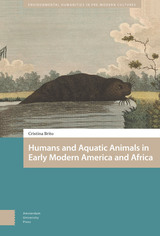 Humans and Aquatic Animals in Early Modern America and Africa
Cristina Brito
Amsterdam University Press, 2023 This book deals with peoples’ practices, perceptions, emotions and feelings towards aquatic animals, their ecosystems and nature on the early modern Atlantic coasts by addressing exploitation, use, fear, empathy, otherness, and indifference in the relationships established with aquatic environments and resources by Indigenous Peoples and Europeans. It focuses on large aquatic fauna, especially manatees (but also sharks, sea turtles, seals, and others) as they were hunted, consumed, venerated, conceptualised, and recorded by different societies across the early colonial Americas and West Africa. Through a cross-cultural approach drawing on concepts and analytical methods from marine environmental history, the blue humanities and animal studies, this book addresses more-than-human systems where ecologies, geographies, cosmogonies, and cultures are an entangled web of interdependencies.
HUMANS AND OTHER ANIMALS
Edited by Arien Mack with a foreword by Marc Bekoff
Ohio State University Press, 1999 Throughout history and in all places, animals have been an essential part of human culture. They have been hunted and domesticated, studied and mythologized, feared and loved. Our complicated relationships with other animals have repeatedly found expression in art, literature, religion, and science.
In 1995 the New School for Social Research sponsored a landmark conference to explore human/animal interactions. Published as a special issue of the journal Social Research (under the title In the Company of Animals), this collection is now available for the first time in a book edition.
 Humans and Other Animals: Cross-Cultural Perspectives on Human-Animal Interactions
Samantha Hurn
Pluto Press, 2012 Humans and Other Animals is about the myriad and evolving ways in which humans and animals interact, the divergent cultural constructions of humanity and animality found around the world, and individual experiences of other animals.
Samantha Hurn explores the work of anthropologists and scholars from related disciplines concerned with the growing field of anthrozoology. Case studies from a wide range of cultural contexts are discussed, and readers are invited to engage with a diverse range of human-animal interactions including blood sports (such as hunting, fishing and bull fighting), pet keeping and ‘petishism’, eco-tourism and wildlife conservation, working animals and animals as food. The idea of animal exploitation raised by the animal rights movements is considered, as well as the anthropological implications of changing attitudes towards animal personhood, and the rise of a posthumanist philosophy in the social sciences more generally.
Key debates surrounding these issues are raised and assessed and, in the process, readers are encouraged to consider their own attitudes towards other animals and, by extension, what it means to be human.
 Humans in Shackles: An Atlantic History of Slavery
Ana Lucia Araujo
University of Chicago Press, 2024 A sweeping narrative history of the Atlantic slave trade and slavery in the Americas.
During the era of the Atlantic slave trade, more than twelve million enslaved Africans were forcibly transported to the Americas in cramped, inhumane conditions. Many of them died on the way, and those who survived had to endure further suffering in the violent conditions that met them onshore. Covering more than three hundred years, Humans in Shackles grapples with this history by foregrounding the lived experience of enslaved people in tracing the long, complex history of slavery in the Americas.
Based on twenty years of research, this book not only serves as a comprehensive history; it also expands that history by providing a truly transnational account that emphasizes the central role of Brazil in the Atlantic slave trade. Additionally, it is deeply informed by African history and shows how African practices and traditions survived and persisted in the Americas among communities of enslaved people. Drawing on primary sources including travel accounts, pamphlets, newspaper articles, slave narratives, and visual sources such as artworks and artifacts, Araujo illuminates the social, cultural, and religious lives of enslaved people working in plantations and urban areas, building families and cultivating affective ties, congregating and re-creating their cultures, and organizing rebellions.
Humans in Shackles puts the lived experiences of enslaved peoples at the center of the story and investigates the heavy impact these atrocities have had on the current wealth disparity of the Americas and rampant anti-Black racism.
Humanscape: Environments for People
Stephen Kaplan & Rachel Kaplan
Michigan Publishing, 2017 In dealing with environmental issues we are repeatedly confronted by the paradox that the biggest obstacle to a more humane world for people is -- people. Again and again designers, planners, citizen groups, policy makers, and managers set out to solve "real" problems and end up mired in "people" problems. This book attempts to apply the skills and insights of the behavioral sciences to this dilemma. The approach is untraditional, not only in its theoretical framework, but also in its focus. The emphasis is not on the environment itself, but on how people know and experience it, for we believe that the first priority is not specific answers to specific problems, but a greater understanding of the creature we are dealing with, a larger view of what people are like.
The Humble Approach Revised Edition: Scientists Discover God
John Marks Templeton
Templeton Press, 1998 For generations the discoveries of science tended to challenge the very existence of God. Templeton makes a striking argument for just the opposite point of view. He goes to the writings of many of the world's leading scientific thinkers—as diverse in background as Albert Einstein and Teilhard de Chardin—and discovers them in awe of the universe, perceiving the hand of Divine mystery at work. The Humble Approach teaches that man can discover and comprehend only a few of the infinite aspects of God's nature, never enough to form a comprehensive theology. The humble approach may be a science still in its infancy, but it seeks to develop a way of knowing God appropriate to His greatness and our littleness.
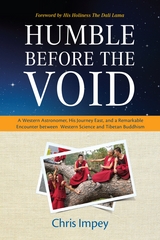 Humble before the Void: A Western Astronomer, his Journey East, and a Remarkable Encounter Between Western Science and Tibetan Buddhism
Chris Impey
Templeton Press, 2014 “This book will provide readers with a greater awareness of the spirit of curiosity and inquiry that lies at the heart of the Buddhist tradition, as well as the fruitfulness of maintaining active communication between the Buddhist and scientific communities.” —from the Foreword by His Holiness the Dalai Lama In Humble before the Void, Impey, a noted astronomer, educator, and author gives us a thoroughly absorbing and engaging account of his journey to Northern India to teach in the first-ever “Science for Monks” leadership program. The program was initiated by His Holiness the Dalai Lama to introduce science into the Tibetan Buddhist monastic tradition. In a vivid and compelling narrative, Impey introduces us to a group of exiled Tibetan monks whose charm, tenacity and unbridled enthusiasm for learning is infectious. Impey marvels not only at their enthusiasm, but at their tireless diligence that allows the monks to painstakingly build intricate sand mandalas—that can be swept away in an instant. He observes them as they meticulously count galaxies and notes how their enthusiasm and diligence stands in contrast to many American students who are frequently turned off by science’s inability to deliver easy, immediate payoffs. Because the Buddhist monks have had a limited science education, Impey must devise creative pedagogy. His new students immediately take to his inspired teaching methods, whether it’s the use of balloons to demonstrate the Hubble expansion or donning an Einstein mask to explain the theory of relativity. Humble before the Void also recounts Impey’s experiences outside the classroom, from the monks’ eagerness to engage in pick-up basketball games and stream episodes of hip American sitcoms to the effects on his relationship with the teenage son who makes the trip with him. Moments of profound serenity and beauty in the Himalayas are contrasted with the sorrow of learning that other monks have set themselves on fire to protest the Chinese oppression in Tibet. At the end of the three week program, both the monks and Impey have gained a valuable education. While the monks have a greater understanding and appreciation of science, Impey has acquired greater self- knowledge and a deeper understanding of the nature of learning and teaching in the East and West. This understanding leads to a renewed enthusiasm for making his topic come alive for others.
The Humble Story of Don Quixote: Reflections on the Birth of the Modern Novel
Cesáreo Bandera
Catholic University of America Press, 2006 In this original study by Cesáreo Bandera, the intimate connection between the simplicity and humility of the story and its greatness is explored. Other comparisons are also made: the story of the picaresque rogue, on the one hand, and the psychological insights of the pastoral novel, on the other.
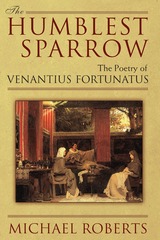 The Humblest Sparrow: The Poetry of Venantius Fortunatus
Michael Roberts
University of Michigan Press, 2010 In The Humblest Sparrow, Michael Roberts illuminates the poetry of the sixth-century bishop and poet Venantius Fortunatus. Often regarded as an important transitional figure, Fortunatus wrote poetry that is seen to bridge the late classical and earlier medieval periods. Written in Latin, his poems combined the influences of classical Latin poets with a medieval tone, giving him a special place in literary history. Yet while interest has been growing in the early Merovingian period, and while the writing of Fortunatus' patron Gregory of Tours has been well studied, Fortunatus himself has often been neglected. This neglect is remedied by this in-depth study, which will appeal to scholars of late antique, early Christian, and medieval Latin poetry. Roberts divides Fortunatus' poetry into three main groups: poetry of praise, hagiographical poetry, and personal poetry. In addition to providing a general survey, Roberts discusses in detail many individual poems and proposes a number of theses on the nature, function, relation to social and linguistic context, and survival of Fortunatus' poetry, as well as the image of the poet created by his work. Jacket illustration: L. Alma Tadema, Venantius Fortunatus Reading his Poems to Radegonda VI AD 555. (Courtesy of Dordrecht, Dordrechts Museum.)
Humbug: The Art of P. T. Barnum
Neil Harris
University of Chicago Press, 1981 This carefully researched study of America's greatest showman, huckster, and impresario is both an inclusive analysis of the historical and cultural forces that were the conditions of P. T. Barnum's success, and, as befits its subject, a richly entertaining presentation of the outrageous man and his exploits.
Hume's Ethical Writings: Selections from David Hume
Alasdair MacIntyre
University of Notre Dame Press, 1979 Writing in an age that exalted reason, the Scottish-born skeptic David Hume was the first modern philosopher to emphasize the role of psychology, or “passion,” in the formulation of moral judgments and ethical systems. Included in this edition of his writings is the entire text of An Enquiry Concerning the Principles of Morals and selections from other works such as A Treatise on Human Nature and Dialogues Concerning Natural Religion. Alasdair MacIntyre clarifies the relationship of Hume’s intellect to his Calvinist background and cogently summarizes his importance to the development of moral philosophy.
 Hume's Inexplicable Mystery: His Views on Religion
Keith E. Yandell
Temple University Press, 1993 The eighteenth-century Scottish empiricist David Hume has been regarded as a notorious enemy of religion. Still, his discussion of religion is systematic, sophisticated, and sustained. Focusing mainly on two of Hume’s works, the relatively neglected Natural History of Religion and the more widely read Dialogues Concerning Natural Religion, Keith Yandell analyzes Hume’s treatment of a subject that he described as "a riddle, an enigma, an inexplicable mystery." In so doing, he explores the relationships between Hume’s philosophy of religion and his general philosophy. Hume’s "evidentialism," applied to religion, can be summed up by saying that it is unreasonable to accept a religious belief unless one has evidence for it. Since it is also Hume’s view that there is no evidence for any religious belief, he concludes that no one is ever reasonable in accepting a religious belief. Yandell examines the explanations that Hume gave for such acceptance in Natural History of Religion. Addressing the Dialogues Concerning Natural Religion, he compares Hume’s views to those of such authors as Herbert of Cherbury and Bishop Joseph Butler, traces changes in Hume’s theory of meaning, and discusses the ontological and cosmological arguments and Hume’s treatment of the problem of evil. Yandell then considers other lesser known writings by Hume that are relevant to his philosophy of religion.
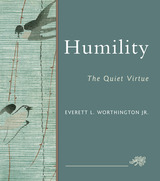 Humility: The Quiet Virtue
Everett L. Worthington
Templeton Press, 2007 Humility is a virtue that can be difficult to describe because of its paradoxical nature: claiming authority about humility and claiming that one is humble both suggest a lack of humility. In Humility, Everett L.Worthington Jr. seeks a way around this paradox by looking to people who are considered by others to be humble. He suggests people as examples: Jesus, Siddhartha, Gandhi, Mother Teresa, and Martin Luther King Jr. He looks, too, at people whom he admires. He examines the characteristics of humility they share, and, in doing so, formulates a working understanding of humility. Science has made few attempts to measure humility, Worthington points out, but those few studies do give a different, but complementary, perspective on humility than the wisdom of the ages. Humility may not be a skill we can learn, but people can be inspired to be humble. "Great people—and ordinary people acting nobly—can inspire us," Worthington writes. "When we catch the spirit, we can transfer that spirit from ourselves to others." Quotations interspersed throughout the book reinforce the message that the unassuming virtue of humility transforms lives.
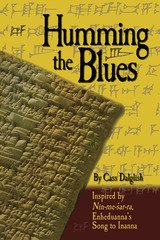 Humming the Blues
Cass Dalglish
Calyx, 2008 The first signed literature in the world is on cuneiform tablets written in 2350 BCE in Sumeria, and it is by a woman. Dr. Cass Dalglish translated the cuneiform of Enheduanna. She was a powerful Sumerian prince in 2350 BCE and her work, Nin-me-sar-ra, begged the god Inanna (who was the first to enter the underworld and return from the dead) for help overcoming an usurper.
Adopting a jazz aesthetic, Dalglish improvises on her translations; re-examining the cuneiform through feminist lenses. Enheduanna is not just any writer, she is the first identifiable poet to sign her writing. Lyrically translated from the original cuneiform by Cass Dalglish, the relevance of Enheduanna’s Song to Inanna echoes across millennia as a testament to the timeless power of women’s literature. Giving fresh interpretations to the originals, these poems form rhythmic riffs—like jazz musical improvisations—that carry the reader back to the lands of ancient Iraq during the time when gods were women.
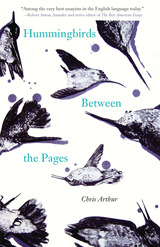 Hummingbirds Between the Pages
Chris Arthur
Ohio State University Press, 2018 In his latest collection, Hummingbirds Between the Pages, prizewinning Irish essayist Chris Arthur muses on subjects ranging from Charles Darwin’s killing of a South American fox to the carnal music sounding in a statue of the Buddha, from how Egyptian seashells contain echoes of World War II to a child’s first encounter with death. Whether he’s looking at skipping stones, old photographs, butterflies, the resonance of a remembered phrase, or being questioned at an army checkpoint during Northern Ireland’s Troubles, what gives these unorthodox meditations their appeal is the way in which—with striking lyricism—they tap into unexpected seams of meaning and mystery in our everyday terrain. Arthur explores the moments that have left him spellbound, tying his own experiences as a young boy from Ulster who saw his first hummingbirds in London to the wonder felt by early settlers to America who sent pressed hummingbirds across the ocean to the communities they had left behind. Through rumination on the seemingly quotidian, Arthur’s lyrical prose exposes new layers of possibility just beneath the surface of the expected.
Humor and Comedy in Puppetry: Celebration in Popular Culture
Smith
University of Wisconsin Press, 1987 This volume is about puppetry, an expression of popular and folk culture which is extremely widespread around the world and yet has attracted relatively little scholarly attention. Puppetry, which is intended for audiences of adults as well as children, is a form of communication and entertainment and an esthetic and artistic creation. Of the many aspects of puppetry worthy of scholarly study, this book's focus is on a central and dominant feature--humor and comedy.
 Humor Me: An Anthology of Humor by Writers of Color
John McNally
University of Iowa Press, 2002 The first anthology of its kind, Humor Me is a celebration of humor by authors from diverse cultures. Sixteen of today's most exciting writers—among them Sherman Alexie, Gish Jen, Charles Johnson, and Lucille Clifton—are represented in fiction, poetry, nonfiction, drama, cartoons, and graphic narratives. Whether using satire, parody, or farce, these writers explore the universal themes of love, family, sex, and race, and they do so in their own edgy, subversive, and sometimes skewed ways. In Sherman Alexie's short story “Assimilation,” a Coeur d’Alene woman wants to cheat on her white husband with an Indian man, any Indian man—or, as Alexie puts it, “an indigenous stranger.” In Sandra Tsing Loh's essay “Daddy Dearest,” the author cringes when an old friend asks if her father still wears his underwear backward and does the Chinese snake dance on Pacific Coast Highway. Nothing in Humor Me is taboo, as Erika Lopez proves in her illustrated tale of one environmentally conscious woman's attempt to subvert the tampon industry. Jim Northrup even takes on that American institution Jeopardy! in his satire “Shinnob Jep,” describing a game that quizzes its contestants on Native American trivia, including the categories “Trick or Treaties” and “Rez Cars.” From low-brow to high-brow, from belly laughs to the cerebral, Humor Me places internationally renowned writers such as Charles Johnson and Gish Jen alongside rising stars Paisley Rekdal and Michele Serros and a host of newcomers, including Aimee Nezhukumatathil and Daniel Chacón.
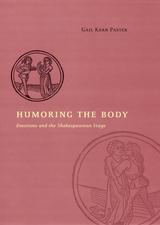 Humoring the Body: Emotions and the Shakespearean Stage
Gail Kern Paster
University of Chicago Press, 2004 Though modern readers no longer believe in the four humors of Galenic naturalism—blood, choler, melancholy, and phlegm—early modern thought found in these bodily fluids key to explaining human emotions and behavior. In Humoring the Body, Gail Kern Paster proposes a new way to read the emotions of the early modern stage so that contemporary readers may recover some of the historical particularity in early modern expressions of emotional self-experience.
Using notions drawn from humoral medical theory to untangle passages from important moral treatises, medical texts, natural histories, and major plays of Shakespeare and his contemporaries, Paster identifies a historical phenomenology in the language of affect by reconciling the significance of the four humors as the language of embodied emotion. She urges modern readers to resist the influence of post-Cartesian abstraction and the disembodiment of human psychology lest they miss the body-mind connection that still existed for Shakespeare and his contemporaries and constrained them to think differently about how their emotions were embodied in a premodern world.
Humour and Irony in Dutch Post-war Fiction Film
Peter Verstraten
Amsterdam University Press, 2016 Dutch cinema, when discussed, is typically treated only in terms of pre-war films or documentaries, leaving post-war fictional film largely understudied. At the same time, a "Hollandse school," a term first coined in the 1980s, has developed through deadpan, ironic films like those of director and actor Alex van Warmerdam. Using seminal theories on humour and comedy, this book explores a number of Dutch films using the notion of categories, such as low-class comedies, neurotic romances, deliberate camp, and grotesque satire. With its original approach, this study makes surprising connections between Dutch films from various decades.
 The Humours of Parliament: Harry Furniss's View of Late-Victorian Political Culture
Edited and with an Introduction by Gareth Cordery and Joseph S. Meisel
Ohio State University Press, 2014 Harry Furniss (1854–1925), a leading contributor to Punch and other important illustrated magazines, was arguably the most significant political caricaturist and illustrator of the late Victorian and Edwardian eras. He was widely celebrated in his time, and his cartoons helped to define the political world in the public mind. The Humours of Parliament was Furniss’s hugely successful illustrated lecture that he staged throughout the U.K., North America, and Australia during the 1890s. Entertaining his audiences with anecdotes, mimicry, and jokes—along with the spectacle of more than 100 magic lantern slides—Furniss gave his audiences an insider’s view of the mysterious workings of Parliament and the leading political personalities of the day, such as Gladstone, Balfour, and Chamberlain.
Reproducing some 150 images drawn from Furniss’s extensive graphic work, The Humours of Parliament: Harry Furniss’s View of Late-Victorian Political Culture, edited and with an introduction by Gareth Cordery and Joseph S. Meisel, presents Furniss’s unpublished lecture text for the first time. The extensive introduction places the show in its biographical, political, and performative contexts. Cordery and Meisel’s volume therefore both documents a pivotal moment in British political and social history and provides a rare case study of an important yet little studied nineteenth-century performance genre: the illustrated platform lecture.
Humphry Repton: The Red Books for Bradsbury and Glemham Hall
Stephen Daniels
Harvard University Press, 1994 This publication reproduces all the text pages and illustrations from the two Red Books in the collection of the Garden Library at Dumbarton Oaks; that for Brandsbury, produced in 1789 as the first Red Book, and the one for Glemham Hall, produced in 1791.
A Hundred Acres of America: The Geography of Jewish American Literary History
Hoberman, Michael
Rutgers University Press, 2019 2019 Choice Outstanding Academic Title
Jewish writers have long had a sense of place in the United States, and interpretations of American geography have appeared in Jewish American literature from the colonial era forward. But troublingly, scholarship on Jewish American literary history often limits itself to an immigrant model, situating the Jewish American literary canon firmly and inescapably among the immigrant authors and early environments of the early twentieth century. In A Hundred Acres of America, Michael Hoberman combines literary history and geography to restore Jewish American writers to their roles as critical members of the American literary landscape from the 1850s to the present, and to argue that Jewish history, American literary history, and the inhabitation of American geography are, and always have been, contiguous entities.
A Hundred Himalayas: Essays on Life and Literature
Sydney Lea
University of Michigan Press, 2012 In A Hundred Himalayas, Sydney Lea has collected a group of essays written over 30 years, representing what he refers to as the persistence of preoccupations and the absence of theory---a group of speculations, each one a single Himalaya, together a great elevation achieved in small increments. His musings on his own "favored genius," Robert Frost, his own approach to literary criticism, imagination, the American nature essay, rural life, the process of writing a poem, and fitting writing into everyday life all combine to create a picture of the things that interest Lea. "If there is grandeur at all in this volume," he says, "then, it must come in small increments." All of his small increments of gentle and insightful writing combine to create a collection that is, indeed, grand.
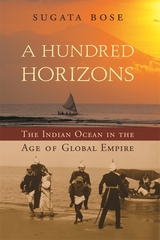 A Hundred Horizons: The Indian Ocean in the Age of Global Empire
Sugata Bose
Harvard University Press, 2006 On December 26, 2004, giant tsunami waves destroyed communities around the Indian Ocean, from Indonesia to Kenya. Beyond the horrific death toll, this wall of water brought a telling reminder of the interconnectedness of the many countries on the ocean rim, and the insignificance of national boundaries. A Hundred Horizons takes us to these shores, in a brilliant reinterpretation of how culture developed and history was made at the height of the British raj.
Between 1850 and 1950, the Indian Ocean teemed with people, commodities, and ideas: pilgrims and armies, commerce and labor, the politics of Mahatma Gandhi and the poetry of Rabindranath Tagore were all linked in surprising ways. Sugata Bose finds in these intricate social and economic webs evidence of the interdependence of the peoples of the lands beyond the horizon, from the Middle East to East Africa to Southeast Asia.
In following this narrative, we discover that our usual ways of looking at history--through the lens of nationalism or globalization--are not adequate. The national ideal did not simply give way to inevitable globalization in the late twentieth century, as is often supposed; Bose reveals instead the vital importance of an intermediate historical space, where interregional geographic entities like the Indian Ocean rim foster nationalist identities and goals yet simultaneously facilitate interaction among communities.
A Hundred Horizons merges statistics and myth, history and poetry, in a remarkable reconstruction of how a region's culture, economy, politics, and imagination are woven together in time and place.
 A Hundred Years of Republican Turkey: A History in a Hundred Fragments
Alp Yenen
Leiden University Press, 2023 On October 29, 2023, the Republic of Turkey will celebrate its centennial. The foundation of the Turkish Republic in 1923 marks the catastrophic, yet triumphant, foundation of a new nation-state as the successor of the defeated and partitioned Ottoman Empire. Until today, Turkey remains to be the center of attention due to its continued state of crisis and its position between Europe and the Middle East. In the 100 years of its history, Turkey went through multiple political and social transformations. The Kemalist origins in the Interwar years were marked by an authoritarian nation-state building in a post-imperial society with cultural reforms and modernization projects which radically constructed a new national identity and a secular ethos. The tumultuous decades during the Cold War opened a more democratic and culturally diverse field, but rapid socio-economic developments and ideological radicalization contributed to political instability, which in return legitimized Turkey’s endemic military tutelage over civilian-democratic affairs. While post-Cold War Turkey suffered from corruption and intensified identity politics, the brief moment of political stability and opening as well as the economic growth reached in the 2000s proved to be a false promise under the Justice and Development Party. Contemporary Turkey under the President Recep Tayyip Erdo.an is suffering from multiple problems resulting from the authoritarian policies of the government, Muslim-conservative vulgar populism, and an aggressive foreign policy that feeds into Muslim-Turkish nationalism at home. This volume is the first of its kind in offering a history of hundred years of Republican history through expert introductions to 100 sources on various themes of politics, economy, society, culture, gender, and arts. In doing so, this project will not only tell a truly multi-facetted history under the guidance of prominent and promising scholars of Turkish Studies, but will also allow its readers to hear voices and see images of a fascinating Republican past.
The Hundreds
Lauren Berlant and Kathleen Stewart
Duke University Press, 2019 In The Hundreds Lauren Berlant and Kathleen Stewart speculate on writing, affect, politics, and attention to processes of world-making. The experiment of the one hundred word constraint—each piece is one hundred or multiples of one hundred words long—amplifies the resonance of things that are happening in atmospheres, rhythms of encounter, and scenes that shift the social and conceptual ground. What's an encounter with anything once it's seen as an incitement to composition? What's a concept or a theory if they're no longer seen as a truth effect, but a training in absorption, attention, and framing? The Hundreds includes four indexes in which Andrew Causey, Susan Lepselter, Fred Moten, and Stephen Muecke each respond with their own compositional, conceptual, and formal staging of the worlds of the book.
Hung Jury: The Diary of a Menendez Juror
Hazel Thornton
Temple University Press, 2017
More than two decades after serving as a juror on the high-profile seven-month murder trial People v. Erik Galen Menendez, Hazel Thornton updates her book Hung Jury with a new preface and a postscript essay of observations about the Menendez brothers’ second trial. Includes psychological commentary by Lawrence S. Wrightsman and Amy J. Posey, and legal commentary by Alan Scheflin.
 Hungarian Authors: A Bibliographical Handbook
Albert Tezla
Harvard University Press, 1970 This exceptional bibliography, a pioneer work in its field, surveys Hungarian literature from its beginnings to 1965. A companion to the author's An Introductory Bibliography to the Study of Hungarian Literature, this volume contains over 4500 numbered entries which report on the first and later editions of the works of 162 authors. Mr. Tezla has included the major figures from each literary period and has based his selection of authors on the importance of their original writings to the development of this national literature. Significant authors who established substantial careers in Hungary and continued to write after their emigration are also represented in this comprehensive volume, as are a number of figures of secondary literary import.
Mr. Tezla begins his coverage of each author with a brief biographical account offering pertinent data on family background, education, and literary activities. The sketch provides as well observations on the writings of the author and his place in Hungarian literature and a record of the languages into which his works have been translated. Further material on the author is divided into annotated sections noting bibliographical, biographical, and critical studies.
As a means of helping the reader obtain titles through inter-library loan or through photographic processes, Mr. Tezla also includes location symbols for numbered items known to be available in selected libraries in the United States and Europe. Five appendixes, a glossary, and indexes provide additional bibliographic tools for both the beginning student and the advanced scholar researching Hungarian literature. The work is invaluable also as a buying guide for libraries seeking to develop a Hungarian collection.
 Hungarian Culture and Politics in the Habsburg Monarchy 1711-1848
Gábor Vermes
Central European University Press, 2014 This book describes and analyzes the critical period of 1711-1848 within Hungary from novel points of view, including close analyses of the proceedings of Hungarian diets. Contrary to conventional interpretations, the study, stressing the strong continuity of traditionalism in Hungarian thought, society, and politics, argues that Hungarian liberalism did not begin to flower in any substantial way until the 1830s and 1840s. Hungarian Culture and Politics in the Habsburg Monarchy also traces and evaluates the complex relationship between Austria and Hungary over this span of time. Past interpretations have, with only a few exceptions, tilted heavily towards the Austrian role within the Monarchy, both because its center was in Vienna and because few non-Hungarian scholars can read Hungarian. This analysis redresses this balance through the use of both Austrian and Hungarian sources, demonstrating the deep cultural differences between the two halves of the Monarchy, which were nevertheless closely linked by economic and administrative ties and by a mutual recognition that co-existence was preferable to any major rupture.
Hungarian Film, 1929-1947: National Identity, Anti-Semitism and Popular Cinema
Gábor Gergely
Amsterdam University Press, 2017 What does it mean for someone or something to be Hungarian? People in Hungary grappled with this far-reaching question in the wake of the losses and transformation brought by World War I. Because the period also saw the rise of cinema, audiences, filmmakers, critics, and officials often looked at films with an eye to that question, too. Did the Hungary seen on screen represent the Hungary they knew from everyday life? And-crucially-did the major role played by Jewish Hungarians in the film industry make the sector and its creations somehow Jewish rather than Hungarian? Jews, it was soon decided, could not really be Hungarian, and acts of Parliament soon barred them from taking major roles in cinema production. This book tells the troubled story of that period in Hungarian cinematic history, taking it up through World War II.
 The Hungarian Patient: Social Opposition to an Illiberal Democracy
Jon Van Til
Central European University Press, 2015 This book presents compelling essays by leading Hungarian and foreign authors on the variety of social movements and parties that seek influence and power in a Hungary mired in deep and manifold crisis. The main question the volume tries to answer is: what can we expect after the fall of the semi-authoritarian Orbán regime in Hungary. Who will be the new players? What are their backgrounds? What are their political and social ideals, intentions and methods? The studies in the first section of the volume provide the reader with the reasons of the emergence of these new movements: a deep analysis of the historical, political and cultural background of the current situation. The second part contains essays and case studies which challenge the movements and parties involved to look beyond their current ineffectiveness, and to find ways of meeting the challenges that would allow them to exercise responsible and effective leadership in their time and place. This collection would be the first of the kind both in the field of movement theory/history and democracy studies because it reflects on very recent developments not researched in the international scholarly literature. One would not be able to understand contemporary Hungarian society without reading it before the 2014 elections.
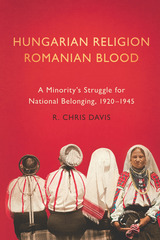 Hungarian Religion, Romanian Blood: A Minority's Struggle for National Belonging, 1920–1945
R. Chris Davis
University of Wisconsin Press, 2019 Amid the rising nationalism and racial politics that culminated in World War II, European countries wishing to "purify" their nations often forced unwanted populations to migrate. The targeted minorities had few options, but as R. Chris Davis shows, they sometimes used creative tactics to fight back, redefining their identities to serve their own interests.
Davis's highly illuminating example is the case of the little-known Moldavian Csangos, a Hungarian- and Romanian-speaking community of Roman Catholics in eastern Romania. During World War II, some in the Romanian government wanted to expel them. The Hungarian government saw them as Hungarians and wanted to settle them on lands confiscated from other groups. Resisting deportation, the clergy of the Csangos enlisted Romania's leading racial anthropologist, collected blood samples, and rewrote a millennium of history to claim Romanian origins and national belonging—thus escaping the discrimination and violence that devastated so many of Europe's Jews, Roma, Slavs, and other minorities. In telling their story, Davis offers fresh insight to debates about ethnic allegiances, the roles of science and religion in shaping identity, and minority politics past and present.
 Hungarians and Europe in the Early Middle Ages: An Introduction to Early Hungarian History
András Róna-Tas
Central European University Press, 1999 Lavishly illustrated, the book contains seventy five historical maps and colour plates which visualize the historical background of Hungary and introduces its early history to a broader readership. The early history of Hungarians is embedded into the history of Eurasia and special attention is given to the relationship of the Hungarians with the Khazars and the Bulghar-Turks. The first part deals with methods and sources which can be used for elucidating the ancient history of the Hungarians, relying on research into linguistics, archaeology, anthropology and natural history. The second part traces how the Hungarians came into the Carpathian Basin and answers such questions as: who are the Magyars, from where did they come and how did they conquer the land? It reconstructs and examines their early political and social structure, the economy, and religion, and compares the Hungarian medieval process with the ethnogenetic processes of the Germanic, Slavic and Turkic people.
Hungary and the Habsburgs, 1765-1800: An Experiment in Enlightened Absolutism
Éva H. Balázs
Central European University Press, 1997 One of the most distinguished historians of Central Europe examines a crucial period in the coexistence of the Austrian hereditary provinces and Hungary. In a Europe torn by wars and revolutions during the last third of the eighteenth century, political, economic, and personal factors intertwined to determine the fortunes of the Austrian rulers and the subjects of the Hungarian crown who collaborated with them. Contemporary as well as modern scholars have taken extreme positions on this period. Contributing to the often heated debates, Professor Balázs shows that it was a vigorous and constructive era in the monarchy. Rejecting the commonplaces of the center-periphery approach, she demonstrates that the Habsburg monarchy was a center whose reforms during this period inspired all subsequent reform movements in Central and Eastern Europe.
Hungary in the Cold War, 1945-1956: Between the United States and the Soviet Union
László Borhi
Central European University Press, 2004 Based on new archival evidence, examines Soviet Empire building in Hungary and the American response to it. Hungary was not important enough to resist the Soviets, its democratic opposition failed to win American sympathy, the US simply had no leverage over the Soviets, who sacrificed cooperation with the West for a closed sphere in Eastern Europe. The imposition of a Stalinist regime assured Hungary's unconditional loyalty to Soviet imperial needs. Unlike the GDR, Eastern Europe was never considered a bargaining chip for bettering relations with the West. The book analyzes why, given all its idealism and power, the US failed even in its minimal aims concerning the states of Eastern Europe. Eventually both powers pursued power politics: the Soviets in a naked form, the US subtly, but both with little regard for the fate of Hungarians.
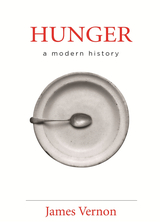 Hunger: A Modern History
James Vernon
Harvard University Press, 2007 Hunger is as old as history itself. Indeed, it appears to be a timeless and inescapable biological condition. And yet perceptions of hunger and of the hungry have changed over time and differed from place to place. Hunger has a history, which can now be told.
At the beginning of the nineteenth century, hunger was viewed as an unavoidable natural phenomenon or as the fault of its lazy and morally flawed victims. By the middle of the twentieth century, a new understanding of hunger had taken root. Across the British Empire and beyond, humanitarian groups, political activists, social reformers, and nutritional scientists established that the hungry were innocent victims of political and economic forces outside their control. Hunger was now seen as a global social problem requiring government intervention in the form of welfare to aid the hungry at home and abroad. James Vernon captures this momentous shift as it occurred in imperial Britain over the past two centuries.
Rigorously researched, Hunger: A Modern History draws together social, cultural, and political history in a novel way, to show us how we came to have a moral, political, and social responsibility toward the hungry. Vernon forcefully reminds us how many perished from hunger in the empire and reveals how their history was intricately connected with the precarious achievements of the welfare state in Britain, as well as with the development of international institutions, such as the United Nations, committed to the conquest of world hunger. All those moved by the plight of the hungry will want to read this compelling book.
 The Hunger Artists: Starving, Writing, and Imprisonment
Maud Ellmann
Harvard University Press, 1993 The phenomenon of voluntary self-starvation—whether by political hunger strikers or lone anorexics—is a puzzle of engrossing power, suggesting a message more resonant and radical than any uttered aloud. In this fascinating phenomenology, Maud Ellmann teases out this message, its genesis, expression, and significance. How, she asks, has the act of eating become the metaphor for compliance, starvation the language of protest? How does the rejection of food become the rejection of intolerable social constraints—or of actual imprisonment? What is achieved at the culmination of such a protest—at the moment of death? Ellmann brilliantly unravels the answers; they lie, she shows, in the inverse relationship between bodily hunger and verbal expression, especially the written word.
Ellmann explores Yeats's idea of hunger as the food of poetry, Dickinson's belief that by abjuring food one could subsist as a god, and the dramatic messages of our century of starvers from Mahatma Ghandi to Jane Fonda. Central to her discussion is a striking comparison between the Irish Hunger Strike of 1981 and the plot of Richardson's Clarissa, in which a young woman starves to death in penance for—or, perhaps, revenge against—her rape. Both cases exhibit an extreme abundance of written words in the face of diminishing flesh.
The Hunger Artists plumbs this vampirical feeding of words on flesh, revealing strange and undeniable affinities between the labor of starvation and the birth of letters, diaries, poems, books. Ellmann works in the spirit of Kafka, who, emaciating his prose, slimmed the weighty nineteenth-century novel into compelling short tales; her prose is crisp, her message clear. She takes the bodily metaphors to their literal conclusion, to the death beds of Clarissa Harlowe and Bobby Sands, and thereby allows those bodies and those metaphors to speak to us anew.
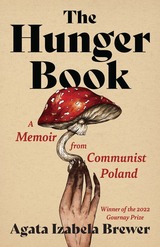 The Hunger Book: A Memoir from Communist Poland
Agata Izabela Brewer
Ohio State University Press, 2023 “A searing memoir about growing up behind the Iron Curtain, motherhood, addiction, and finding sustenance in the natural world.” —Kirkus
In The Hunger Book, Agata Izabela Brewer evokes her Polish childhood under Communism, where the warmth of her grandparents’ love and the scent of mushrooms drying in a tiny apartment are as potent as the deprivations and traumas of life with a terrifyingly unstable, alcoholic single mother. Brewer indelibly renders stories of foraging for food, homemade potato vodka (one of the Eastern Bloc’s more viable currencies), blood sausage, sparrows plucked and fried with linseed oil, and the respite of a country garden plot, all amid Stalinist-era apartment buildings, food shortages, martial law, and nuclear disaster in nearby Ukraine. Brewer reflects on all of this from her immigrant’s vantage point, as she wryly tries to convince her children to enjoy the mushrooms she gathers from a roadside and grieves when they choose to go by Americanized versions of their Polish names. Hunting mushrooms, like her childhood, carried both reward and mortal peril. The Hunger Book, which includes recipes, is an unforgettable meditation on motherhood and addiction, resilience and love.
 Hunger by Design: The Great Ukrainian Famine and Its Soviet Context
Halyna Hryn
Harvard University Press, 2008 The years 2002–2003 marked the seventieth anniversary of the man-made famine inflicted on Ukraine and surrounding areas by Stalin’s Soviet leadership. The Harvard Ukrainian Research Institute commemorated the anniversary with a symposium in October 2003 titled “The Ukrainian Terror-Famine of 1932–1933: Revisiting the Issues and the Scholarship Twenty Years after the HURI Famine Project.” This volume contains some of the papers presented at the symposium (previously published in Harvard Ukrainian Studies volume 25, no. 3/4), including Sergei Maksudov’s large-scale demographic study drawing on available documents of the era; Niccolo Pianciola’s description of the denomadization famine in Kazakhstan from 1931 to 1933; and Gijs Kessler’s study of events in the Urals region from the same period. Also included in this volume are Andrea Graziosi’s remarks on the present state of Famine scholarship and how it addresses the question of genocide, Hennadii Boriak’s assessment of the current state of source material, and an essay by George Grabowicz on the legacy of the Famine in Ukraine today.
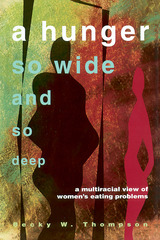 Hunger So Wide And So Deep: A Multiracial View of Women’s Eating Problems
Becky Thompson
University of Minnesota Press, 1996 A new feminist classic--now in paper! Based on in-depth life history interviews with African-American, Latina, and white women-both lesbian and heterosexual-this book chronicles the effects of racism, sexism, acculturation, and sexual abuse on women’s bodies and eating patterns. “A wonderful book: gripping, creative and profoundly humane. In lucid prose Thompson offers an original explanation for women’s eating problems. She argues that many women turn to food-bingeing, dieting, purging, or starving- as a sensible means of coping with physical and psychic ‘atrocities’ deriving from ‘racism, sexism, homophobia, classism, the stress of acculturation, and emotional, physical, and sexual abuse.’” Women’s Review of Books“Surprising and alarming. . . . Thompson urges a second look at our national obsession with weight and proffers theories and practices that could save the lives of women of all colors and sexual orientations.” Lambda Book Report“Thompson breaks new ground and offers hope for the multitudes of women who have swallowed their pain.” Evelyn C. White, Editor, The Black Women's Health Book
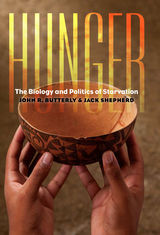 Hunger: The Biology and Politics of Starvation
John R. Butterly and Jack Shepherd
Dartmouth College Press, 2010 The Universal Declaration of Human Rights, adopted by the United Nations in 1948, recognizes the individual’s right “to a standard of living adequate for the health and wellbeing of himself and his family, including food, clothing, housing, and medical care.” More than sixty years later, despite the rapid advancement of science and technology and the proliferation of humanitarian efforts, inadequate nutrition remains a major health and social problem worldwide. Food insecurity—chronic malnutrition, persistent hunger, even starvation—still afflicts more than one in seven of the world’s people. As Butterly and Shepherd show, hunger is not the result of inadequate resources and technologies; rather, its cause is a lack of political will to ensure that all people have access to the food to which they are entitled—food distributed safely, fairly, and equitably. Using a cross-disciplinary approach rooted in both medicine and social science to address this crucial issue, the authors provide in-depth coverage of the biology of human nutrition; malnutrition and associated health-related factors; political theories of inadequate nutrition and famine; historical-political behaviors that have led to famine in the past; and the current political behaviors that cause hunger and malnutrition to remain a major health problem today.
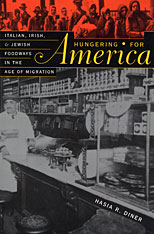 Hungering for America: Italian, Irish, and Jewish Foodways in the Age of Migration
Hasia R. Diner
Harvard University Press, 2003 Millions of immigrants were drawn to American shores, not by the mythic streets paved with gold, but rather by its tables heaped with food. How they experienced the realities of America’s abundant food—its meat and white bread, its butter and cheese, fruits and vegetables, coffee and beer—reflected their earlier deprivations and shaped their ethnic practices in the new land.
Hungering for America tells the stories of three distinctive groups and their unique culinary dramas. Italian immigrants transformed the food of their upper classes and of sacred days into a generic “Italian” food that inspired community pride and cohesion. Irish immigrants, in contrast, loath to mimic the foodways of the Protestant British elite, diminished food as a marker of ethnicity. And East European Jews, who venerated food as the vital center around which family and religious practice gathered, found that dietary restrictions jarred with America’s boundless choices.
These tales, of immigrants in their old worlds and in the new, demonstrate the role of hunger in driving migration and the significance of food in cementing ethnic identity and community. Hasia Diner confirms the well-worn adage, “Tell me what you eat and I will tell you what you are.”
 The Hungry Fly: A Physiological Study of the Behavior Associated with Feeding
Vincent G. Dethier
Harvard University Press, 1976 Hunger is universal among animals. It has been more thoroughly studied in the black blowfly than virtually any other creature except, possibly, man and the white rat. This book is an exploration of what we mean when we say that an animal is "hungry"; it analyzes the ethological concepts of motivation and drive as tested in extensive and elegant experiments on blowflies. The fly, then, is incidental; concepts and experimental techniques for evaluating them are the main subject.
With a clarity and wit rarely found in scientific prose, the author tells the story of all the research that has been carried out with the blowfly. In so doing, he traces the development of ideas and methods employed in experimental physiology. He illustrates an approach to the study of animal behavior that is based upon analysis of underlying mechanisms.
And yet, there is much to learn about flies from this book. It is the most complete book on blowfly physiology, exclusive of endocrinology; thus entomologists will find it indispensable. Sensory physiologists will discover that it details all the classic and contemporary work on the chemical senses of insects. Behavioral biologists will want it as an analytical case history of feeding behavior. Physiological psychologists will encounter a discussion of familiar problems—solved by quite a different evolutionary approach than the rat's. And the general reader interested in animals will find a readable and entertaining view of one of the most challenging branches of biology. With this book, the blowfly joins the herring gull as one of the most accessible and understandable—and even likeable—of animal species.
The Hungry Goat
Alan Mills
Bodleian Library Publishing, 2018 The (very) hungry goat has a big appetite that gets him into all kinds of adventures. He’ll eat anything, from pig swill to flies, bugs, and bees; from frying pans to barbed wire and the bark of trees. The insatiable goat grows fatter and fatter, until one day he gobbles up something that sends him on the biggest adventure of all.
Whimsical illustrations and beautifully paced rhymes bring this greedy animal to life. Originally published in 1964, The Hungry Goat brings a comic cautionary tale to a new generation of children.
The Hungry God: Hindu Tales of Filicide and Devotion
David Shulman
University of Chicago Press, 1993 India's folklore and classical literature abound with stories of parents who sacrifice their children. In The Hungry God, David Shulman examines one set of such tales—Hindu texts that bear similarities to the biblical aqedah, the account of Abraham's near-sacrifice of Isaac. In all the stories that Shulman explores, the sacrifice proceeds from a divine command and has no utilitarian explanation or rationale.
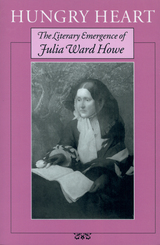 Hungry Heart: The Literary Emergence of Julia Ward Howe
Gary Williams
University of Massachusetts Press, 2009 Hungry Heart reexamines the early literary career of Julia Ward Howe (1819–1910), best remembered as the author of "The Battle Hymn of the Republic." Combining biographical narrative with textual analysis, Gary Williams reconstructs Howe's emergence as a writer against the backdrop of her deeply troubled marriage to Boston philanthropist Samuel Gridley Howe. Among her early writings, Williams pays particular attention to Passion-Flowers, a celebrated yet controversial volume of poems published in 1854, as well as to an unpublished 400-page story that features a hermaphrodite as its protagonist. Williams shows how this latter work, startling in its bold exploration of sexual ambiguities, reflects Howe's effort to come to terms with her husband's intimate attachment to the prominent abolitionist Charles Sumner. The result is a fascinating cultural biography that not only enhances Howe's reputation as a writer but also enriches our understanding of the middle-class world of Victorian New England.
Hungry Hill: A Memoir
Carole O'Malley Gaunt
University of Massachusetts Press, 2007 On a sweltering June night in 1959, Betty O'Malley died from lymphatic cancer, leaving behind an alcoholic husband and eight shell-shocked children—seven sons and one daughter, ranging in age from two to fifteen years. The daughter, Carole, was thirteen at the time. In this poignant memoir, she recalls in vivid detail the chaotic course of her family life over the next four years.
The setting for the story is Hungry Hill, an Irish-Catholic working-class neighborhood in Springfield , Massachusetts . The author recounts her sad and turbulent story with remarkable clarity, humor, and insight, punctuating the narrative with occasional fictional scenes that allow the adult Carole to comment on her teenage experiences and to probe the impact of her mother's death and her father's alcoholism.
Hungry Hill: A Memoir
Carole O'Malley Gaunt
University of Massachusetts Press, 2007 On a sweltering June night in 1959, Betty O'Malley died from lymphatic cancer, leaving behind an alcoholic husband and eight shell-shocked children—seven sons and one daughter, ranging in age from two to fifteen years. The daughter, Carole, was thirteen at the time. In this poignant memoir, she recalls in vivid detail the chaotic course of her family life over the next four years.
The setting for the story is Hungry Hill, an Irish-Catholic working-class neighborhood in Springfield , Massachusetts . The author recounts her sad and turbulent story with remarkable clarity, humor, and insight, punctuating the narrative with occasional fictional scenes that allow the adult Carole to comment on her teenage experiences and to probe the impact of her mother's death and her father's alcoholism.
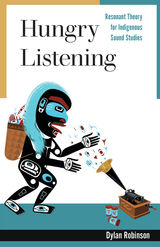 Hungry Listening: Resonant Theory for Indigenous Sound Studies
Dylan Robinson
University of Minnesota Press, 2020 WInner of the Best First Book from the Native American and Indigenous Studies Association
Winner of the Labriola Center American Indian National Book Award
Winner of the Ann Saddlemyer Award from the Canadian Association for Theatre Research
Reimagining how we understand and write about the Indigenous listening experience
Hungry Listening is the first book to consider listening from both Indigenous and settler colonial perspectives. A critical response to what has been called the “whiteness of sound studies,” Dylan Robinson evaluates how decolonial practices of listening emerge from increasing awareness of our listening positionality. This, he argues, involves identifying habits of settler colonial perception and contending with settler colonialism’s “tin ear” that renders silent the epistemic foundations of Indigenous song as history, law, and medicine. With case studies on Indigenous participation in classical music, musicals, and popular music, Hungry Listening examines structures of inclusion that reinforce Western musical values. Alongside this inquiry on the unmarked terms of inclusion in performing arts organizations and compositional practice, Hungry Listening offers examples of “doing sovereignty” in Indigenous performance art, museum exhibition, and gatherings that support an Indigenous listening resurgence. Throughout the book, Robinson shows how decolonial and resurgent forms of listening might be affirmed by writing otherwise about musical experience. Through event scores, dialogic improvisation, and forms of poetic response and refusal, he demands a reorientation toward the act of reading as a way of listening. Indigenous relationships to the life of song are here sustained in writing that finds resonance in the intersubjective experience between listener, sound, and space.
 The Hungry Mind: The Origins of Curiosity in Childhood
Susan Engel
Harvard University Press, 2015 Despite American education’s recent mania for standardized tests, testing misses what really matters about learning: the desire to learn in the first place. Curiosity is vital, but it remains a surprisingly understudied characteristic. The Hungry Mind is a deeply researched, highly readable exploration of what curiosity is, how it can be measured, how it develops in childhood, and how it can be fostered in school.
“Engel draws on the latest social science research and incidents from her own life to understand why curiosity is nearly universal in babies, pervasive in early childhood, and less evident in school…Engel’s most important finding is that most classroom environments discourage curiosity…In an era that prizes quantifiable results, a pedagogy that privileges curiosity is not likely to be a priority.”
—Glenn C. Altschuler, Psychology Today
“Susan Engel’s The Hungry Mind, a book which engages in depth with how our interest and desire to explore the world evolves, makes a valuable contribution not only to the body of academic literature on the developmental and educational psychology of children, but also to our knowledge on why and how we learn.”
—Inez von Weitershausen, LSE Review of Books
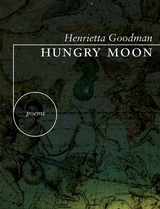 Hungry Moon
Henrietta Goodman
University Press of Colorado, 2013 With intimacy and depth of insight, Henrietta Goodman’s Hungry Moon suggests paradox as the most basic mode of knowing ourselves and the world. We need hunger, the poems argue, but also satisfaction. We need pain to know joy, joy to know pain. We need to protect ourselves, but also to take risks. Though the poems are drawn from personal experience, Goodman shares the conviction of such poets as Anne Sexton and Louise Glück that when the poet writes of the self, the self cannot be exempt from culpability. Goodman’s speaker ranges through time and locale—from exploring the experience of flying in a small plane with her lover/pilot over the landscape of the American West to addressing the grief and retrospective self-scrutiny that arise from a friend’s death. Like the work of Mark Doty and Tony Hoagland, Goodman’s poems embrace concrete particularity, entangled as it is with imperfection and loss: “the Quik Stop’s fridge full of sandwiches and small bottles of livestock vaccines,” “the black, hammer-struck moon of your thumb,” “the empty water tower, one rusted panel kicked in like a door.”
The Hungry Soul: Eating and the Perfecting of Our Nature
Leon R. Kass M.D.
University of Chicago Press, 1999 The Hungry Soul is a fascinating exploration of the natural and cultural act of eating. Kass brilliantly reveals how the various aspects of this phenomenon, and the customs, rituals, and taboos surrounding it, relate to universal and profound truths about the human animal and its deepest yearnings.
"Kass is a distinguished and graceful writer. . . . It is astonishing to discover how different is our world from that of the animals, even in that which most evidently betrays that we too are animals—our need and desire for food."—Roger Scruton, Times Literary Supplement
"Yum."—Miss Manners
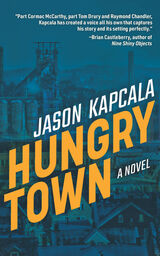 Hungry Town: A Novel
Jason Kapcala
West Virginia University Press, 2022 “A literary page-turner. . . . Part Cormac McCarthy, part Tom Drury and Raymond Chandler, Kapcala has created a voice all his own.” —Brian Castleberry One October night in the depressed steel town of Lodi, Ohio, two police officers respond to a call about trespassers in the derelict Lodi Steel machine shop. A chase through the crumbling cathedral of steel columns launches a chain of events that will test the officers’ partnership and leave a boy to fend for himself in a decaying Rust Belt neighborhood choked by joblessness, boredom, and addiction. On the opposite end of town, a young woman steps out of a rust-bucket Grand Marquis into an all-night diner. Instead of luggage, she carries mementos: an ankh tattoo she inked herself and a wallet-sized photograph of a boy who disappeared. She doesn’t realize her ex-boyfriend has hired two brothers to track her down and bring her back, by any means necessary. The complex female leads of Hungry Town, with its sharp dialogue and poetic sensibility, turn classic noir and cop drama tropes on their heads. These morally complicated characters weave in and out of each other’s lives, sometimes violently, sometimes with surprising compassion.
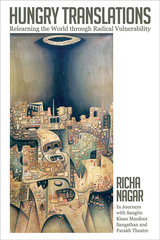 Hungry Translations: Relearning the World through Radical Vulnerability
Richa Nagar
University of Illinois Press, 2019 Experts often assume that the poor, hungry, rural, and/or precarious need external interventions. They frequently fail to recognize how the same people create politics and knowledge by living and honing their own dynamic visions. How might scholars and teachers working in the Global North ethically participate in producing knowledge in ways that connect across different meanings of struggle, hunger, hope, and the good life?Informed by over twenty years of experiences in India and the United States, Hungry Translations bridges these divides with a fresh approach to academic theorizing. Through in-depth reflections on her collaborations with activists, theatre artists, writers, and students, Richa Nagar discusses the ongoing work of building embodied alliances among those who occupy different locations in predominant hierarchies. She argues that such alliances can sensitively engage difference through a kind of full-bodied immersion and translation that refuses comfortable closures or transparent renderings of meanings. While the shared and unending labor of politics makes perfect translation--or retelling--impossible, hungry translations strive to make our knowledges more humble, more tentative, and more alive to the creativity of struggle.
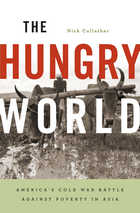 The Hungry World: America’s Cold War Battle against Poverty in Asia
Nick Cullather
Harvard University Press, 2013 Food was a critical front in the Cold War battle for Asia. “Where Communism goes, hunger follows” was the slogan of American nation builders who fanned out into the countryside to divert rivers, remodel villages, and introduce tractors, chemicals, and genes to multiply the crops consumed by millions. This “green revolution” has been credited with averting Malthusian famines, saving billions of lives, and jump-starting Asia’s economic revival. Bono and Bill Gates hail it as a model for revitalizing Africa’s economy. But this tale of science triumphant conceals a half century of political struggle from the Afghan highlands to the rice paddies of the Mekong Delta, a campaign to transform rural societies by changing the way people eat and grow food.
The ambition to lead Asia into an age of plenty grew alongside development theories that targeted hunger as a root cause of war. Scientific agriculture was an instrument for molding peasants into citizens with modern attitudes, loyalties, and reproductive habits. But food policies were as contested then as they are today. While Kennedy and Johnson envisioned Kansas-style agribusiness guarded by strategic hamlets, Indira Gandhi, Marcos, and Suharto inscribed their own visions of progress onto the land.
Out of this campaign, the costliest and most sustained effort for development ever undertaken, emerged the struggles for resources and identity that define the region today. As Obama revives the lost arts of Keynesianism and counter-insurgency, the history of these colossal projects reveals bitter and important lessons for today’s missions to feed a hungry world.
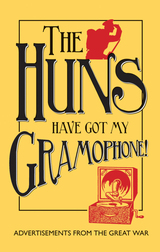 The Huns Have Got my Gramophone!: Advertisements from the Great War
Amanda Jane Doran and Andrew McCarthy
Bodleian Library Publishing, 2014 Fountain Pens—The Super-Pen for Our Super-Men
Ladies! Learn to Drive! Your Country Needs Women Drivers!
Do you drink German water?
When Britain declared war on Germany in 1914, industrious companies wasted no time in seizing the commercial opportunities presented by the conflict. Without TV or radio, newspapers provided one of the few ways in which the British public could get reliable news of the war. To cater to their rising readerships, advertising emerged as the new science of sales, growing increasingly sophisticated throughout the war years in both visual presentation and psychological appeal.
The Huns Have Got my Gramophone! collects some of the most compelling and cleverly worded original advertisements created between 1914 and 1918. Many of the advertisements are aimed at women, from fearless guard dogs promising protection while husbands are away to soaps and skin creams for “beauty on duty.” Others use the power of patriotism to push new products for men, including “officers’ waterproof trench coats,” and one young officer writing in the Times attests to the coats’ superior weather resistance by boldly asserting that he’d leave his sword behind before he left his Burberry. Together, the advertisements collected in the book reveal how advertisers sought to create new markets for products that took into account social change throughout the course of the conflict.
Featuring a range of products, from clothing, cigarettes, and invalid carriages to motorcycles and portable Decca phonographs—the “ideal gramophone for active service”—the book offers a new and unexpected source of historical information and an intimate glimpse of a nation at war.
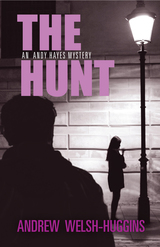 The Hunt: An Andy Hayes Mystery
Andrew Welsh-Huggins
Ohio University Press, 2017 As a serial killer stalks prostitutes in Columbus, Ohio, a distraught brother asks private investigator Andy Hayes to find his sister before it’s too late. In a deadly race against time, Andy soon learns he’s not the only person hunting Jessica Byrnes, but he may be the only one who wants her alive. Byrnes hasn’t been seen in weeks following a downward slide that started as a runaway teenager and may have ended permanently on the streets. Assisting Andy is ex-prostitute Theresa Sullivan. She now works at St. Andrew’s, the mission church run by Andy’s pal the Reverend Roy Roberts, who is less than keen on Theresa reliving the memories that nearly killed her. A local congresswoman making headlines with her work against human trafficking puts pressure on Andy to solve the case, while the police don’t want him near their exhaustive search for the murderer. At the same time, Andy’s hunt for Jessica exposes the buying and selling of trafficked women across the region. Looming over Andy’s increasingly desperate search is the shadow of his most dangerous adversary yet.
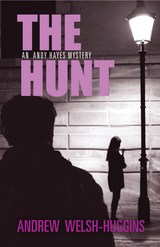 The Hunt: An Andy Hayes Mystery
Andrew Welsh-Huggins
Ohio University Press, 2017 As a serial killer stalks prostitutes in Columbus, Ohio, a distraught brother asks private investigator Andy Hayes to find his sister before it’s too late. In a deadly race against time, Andy soon learns he’s not the only person hunting Jessica Byrnes, but he may be the only one who wants her alive. Byrnes hasn’t been seen in weeks following a downward slide that started as a runaway teenager and may have ended permanently on the streets. Assisting Andy is ex-prostitute Theresa Sullivan. She now works at St. Andrew’s, the mission church run by Andy’s pal the Reverend Roy Roberts, who is less than keen on Theresa reliving the memories that nearly killed her. A local congresswoman making headlines with her work against human trafficking puts pressure on Andy to solve the case, while the police don’t want him near their exhaustive search for the murderer. At the same time, Andy’s hunt for Jessica exposes the buying and selling of trafficked women across the region. Looming over Andy’s increasingly desperate search is the shadow of his most dangerous adversary yet.
 The Hunt for Nazi Spies: Fighting Espionage in Vichy France
Simon Kitson
University of Chicago Press, 2007 From 1940 to 1942, French secret agents arrested more than two thousand spies working for the Germans and executed several dozen of them—all despite the Vichy government’s declared collaboration with the Third Reich. A previously untold chapter in the history of World War II, this duplicitous activity is the gripping subject of The Hunt for Nazi Spies, a tautly narrated chronicle of the Vichy regime’s attempts to maintain sovereignty while supporting its Nazi occupiers.
Simon Kitson informs this remarkable story with findings from his investigation—the first by any historian—of thousands of Vichy documents seized in turn by the Nazis and the Soviets and returned to France only in the 1990s. His pioneering detective work uncovers a puzzling paradox: a French government that was hunting down left-wing activists and supporters of Charles de Gaulle’s Free French forces was also working to undermine the influence of German spies who were pursuing the same Gaullists and resisters. In light of this apparent contradiction, Kitson does not deny that Vichy France was committed to assisting the Nazi cause, but illuminates the complex agendas that characterized the collaboration and shows how it was possible to be both anti-German and anti-Gaullist.
Combining nuanced conclusions with dramatic accounts of the lives of spies on both sides, The Hunt for Nazi Spies adds an important new dimension to our understanding of the French predicament under German occupation and the shadowy world of World War II espionage.
Hunt for Nazis: South America's Dictatorships and the Prosecution of Nazi Crimes
Daniel Stahl
Amsterdam University Press, 2018 Hunt for Nazis is the first comprehensive account of the post-1945 efforts to bring Nazi war criminals who had escaped to South America to justice. The author shows that the Nazi hunt -- which resulted in spectacular cases like the kidnapping of Adolf Eichmann -- should not only be understood as part of the afterlife of the Third Reich, but that it also became an integral aspect of dealing with repression at the hands of authoritarian regimes in South America. Dissidents and human rights activists assumed that the escaped Nazi perpetrators and collaborators continued to be involved in violent crimes in the service of these new dictatorships.
 The Hunt in Arabic Poetry: From Heroic to Lyric to Metapoetic
Jaroslav Stetkevych
University of Notre Dame Press, 2015 Among the world’s major literary traditions, Arabic poetry is perhaps unique in that the theme of the hunt runs in a continuous, if uneven, current from the pre-Islamic, oral tradition, dating as far back as the fifth century CE, through the coming of Islam in the seventh century and the Umayyad and 'Abbasid caliphates, ultimately serving as a classical substrate for the radical Modernism of the twentieth century. This striking continuity of theme and motif of the pursuer—the hunter, companions, his steed, hounds, or falcon—and the pursued, whether the prey be oryx, onager, gazelle, hare, quail, or fox, is subject to dramatic transformations of poetic genre, structure, and sensibility throughout the arc of Arab cultural history. Through elegant translations and compelling interpretations, Jaroslav Stetkevych brings this dynamic Arabic tradition fully into the purview of contemporary cultural and humanistic studies.
In the chapters of Part I of The Hunt in Arabic Poetry, Stetkevych explores the divergent themes of the heroic and the anti-heroic hunter within the grand genre of archaic Arabic odes and its transformation with the transition to Islam to a poetics of sacrifice and redemption. Part II traces the emergent aesthetics of the free-standing hunt lyric within the courtly culture of the Umayyad and ‘Abbasid caliphates and the transition from description to imagism, concluding with the appearance of the long narrative hunt poem. Part III moves to the high Modernism of twentieth-century Arab free-verse poets and with it the reemergence of the classical theme of the hunt, now as a metaphor for the Modernist poet’s metapoetic pursuit of the poem itself.
"Jaroslav Stetkevych's The Hunt in Arabic Poetry is an astounding achievement. Not only does he map the genealogy of the hunt as a poetic preoccupation with a number of thematic and semiotic markers and mechanisms; he also draws a history of cultural complexity through significant temporal signposts that happen to reflect on Arab political and social life. In the end, reading his book is no less than studying Arab cultural history through one significant poetic endeavor that distinguishes it among other cultures." —Muhsin al-Musawi, Columbia University
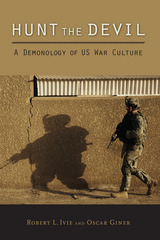 Hunt the Devil: A Demonology of US War Culture
Robert L. Ivie and Oscar Giner
University of Alabama Press, 2015 Hunt the Devil is a timely and illuminating exploration of demonic imagery in US war culture. In it, authors Robert L. Ivie and Oscar Giner examine the origins of the Devil figure in the national psyche and review numerous examples from US history of the demonization of America’s perceived opponents. Their analysis demonstrates that American military deployments are often part of a cycle of mythical projection wherein the Devil repeatedly appears anew and must be exorcised through redemptive acts of war, even at the cost of curtailing democratic values.
Meticulously researched, documented, and argued, Hunt the Devil opens with contemporary images of the US’s global war on terror in the aftermath of 9/11. In five chapters devoted to the demonization of evildoers, witches, Indians, dictators, and Reds by American writers, in presidential rhetoric, and in popular culture, Ivie and Giner show how the use of demonization in the war on terror is only the most recent manifestation of a process that has recurred throughout American history.
In a sixth chapter, the authors introduce the archetype of the Trickster. Though not opposed to the Devil per se, the Trickster’s democratic impulses have often provided a corrective antidote to the corrosive and distorting effects of demonization. Invoking the framework of Carl Jung’s shadow aspect, Hunt the Devil offers the Trickster as a figure who can break the cycle of demonization and war.
The role of the mythic Devil in the American psyche has profound implications, not just for American diplomacy and the use of American arms in the world, but for the possibility of domestic peace within an increasingly diverse society. Hunt the Devil provides much of interest to readers and scholars in the fields of war, rhetorical studies, American Studies, US political culture, Jungian psychology, and mythography.
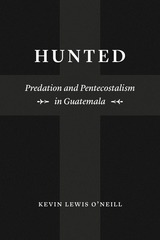 Hunted: Predation and Pentecostalism in Guatemala
Kevin Lewis O'Neill
University of Chicago Press, 2019 “It’s not a process,” one pastor insisted, “rehabilitation is a miracle.” In the face of addiction and few state resources, Pentecostal pastors in Guatemala City are fighting what they understand to be a major crisis. Yet the treatment centers they operate produce this miracle of rehabilitation through extraordinary means: captivity. These men of faith snatch drug users off the streets, often at the request of family members, and then lock them up inside their centers for months, sometimes years.
Hunted is based on more than ten years of fieldwork among these centers and the drug users that populate them. Over time, as Kevin Lewis O’Neill engaged both those in treatment and those who surveilled them, he grew increasingly concerned that he, too, had become a hunter, albeit one snatching up information. This thoughtful, intense book will reframe the arc of redemption we so often associate with drug rehabilitation, painting instead a seemingly endless cycle of hunt, capture, and release.
 The Hunter: A Parker Novel
Richard Stark
University of Chicago Press, 1962 Where it all begins: The first book in the action-packed classic crime series that's the basis for the forthcoming film Play Dirty!
Richard Stark's Parker novels are the hardest of hard-boiled, classic crime novels where the heists are huge, the body counts are high, and the bad guys usually win.
The Parker novels have been a huge influence on countless writers and filmmakers, including Quentin Tarantino, Stephen King, George Pelecanos, Colson Whitehead, Lucy Sante, John Banville, and many more. Their stripped-down language and hard-as-nails amorality create an unforgettable world where the next score could be the big one, but your next mistake could also be your last. There's nothing else like them.
The Hunter is where it all begin. It opens with Parker's woman shooting him just above the belt and leaving him for dead. She and his partner torch the house, with Parker in it, and take the money he had helped them steal. It all went down just the way they'd planned, except for one thing: Parker didn't die.
From there, our ruthless antihero roars into New York City, seeking revenge on the woman who betrayed him and on the man who took his money, stealing and scamming his way to redemption. The volume that kickstarted Parker's half-century career of larceny—and inspired the classic 1967 motion picture Point Blank, starring Lee Marvin—The Hunter is as thrilling today as it was when it was first published. Pick up your first Parker novel and you won't stop until you're read them all.
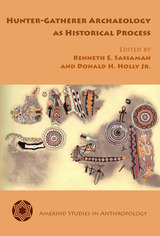 Hunter-Gatherer Archaeology as Historical Process
Edited by Kenneth E. Sassaman and Donald H. Holly Jr.
University of Arizona Press, 2011 The remains of hunter-gatherer groups are the most commonly discovered archaeological resources in the world, and their study constitutes much of the archaeological research done in North America. In spite of paradigm-shifting discoveries elsewhere in the world that may indicate that hunter-gatherer societies were more complex than simple remnants of a prehistoric past, North American archaeology by and large hasn’t embraced these theories, instead maintaining its general neoevolutionary track. This book will change that.
Combining the latest empirical studies of archaeological practice with the latest conceptual tools of anthropological and historical theory, this volume seeks to set a new course for hunter-gatherer archaeology by organizing the chapters around three themes. The first section offers diverse views of the role of human agency, challenging the premise that hunter-gatherer societies were bound by their interactions with the natural world. The second section considers how society and culture are constituted. Chapters in the final section take the long view of the historical process, examining how cultural diversity arises out of interaction and the continuity of ritual practices.
A closing commentary by H. Martin Wobst underscores the promise of an archaeology of foragers that does not associate foraging with any particular ideology or social structure but instead invites inquiry into counterintuitive alternatives. Hunter-Gatherer Archaeology as Historical Process seeks to blur the divisions between prehistory and history, between primitive and modern, and between hunter-gatherers and people in other societies. Because it offers alternatives to the dominant discourse and contributes to the agenda of hunter-gatherer research, this book will be of interest to anyone involved in the study of foraging peoples.
|
|
